 Search by Keyword
|
“LET IT BE”
(John Lennon – Paul McCartney)
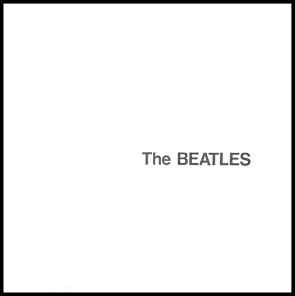 Fans may not have known it at the time, but in early September of 1968, Paul recognized that The Beatles were having some major difficulties and sensed that the end was imminent. The Beatles had been recording the “White Album” for over three months with tensions mounting and arguments abounding. With John's drug use at an all-time high, and with him having Yoko by his side at virtually every session, it became apparent that the band no longer shared a united vision for the future. As detailed in the “Beatles Anthology” book, George even went on record as saying that he “was losing interest in being 'fab'...I was growing out of that kind of thing.” Fans may not have known it at the time, but in early September of 1968, Paul recognized that The Beatles were having some major difficulties and sensed that the end was imminent. The Beatles had been recording the “White Album” for over three months with tensions mounting and arguments abounding. With John's drug use at an all-time high, and with him having Yoko by his side at virtually every session, it became apparent that the band no longer shared a united vision for the future. As detailed in the “Beatles Anthology” book, George even went on record as saying that he “was losing interest in being 'fab'...I was growing out of that kind of thing.”
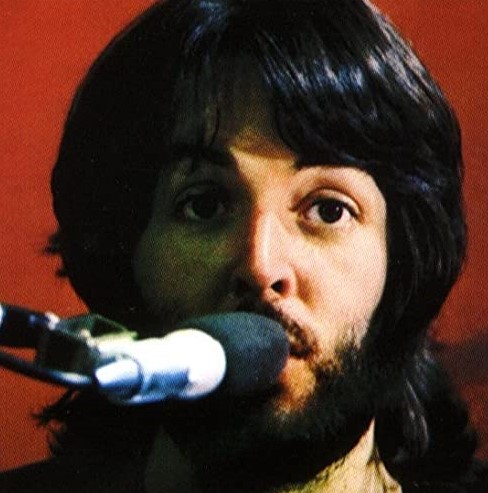 Paul, however, believed in The Beatles. He found himself on what he thought was a steady course with his band-mates, only to look around and realize that he was on that road alone. He felt that, with concerted effort, he could use his gifts of persuasion to rally the troups back together and bring them to their senses, aiming them in the unified direction they had been following for the past decade. And this did appear to work for a time, but with three unenthusiastic participants contributing somewhat reluctantly. Paul, however, believed in The Beatles. He found himself on what he thought was a steady course with his band-mates, only to look around and realize that he was on that road alone. He felt that, with concerted effort, he could use his gifts of persuasion to rally the troups back together and bring them to their senses, aiming them in the unified direction they had been following for the past decade. And this did appear to work for a time, but with three unenthusiastic participants contributing somewhat reluctantly.
 Despite McCartney's struggle to keep things going, as all Beatles fans desired, he eventually had no choice but to admit defeat. After all, if your associates wish not to continue as associates, there's not much you can do about it. With this realization in mind, and having been propelled as he was by a dream to help him come to that conclusion, Paul wrote one of the most beloved and iconic Beatles songs of their career. It may not have been released until after the inevitible disolving of the band but, in retrospect, the timing couldn't have been better. With the breaking-up of the greatest and most popular music group in the world being officially anounced in early 1970, the world was consoled in song. We were all told to, simply, just “Let It Be.” Despite McCartney's struggle to keep things going, as all Beatles fans desired, he eventually had no choice but to admit defeat. After all, if your associates wish not to continue as associates, there's not much you can do about it. With this realization in mind, and having been propelled as he was by a dream to help him come to that conclusion, Paul wrote one of the most beloved and iconic Beatles songs of their career. It may not have been released until after the inevitible disolving of the band but, in retrospect, the timing couldn't have been better. With the breaking-up of the greatest and most popular music group in the world being officially anounced in early 1970, the world was consoled in song. We were all told to, simply, just “Let It Be.”
Songwriting History
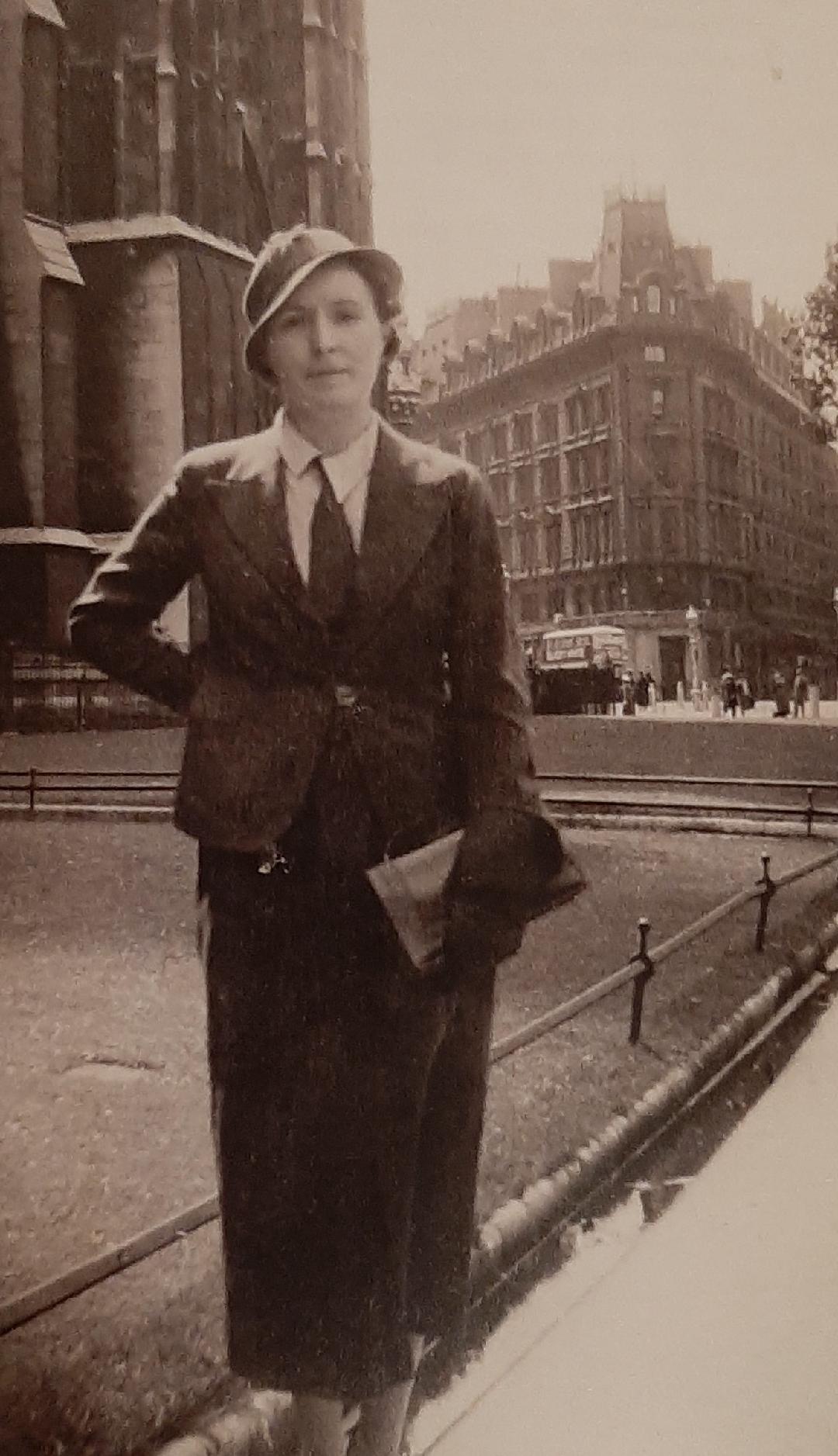 On October 31st, 1956, Paul's mother Mary Patricia McCartney had passed away from breast cancer. “I would have liked to have seen the boys growing up” was one of the last things she had said on that day. “She was great,” Paul relates in his book “Many Years From Now.” “She was a really wonderful woman and really did pull the family along, which is probably why in the end she dies of a stress-related illness. She was, as so many woman are, the unsung leader of the family.” On October 31st, 1956, Paul's mother Mary Patricia McCartney had passed away from breast cancer. “I would have liked to have seen the boys growing up” was one of the last things she had said on that day. “She was great,” Paul relates in his book “Many Years From Now.” “She was a really wonderful woman and really did pull the family along, which is probably why in the end she dies of a stress-related illness. She was, as so many woman are, the unsung leader of the family.”
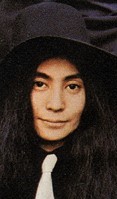 “This was a very difficult period,” Paul continues, referring to the emotional climate of early September 1968. "John was with Yoko full time, and our relationship was beginning to crumble: John and I were going through a very tense period. The breakup of The Beatles was looming and I was very nervy. Personally it was a very difficult time for me. I think the drugs, the stress, tiredness and everything had really started to take its toll. I somehow managed to miss a lot of the bad effects of all that, but looking back on this period, I think I was having troubles." In his 2021 book "The Lyrics," Paul adds: "Yoko was literally in the middle of the recording session, and that was challenging. But it was also something we had to deal with. Unless there was a really serious problem - unless one of us said, 'I can't sing with her there' - we just had to let it be. We weren't very confrontational, so we just bottled it up and got on with it. We were northern lads, and that was part of our culture. Grin and bear it." “This was a very difficult period,” Paul continues, referring to the emotional climate of early September 1968. "John was with Yoko full time, and our relationship was beginning to crumble: John and I were going through a very tense period. The breakup of The Beatles was looming and I was very nervy. Personally it was a very difficult time for me. I think the drugs, the stress, tiredness and everything had really started to take its toll. I somehow managed to miss a lot of the bad effects of all that, but looking back on this period, I think I was having troubles." In his 2021 book "The Lyrics," Paul adds: "Yoko was literally in the middle of the recording session, and that was challenging. But it was also something we had to deal with. Unless there was a really serious problem - unless one of us said, 'I can't sing with her there' - we just had to let it be. We weren't very confrontational, so we just bottled it up and got on with it. We were northern lads, and that was part of our culture. Grin and bear it."
 Paul continues: "One night during this tense time, I had a dream. I saw my mum, who'd been dead ten years or so. And it was so great to see her because that's a wonderful thing about dreams: you actually are reunited with that person for a second; there they are and you appear to both be physically together again. It was so wonderful for me and she was very reassuring. In the dream she said, 'It'll be all right.' I'm not sure if she used the words 'Let it be' but that was the gist of her advice. It was, 'Don't worry too much, it will turn out okay.' It was such a sweet dream. I woke up thinking, 'Oh, it was really great to visit with her again.' I felt very blessed to have that dream. So that got me writing the song 'Let It Be.' I literally started off 'Mother Mary,' which was her name. 'When I find myself in times of trouble,' which I certainly found myself in. The song was based on that dream." Paul continues: "One night during this tense time, I had a dream. I saw my mum, who'd been dead ten years or so. And it was so great to see her because that's a wonderful thing about dreams: you actually are reunited with that person for a second; there they are and you appear to both be physically together again. It was so wonderful for me and she was very reassuring. In the dream she said, 'It'll be all right.' I'm not sure if she used the words 'Let it be' but that was the gist of her advice. It was, 'Don't worry too much, it will turn out okay.' It was such a sweet dream. I woke up thinking, 'Oh, it was really great to visit with her again.' I felt very blessed to have that dream. So that got me writing the song 'Let It Be.' I literally started off 'Mother Mary,' which was her name. 'When I find myself in times of trouble,' which I certainly found myself in. The song was based on that dream."
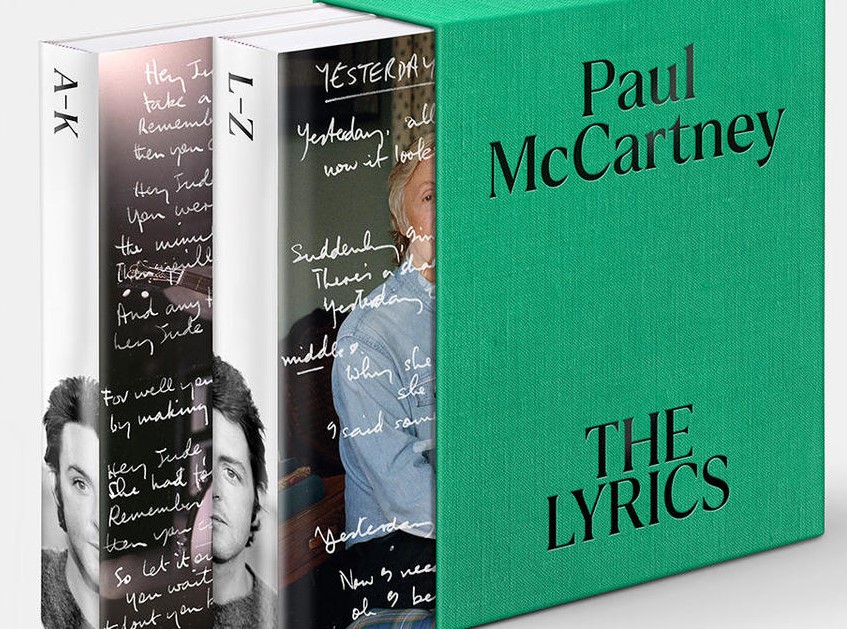 In "The Lyrics," Paul adds: "Seeing my mum's beautiful, kind face and being with her in a peachful place was very comforting. I immediately felt at ease, and loved and protected. My mum was very reassuring and, like so many women often are, she was also the one who kept our family going. She kept our spirits up. She seemed to realize I was worried about what was going on in my life and what would happen, and she said to me, 'Everything will be all right. Let it be.'" In "The Lyrics," Paul adds: "Seeing my mum's beautiful, kind face and being with her in a peachful place was very comforting. I immediately felt at ease, and loved and protected. My mum was very reassuring and, like so many women often are, she was also the one who kept our family going. She kept our spirits up. She seemed to realize I was worried about what was going on in my life and what would happen, and she said to me, 'Everything will be all right. Let it be.'"
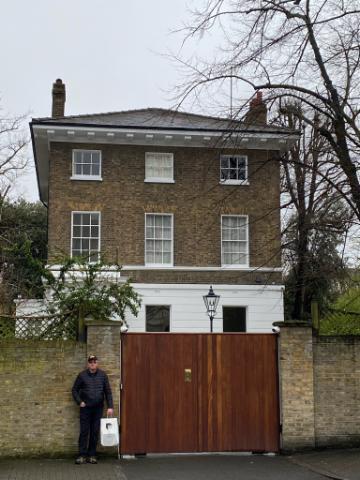 Paul's concerns about The Beatles' future were caught on tape during the filming of the “Let It Be” movie: “I think we've been very negative since (Beatles manager) Mr. Epstein passed way. We haven't been positive. That's why all of us in turn have been sick of the group. There's nothing positive in it. It's a bit of a drag. The only way for it not to be a bit of a drag is for the four of us to think – should we make it positive or should we forget it?” Concerning the writing of the song “Let It Be,” which occurred at McCartney's 7 Cavendish Avenue home in St. John's Wood, London, Paul continues in Steve Turner's book “A Hard Day's Write” as follows: "I wrote it when all those business problems started to get me down. I really was passing through my 'hour of darkness' and writing the song was my way of exorcizing the ghosts." In "The Lyrics," Paul writes: "I'd been pushing the band to go back out and play some club dates - to get back to basics and just bond again as a band, end the decade like we'd begun it, just playing for the love of it." Paul's concerns about The Beatles' future were caught on tape during the filming of the “Let It Be” movie: “I think we've been very negative since (Beatles manager) Mr. Epstein passed way. We haven't been positive. That's why all of us in turn have been sick of the group. There's nothing positive in it. It's a bit of a drag. The only way for it not to be a bit of a drag is for the four of us to think – should we make it positive or should we forget it?” Concerning the writing of the song “Let It Be,” which occurred at McCartney's 7 Cavendish Avenue home in St. John's Wood, London, Paul continues in Steve Turner's book “A Hard Day's Write” as follows: "I wrote it when all those business problems started to get me down. I really was passing through my 'hour of darkness' and writing the song was my way of exorcizing the ghosts." In "The Lyrics," Paul writes: "I'd been pushing the band to go back out and play some club dates - to get back to basics and just bond again as a band, end the decade like we'd begun it, just playing for the love of it."
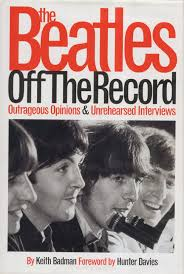 Interestingly, roadie and companion Mal Evans recalled a conversation he had with Paul that presents a convincing alternative story about the origin of “Let It Be.” In an interview with Laura Gross on November 29th, 1975 (a week before his death), Mal Evans related a conversation he had with Paul concerning a rough sketch of a song he began to write during The Beatles' stay in India in the early months of 1968. In Keith Badman's book “The Beatles Off The Record,” Mal recounts: "Paul was meditating one day, they were writing all the time, and I came to him in a vision. I was just standing there, saying, 'Let it be, let it be,' and that's where the song came from. It was funny; I had driven him back from a session one night a few months later. It was three o-clock in the morning, it was raining, it was dark in London and we were sitting in the car, just before he went in, just laughing and talking. He said, 'Mal, I've got a new song and it's called “Let It Be,” and I sing about 'Mother Malcolm,' but he was a bit shy. So, he turned to me and said, 'Would you mind if I said, “Mother Mary,” because people might not understand?' So, I said, 'Sure.' But, he was lovely." It was at this time that he may have concocted the story of the vision of his mother's dream to tell the world about the inspiration to the song "Let It Be." Interestingly, roadie and companion Mal Evans recalled a conversation he had with Paul that presents a convincing alternative story about the origin of “Let It Be.” In an interview with Laura Gross on November 29th, 1975 (a week before his death), Mal Evans related a conversation he had with Paul concerning a rough sketch of a song he began to write during The Beatles' stay in India in the early months of 1968. In Keith Badman's book “The Beatles Off The Record,” Mal recounts: "Paul was meditating one day, they were writing all the time, and I came to him in a vision. I was just standing there, saying, 'Let it be, let it be,' and that's where the song came from. It was funny; I had driven him back from a session one night a few months later. It was three o-clock in the morning, it was raining, it was dark in London and we were sitting in the car, just before he went in, just laughing and talking. He said, 'Mal, I've got a new song and it's called “Let It Be,” and I sing about 'Mother Malcolm,' but he was a bit shy. So, he turned to me and said, 'Would you mind if I said, “Mother Mary,” because people might not understand?' So, I said, 'Sure.' But, he was lovely." It was at this time that he may have concocted the story of the vision of his mother's dream to tell the world about the inspiration to the song "Let It Be."
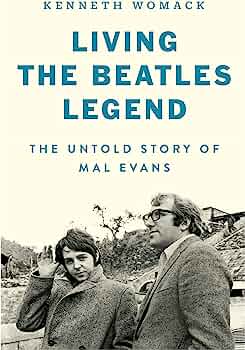 While a good portion of the songs Paul composed in India during his stay in the early months of 1968 were well formed at that time or shortly thereafter, it appears that his vision of Mal Evans repeating the comforting words "let it be" "after many hours of uninterrupted meditation," as depicted in Kenneth Womack's book "Living The Beatles Legend: The Untold Story Of Mal Evans," didn't begin developing into a song until many months later. As brought out in this book, on August 21st, 1968 at EMI Studios during the recording of "Sexy Sadie," "Paul sat at the studio piano and regaled Mal with a snippet from 'Let It Be,' the dream song that he had begun composing back in Rishikesh. Paul had previously sung the tune's rudimentary lyrics to him...but this was different. For the roadie, it was thrilling to hear the then lines 'When I find myself in time of trouble, Mother Malcolm comes to me / whispers words of wisdom, let it be." While a good portion of the songs Paul composed in India during his stay in the early months of 1968 were well formed at that time or shortly thereafter, it appears that his vision of Mal Evans repeating the comforting words "let it be" "after many hours of uninterrupted meditation," as depicted in Kenneth Womack's book "Living The Beatles Legend: The Untold Story Of Mal Evans," didn't begin developing into a song until many months later. As brought out in this book, on August 21st, 1968 at EMI Studios during the recording of "Sexy Sadie," "Paul sat at the studio piano and regaled Mal with a snippet from 'Let It Be,' the dream song that he had begun composing back in Rishikesh. Paul had previously sung the tune's rudimentary lyrics to him...but this was different. For the roadie, it was thrilling to hear the then lines 'When I find myself in time of trouble, Mother Malcolm comes to me / whispers words of wisdom, let it be."
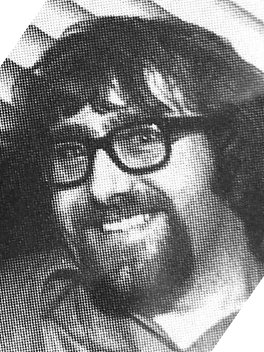 The above events can also be corroborated by the rough early demo of the song that Paul led The Beatles through on September 5th, 1968, in-between takes of recording “While My Guitar Gently Weeps.” During this early impromptu rendition, which was featured in the “Super Deluxe” 50th Anniversary “White Album” box set, we hear Paul twice sing “Mother Malcolm comes to me” instead of “Mother Mary,” just as Mal Evans described. This could easily lead one to challenge whether Paul's recollections about the dream of his mother telling him to “let it be” was accurate or not. It's amazing how the mind can sometimes convince us of something that may, in fact, not have happened, such as Paul receiving a dream of his mother when it was in actuality was about Mal Evans! In any event, it appears that the beginnings of the composition of the song "Let It Be" was during Paul's stay in India between February 20th and March 26th, 1968. The above events can also be corroborated by the rough early demo of the song that Paul led The Beatles through on September 5th, 1968, in-between takes of recording “While My Guitar Gently Weeps.” During this early impromptu rendition, which was featured in the “Super Deluxe” 50th Anniversary “White Album” box set, we hear Paul twice sing “Mother Malcolm comes to me” instead of “Mother Mary,” just as Mal Evans described. This could easily lead one to challenge whether Paul's recollections about the dream of his mother telling him to “let it be” was accurate or not. It's amazing how the mind can sometimes convince us of something that may, in fact, not have happened, such as Paul receiving a dream of his mother when it was in actuality was about Mal Evans! In any event, it appears that the beginnings of the composition of the song "Let It Be" was during Paul's stay in India between February 20th and March 26th, 1968.
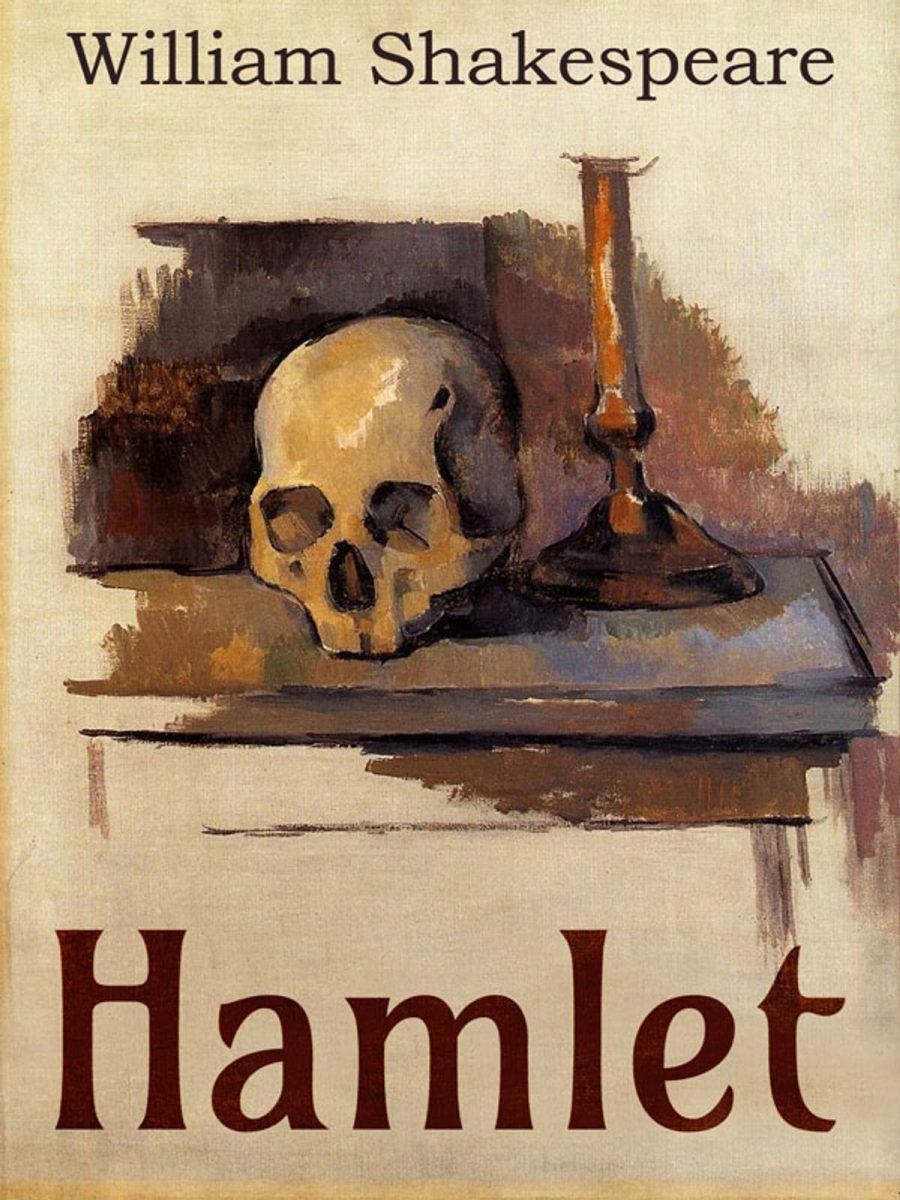 Concerning the song's title, Paul relates in his book "The Lyrics" that this may have been a subliminal recollection from his past. "One interesting thing about 'Let It Be' that I was reminded of only recently is that, while I was studying English literature at the Liverpool Institute High School for Boys with my favorite teacher, Alan Durband, I read 'Hamlet.' In those days you had to learn speeches by heart because you had to be able to carry them into the exam and quote them. There are a couple of lines from late in the play: 'O, I could tell you - But let it be. - Horatio, I am dead." I suspect those lines had subconsciously planted themselves in my memory." Concerning the song's title, Paul relates in his book "The Lyrics" that this may have been a subliminal recollection from his past. "One interesting thing about 'Let It Be' that I was reminded of only recently is that, while I was studying English literature at the Liverpool Institute High School for Boys with my favorite teacher, Alan Durband, I read 'Hamlet.' In those days you had to learn speeches by heart because you had to be able to carry them into the exam and quote them. There are a couple of lines from late in the play: 'O, I could tell you - But let it be. - Horatio, I am dead." I suspect those lines had subconsciously planted themselves in my memory."
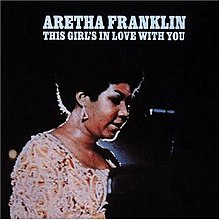 At any rate, Paul chose to present the song with a gospel flare, although his upbringing was anything but religious. “My mother was Catholic,” Paul relates in “Many Years From Now,” “and she had me and my brother christened but that was the only religious thing we went through other than school, and occasional visits to church, where I sang in a surpliced choir.” During rehearsals of the song on January 9th, 1969, George Harrison suggested that, since it had a gospel feel, Paul should present it to Aretha Franklin for her to record. "Do it AND give it to her," Paul responded. "As soon as we've got it, then we should get the tapes and do a rough demo when it's the first rehearsal. It'd be great for Aretha Franklin, that number." In the book contained in the Anniversary edition of the album "Let It Be," Paul elaborated: "What I used to like to do was think who would I really like to do this so, if we weren't jealously guarding a song for some reason, I would get an early version to people I would love to record it. I sent 'Let It Be' to Aretha Franklin." This resulted in her rendition of the song being included on her “This Girl's In Love With You” album that was released on January 15th, 1970, nearly two months prior to The Beatles' released version. At any rate, Paul chose to present the song with a gospel flare, although his upbringing was anything but religious. “My mother was Catholic,” Paul relates in “Many Years From Now,” “and she had me and my brother christened but that was the only religious thing we went through other than school, and occasional visits to church, where I sang in a surpliced choir.” During rehearsals of the song on January 9th, 1969, George Harrison suggested that, since it had a gospel feel, Paul should present it to Aretha Franklin for her to record. "Do it AND give it to her," Paul responded. "As soon as we've got it, then we should get the tapes and do a rough demo when it's the first rehearsal. It'd be great for Aretha Franklin, that number." In the book contained in the Anniversary edition of the album "Let It Be," Paul elaborated: "What I used to like to do was think who would I really like to do this so, if we weren't jealously guarding a song for some reason, I would get an early version to people I would love to record it. I sent 'Let It Be' to Aretha Franklin." This resulted in her rendition of the song being included on her “This Girl's In Love With You” album that was released on January 15th, 1970, nearly two months prior to The Beatles' released version.
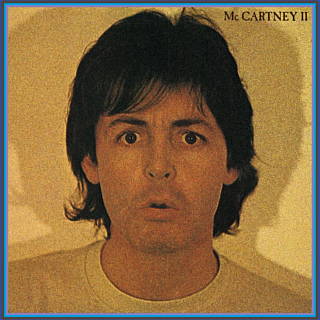 Lyrically, Paul extended the subject matter beyond the problems within The Beatles to the world in general, “Let It Be” becoming a song of hope for the downtrodden. “The broken hearted people” who “may be parted” from loved ones, possibly in death, can be encouraged that “there will be an answer” of comfort, possibly alluding to the afterlife or heaven. The “light that shines on me” can either be interpreted as faith and hope in this life or the light that is commonly referred to as being seen during near-death experiences. Either way, the lyrics are left vague enough to remain open to interpretation, which is characteristic of a well-written song that everyone can relate to, regardless of race, creed or ideology. Lyrically, Paul extended the subject matter beyond the problems within The Beatles to the world in general, “Let It Be” becoming a song of hope for the downtrodden. “The broken hearted people” who “may be parted” from loved ones, possibly in death, can be encouraged that “there will be an answer” of comfort, possibly alluding to the afterlife or heaven. The “light that shines on me” can either be interpreted as faith and hope in this life or the light that is commonly referred to as being seen during near-death experiences. Either way, the lyrics are left vague enough to remain open to interpretation, which is characteristic of a well-written song that everyone can relate to, regardless of race, creed or ideology.
 The reference to “Mother Mary” appears to have been inserted intentionally for this very reason. “'Mother Mary' makes it a quasi-religious thing,” Paul continues in “Many Years From Now,” "so you can take it that way. I don't mind. I'm quite happy if people want to use it to shore up their faith. I have no problem with that. I think it's a great thing to have faith of any sort, particularly in the world we live in...Looking back on all the Beatles' work, I'm very glad that most of it was positive and has been a positive force. I always find it very fortunate that most of our songs were to do with peace and love, and encourage people to do better and to have a better life. When you come to do these songs in places like the stadium in Santiago where all the dissidents were rounded up, I'm very glad to have these songs because they're such symbols of optimism and hopefulness." In "The Lyrics," Paul adds: "So, this song becomes a prayer, or mini-prayer. There's a yearning somewhere at its heart. And the word 'amen' itself means 'so be it' - or 'let it be.'" The reference to “Mother Mary” appears to have been inserted intentionally for this very reason. “'Mother Mary' makes it a quasi-religious thing,” Paul continues in “Many Years From Now,” "so you can take it that way. I don't mind. I'm quite happy if people want to use it to shore up their faith. I have no problem with that. I think it's a great thing to have faith of any sort, particularly in the world we live in...Looking back on all the Beatles' work, I'm very glad that most of it was positive and has been a positive force. I always find it very fortunate that most of our songs were to do with peace and love, and encourage people to do better and to have a better life. When you come to do these songs in places like the stadium in Santiago where all the dissidents were rounded up, I'm very glad to have these songs because they're such symbols of optimism and hopefulness." In "The Lyrics," Paul adds: "So, this song becomes a prayer, or mini-prayer. There's a yearning somewhere at its heart. And the word 'amen' itself means 'so be it' - or 'let it be.'"
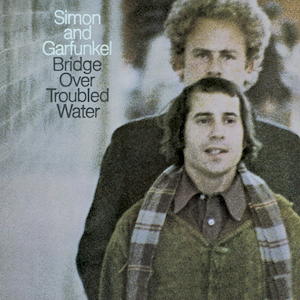 Even though this is considered a “Lennon / McCartney” composition, John has distanced himself from “Let It Be.” “That's Paul's totally,” he told Playboy magazine in 1980. “It had nothing to do with The Beatles. It could have been Wings. I think he was inspired by 'Bridge Over Troubled Water.' He wanted to write one...I don't know what he's thinking when he writes 'Let It Be.'” This Simon & Garfunkel song wasn't released until nearly one-and-a-half years after “Let It Be” was written, but John's point is well taken. Lennon desired the January 1969 sessions to produce “fast ones,” referring to rock and roll songs as they had been known to perform in their early years. Even though this is considered a “Lennon / McCartney” composition, John has distanced himself from “Let It Be.” “That's Paul's totally,” he told Playboy magazine in 1980. “It had nothing to do with The Beatles. It could have been Wings. I think he was inspired by 'Bridge Over Troubled Water.' He wanted to write one...I don't know what he's thinking when he writes 'Let It Be.'” This Simon & Garfunkel song wasn't released until nearly one-and-a-half years after “Let It Be” was written, but John's point is well taken. Lennon desired the January 1969 sessions to produce “fast ones,” referring to rock and roll songs as they had been known to perform in their early years.
Recording History
 The first appearance of the newly written “Let It Be” in the recording studio was on September 5th, 1968, as mentioned above. While perfecting George's “While My Guitar Gently Weeps” in EMI Studio Two with Eric Clapton present as lead guitarist, Paul took advantage of some downtime between takes to fool around with “Let It Be.” Engineer John Smith, not knowing how to identify this amusing new ad lib, simply wrote “Ad Lib” on the tape box. The first appearance of the newly written “Let It Be” in the recording studio was on September 5th, 1968, as mentioned above. While perfecting George's “While My Guitar Gently Weeps” in EMI Studio Two with Eric Clapton present as lead guitarist, Paul took advantage of some downtime between takes to fool around with “Let It Be.” Engineer John Smith, not knowing how to identify this amusing new ad lib, simply wrote “Ad Lib” on the tape box.
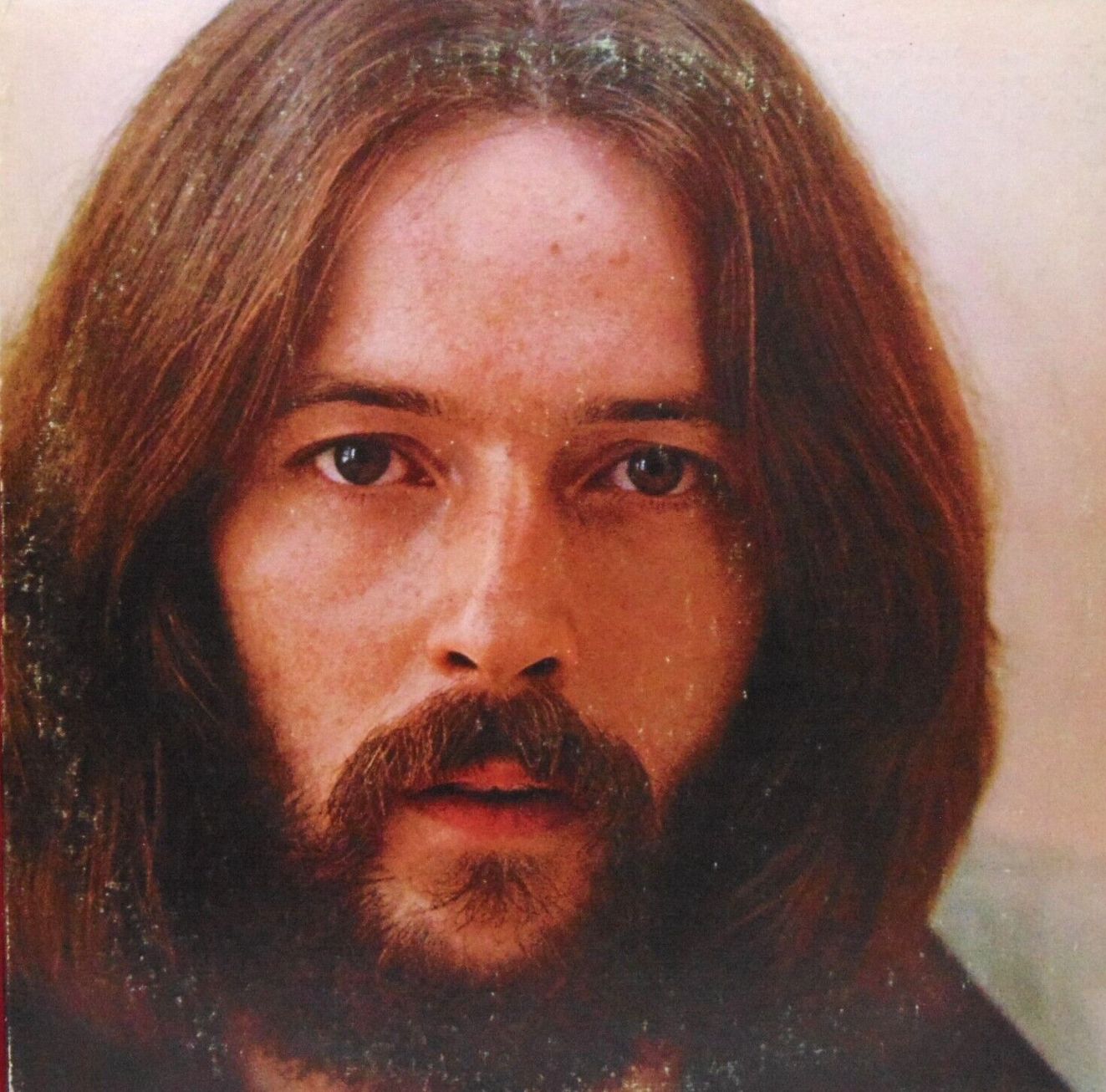 Paul wasn't bothering to teach them the chords or officially run them through a true rehearsal of the song at this time since the focus of that session was to give George's composition the attention it deserved. George specifically invited Eric Clapton on that day because he felt his bandmates weren't focused enough to record his song properly. If Paul would have started taking over the session by seriously leading The Beatles through a new song he had just written in the last few days, George possibly would have been even more perturbed. Paul wasn't bothering to teach them the chords or officially run them through a true rehearsal of the song at this time since the focus of that session was to give George's composition the attention it deserved. George specifically invited Eric Clapton on that day because he felt his bandmates weren't focused enough to record his song properly. If Paul would have started taking over the session by seriously leading The Beatles through a new song he had just written in the last few days, George possibly would have been even more perturbed.
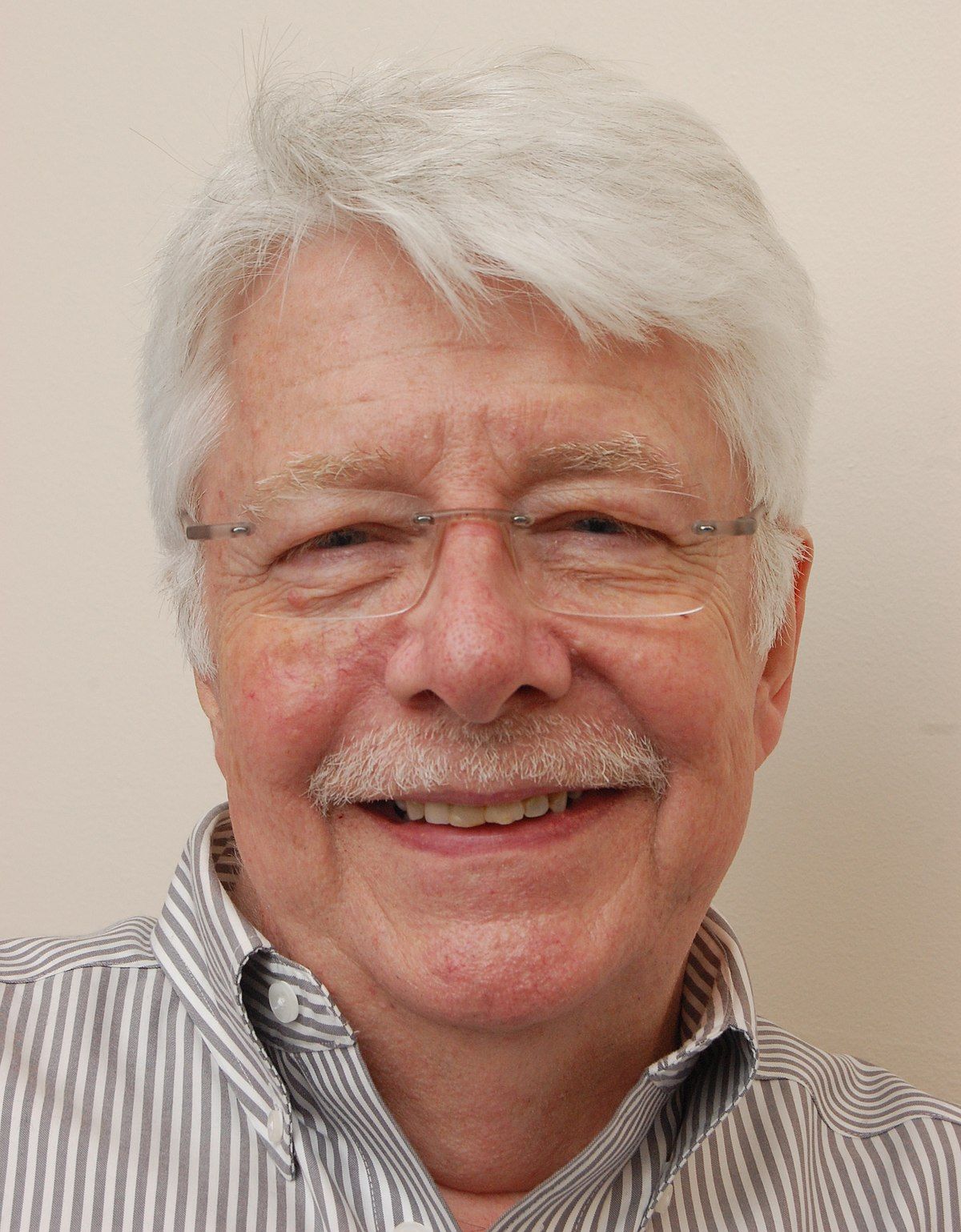 In fact, when George witnessed Eric joining in on guitar for this ad lib of Paul's new song, he reeled everyone back in for the task at hand. George broke up the ad lib of “Let It Be” by saying, “Should we do one just a slight slower? Ok, roll it Ken (Scott), roll it. Make a note of this one 'cause this is the one. Cans on, Eric!” Shortly after Eric Clapton proceeded to put his headphones back on, they recorded the definitive rhythm track for “While My Guitar Gently Weeps” as we've come to know it. In fact, when George witnessed Eric joining in on guitar for this ad lib of Paul's new song, he reeled everyone back in for the task at hand. George broke up the ad lib of “Let It Be” by saying, “Should we do one just a slight slower? Ok, roll it Ken (Scott), roll it. Make a note of this one 'cause this is the one. Cans on, Eric!” Shortly after Eric Clapton proceeded to put his headphones back on, they recorded the definitive rhythm track for “While My Guitar Gently Weeps” as we've come to know it.
 The instrumentation on this embryonic rehearsal of “Let It Be” was Paul on piano and lead vocals, John on organ and backing vocals (humorously repeating the phrase “let it be” in imitation of Paul), Ringo on drums and Eric Clapton fumbling through some lead guitar lines. Paul's lyrics went as far as including the lines “When I find myself in times of trouble / Brother Malcolm comes to me / whispering words of wisom / let it be.” As detailed above, this is a reference to Beatles associate Mal Evans, this lyrical insertion being remembered by the other Beatles in later months when they were officially working on the song. The instrumentation on this embryonic rehearsal of “Let It Be” was Paul on piano and lead vocals, John on organ and backing vocals (humorously repeating the phrase “let it be” in imitation of Paul), Ringo on drums and Eric Clapton fumbling through some lead guitar lines. Paul's lyrics went as far as including the lines “When I find myself in times of trouble / Brother Malcolm comes to me / whispering words of wisom / let it be.” As detailed above, this is a reference to Beatles associate Mal Evans, this lyrical insertion being remembered by the other Beatles in later months when they were officially working on the song.
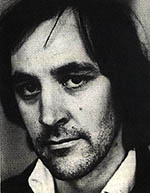 Then, two weeks later, on September 19th, 1968, The Beatles were in EMI Studio One recording George's song “Piggies” when “Let It Be” was heard for the second time. “There were a couple of other songs around at the time,” producer Chris Thomas recounts in the book “The Beatles Recording Sessions.” “Paul was running through 'Let It Be' between takes.” McCartney had apparently fleshed out a little more of the lyrics in the past two weeks and thought to play through it on piano during a lull in the session. He apparently didn't feel comfortable enough with the song for inclusion on the “White Album,” unlike “Martha My Dear,” which was written and quickly recorded in October of 1968 for inclusion on the LP. Then, two weeks later, on September 19th, 1968, The Beatles were in EMI Studio One recording George's song “Piggies” when “Let It Be” was heard for the second time. “There were a couple of other songs around at the time,” producer Chris Thomas recounts in the book “The Beatles Recording Sessions.” “Paul was running through 'Let It Be' between takes.” McCartney had apparently fleshed out a little more of the lyrics in the past two weeks and thought to play through it on piano during a lull in the session. He apparently didn't feel comfortable enough with the song for inclusion on the “White Album,” unlike “Martha My Dear,” which was written and quickly recorded in October of 1968 for inclusion on the LP.
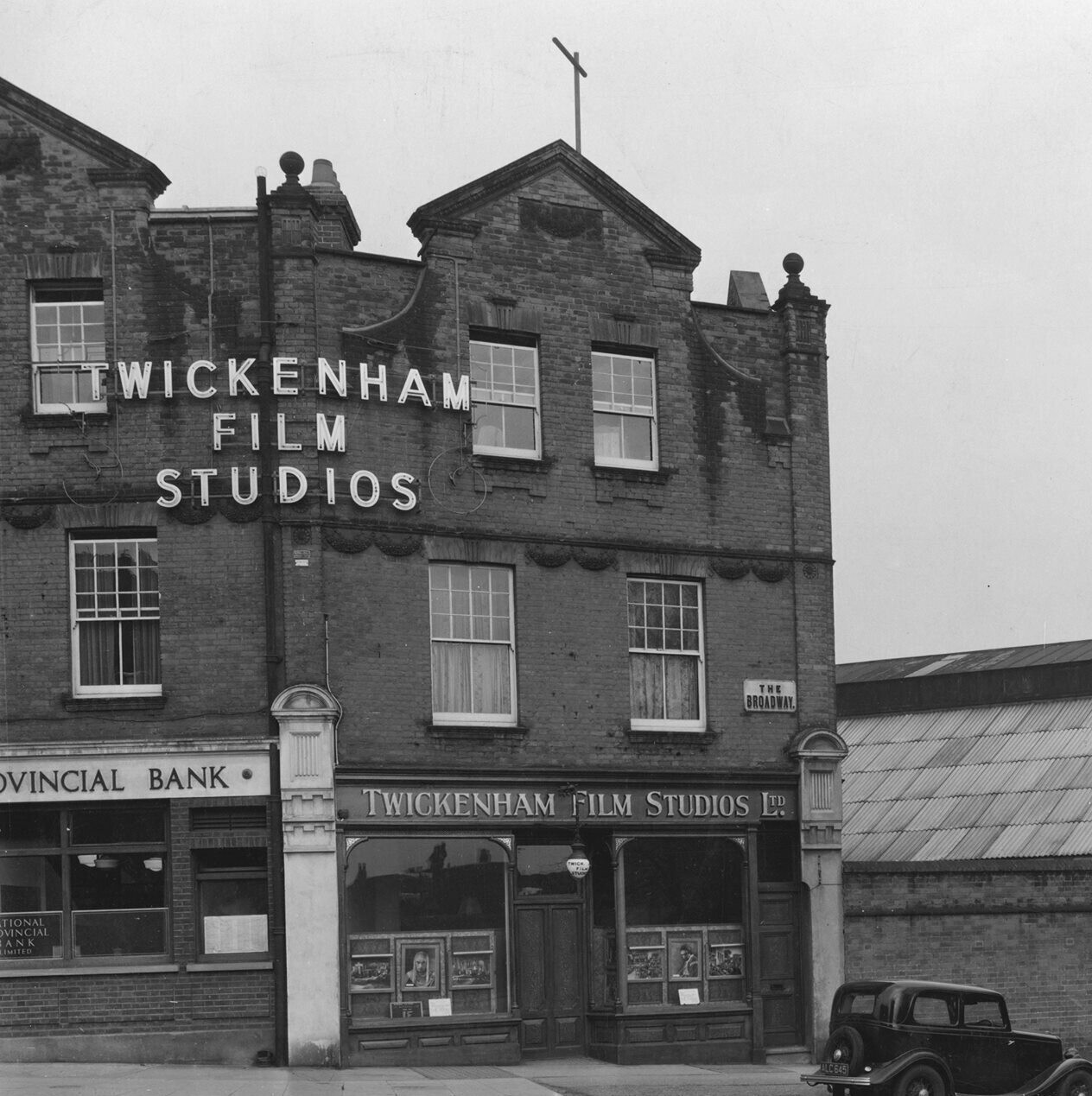 Three-and-a-half months went by before Paul considered “Let It Be” ready for proper consideration to be recorded by The Beatles. He corralled his band-mates together in January of 1969 for a month of filmed rehearsals and recording sessions, this as-yet-to-be-named project eventually being released under the title “Let It Be.” The rehearsals commenced at Twickenham Film Studios in London, the purpose being for each of the band members to bring forward newly written material to be rehearsed and arranged for a future live appearance, wherever they decided that would be. Three-and-a-half months went by before Paul considered “Let It Be” ready for proper consideration to be recorded by The Beatles. He corralled his band-mates together in January of 1969 for a month of filmed rehearsals and recording sessions, this as-yet-to-be-named project eventually being released under the title “Let It Be.” The rehearsals commenced at Twickenham Film Studios in London, the purpose being for each of the band members to bring forward newly written material to be rehearsed and arranged for a future live appearance, wherever they decided that would be.
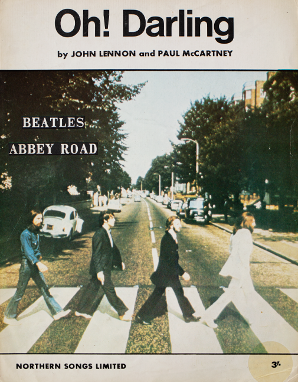 The second day of these rehearsals was on January 3rd, 1969, Paul being the first to arrive. While waiting for the others to get there, he ran through a few of his newly written compositions on piano, such as “The Long And Winding Road,” “Oh! Darling” and “Maxwell's Silver Hammer.” After some other piano exercises, including a medley that included "Tea For Two," "Whole Lotta Shakin' Going On" and the theme song to the British children's television show “Torchy, The Battery Boy,” Paul resurrected “Let It Be” as a mostly-written song that could possibly be worked out at this time. The second day of these rehearsals was on January 3rd, 1969, Paul being the first to arrive. While waiting for the others to get there, he ran through a few of his newly written compositions on piano, such as “The Long And Winding Road,” “Oh! Darling” and “Maxwell's Silver Hammer.” After some other piano exercises, including a medley that included "Tea For Two," "Whole Lotta Shakin' Going On" and the theme song to the British children's television show “Torchy, The Battery Boy,” Paul resurrected “Let It Be” as a mostly-written song that could possibly be worked out at this time.
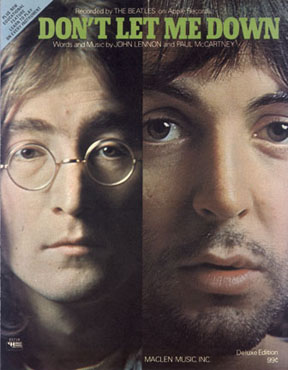 He made it through the first verse and chorus of the song with the recently arriving Ringo looking on. Paul had by this time given “Let It Be” its gospel feel and its “Mother Mary” line, one slight difference in the lyric being “and in my darkest hour” instead of “in my hour of darkness” as on the released version. After this minute-long rendition, attention was then given to two newly written songs by Ringo, “Taking A Trip To Carolina” and “Picasso,” neither of these ever being worked out by the band. Once George and John arrived on that day, they gave detailed attention to George's “All Things Must Pass” and John's “Don't Let Me Down,” along with running through old Beatles material and impromptu cover songs. He made it through the first verse and chorus of the song with the recently arriving Ringo looking on. Paul had by this time given “Let It Be” its gospel feel and its “Mother Mary” line, one slight difference in the lyric being “and in my darkest hour” instead of “in my hour of darkness” as on the released version. After this minute-long rendition, attention was then given to two newly written songs by Ringo, “Taking A Trip To Carolina” and “Picasso,” neither of these ever being worked out by the band. Once George and John arrived on that day, they gave detailed attention to George's “All Things Must Pass” and John's “Don't Let Me Down,” along with running through old Beatles material and impromptu cover songs.
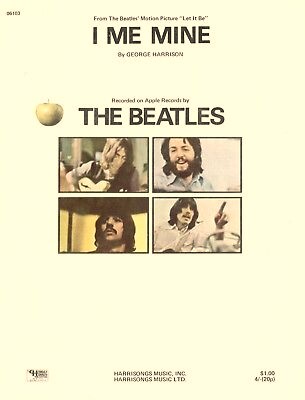 While The Beatles worked extensively on other new material, Paul finally decided to officially introduce “Let It Be” to his band-mates five days later, January 8th, 1969, at Twickenham Studios. After a lot of attention had been heaped upon George's “I Me Mine,” this being the only day they actually worked on the song, as well as other new compositions, Paul played “Let It Be” on piano during an equipment set up in the earlier part of the day. Ringo joined in on drums for a bit, as did an uniterested John on guitar. Recognizing Paul's changing the lyrics from “Brother Malcolm” to “Mother Mary,” John suggested changing it back to a reference to their loyal assistant and former roadie. "Change it to 'Brother Friar Malcolm,' and then we'll do it," Lennon humorously exclaimed, adding, "Would be great. 'Brother Malcolm.'" Paul complied with this during the two renditions of the song they went through at this time, but only when it became obvious that it was a botched performance. While The Beatles worked extensively on other new material, Paul finally decided to officially introduce “Let It Be” to his band-mates five days later, January 8th, 1969, at Twickenham Studios. After a lot of attention had been heaped upon George's “I Me Mine,” this being the only day they actually worked on the song, as well as other new compositions, Paul played “Let It Be” on piano during an equipment set up in the earlier part of the day. Ringo joined in on drums for a bit, as did an uniterested John on guitar. Recognizing Paul's changing the lyrics from “Brother Malcolm” to “Mother Mary,” John suggested changing it back to a reference to their loyal assistant and former roadie. "Change it to 'Brother Friar Malcolm,' and then we'll do it," Lennon humorously exclaimed, adding, "Would be great. 'Brother Malcolm.'" Paul complied with this during the two renditions of the song they went through at this time, but only when it became obvious that it was a botched performance.
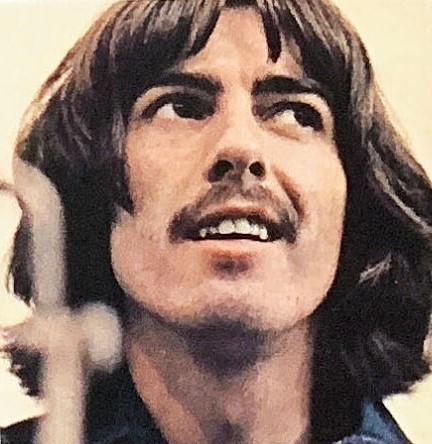 After a lunch break, they returned to “Let It Be” again, Paul calling out the chords to George during the performance. "You know the chords to 'Mother Mary,' don't you?" he asked George, the group affectionately referring to the song by this name throughout most of these January, 1969 sessions, as witnessed in the "Get Back" documentary series. They also began identifying the descending instrumental section of the song as "the F bit" on this day. Ringo began working out his drum part while John occasionally sang during the choruses. Alot of the lyrics were in place at this point, although the final verse was yet to be written. The Beatles had only scratched the surface of becoming acquainted with the song. After a lunch break, they returned to “Let It Be” again, Paul calling out the chords to George during the performance. "You know the chords to 'Mother Mary,' don't you?" he asked George, the group affectionately referring to the song by this name throughout most of these January, 1969 sessions, as witnessed in the "Get Back" documentary series. They also began identifying the descending instrumental section of the song as "the F bit" on this day. Ringo began working out his drum part while John occasionally sang during the choruses. Alot of the lyrics were in place at this point, although the final verse was yet to be written. The Beatles had only scratched the surface of becoming acquainted with the song.
 On the next day of Twickenham rehearsals, January 9th, 1969, they went through “Let It Be” a total of sixteen times. One of the earlier rough run-throughs had Ringo playing a shuffle beat on drums at Paul's request, with John on acoustic guitar, George on lead electric guitar, and Paul on piano and lead vocal with audible demonstrations of what he envisioned for the guitar solo. John moved to the Fender Bass VI guitar shortly thereafter so as to keep with the no-overdubs policy they wanted to maintain throughout this project. In a later rendition that day with John on bass, Paul instructed John to sing backing “aaah”s during the choruses, the song sounding a little more cohesive at that point. On the next day of Twickenham rehearsals, January 9th, 1969, they went through “Let It Be” a total of sixteen times. One of the earlier rough run-throughs had Ringo playing a shuffle beat on drums at Paul's request, with John on acoustic guitar, George on lead electric guitar, and Paul on piano and lead vocal with audible demonstrations of what he envisioned for the guitar solo. John moved to the Fender Bass VI guitar shortly thereafter so as to keep with the no-overdubs policy they wanted to maintain throughout this project. In a later rendition that day with John on bass, Paul instructed John to sing backing “aaah”s during the choruses, the song sounding a little more cohesive at that point.
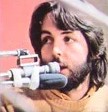 By the end of the rehearsals of the song on this day, the arrangement was much more refined and similar to what we have become familiar with. As seen in Peter Jackson's "Get Back" series, engineer Glyn Johns is playing a sizable part in arranging the song, instructing Paul how he feels 'the F bit' should appear in the song. "He seems to be arranging this," Paul slyly remarks to the others about Glyn's input, which they all appear to respect and continue to listen to. Paul plays and sings the first verse by himself, John and George supply backing vocals during the first chorus, which consist of "aaah"s but then move to harmonizing "whisper words of wisdom, let it be." Ringo joins in on kick drum and tambourine during the next verse and rolls into the following chorus, which has him play a steady rock beat while riding on his hi-hat. One of these rehearsals contain George humorously singing "Speaking Norman Wilson." That second chorus also has John join in on bass, the instrumental break that follows including a guitar solo from George and backing vocals by Paul, John and George. Paul still hasn't completed the lyrics in the last set of verses, so ad libs such as “read the Record Mirror, let it be” are heard during these rehearsals. By the end of the rehearsals of the song on this day, the arrangement was much more refined and similar to what we have become familiar with. As seen in Peter Jackson's "Get Back" series, engineer Glyn Johns is playing a sizable part in arranging the song, instructing Paul how he feels 'the F bit' should appear in the song. "He seems to be arranging this," Paul slyly remarks to the others about Glyn's input, which they all appear to respect and continue to listen to. Paul plays and sings the first verse by himself, John and George supply backing vocals during the first chorus, which consist of "aaah"s but then move to harmonizing "whisper words of wisdom, let it be." Ringo joins in on kick drum and tambourine during the next verse and rolls into the following chorus, which has him play a steady rock beat while riding on his hi-hat. One of these rehearsals contain George humorously singing "Speaking Norman Wilson." That second chorus also has John join in on bass, the instrumental break that follows including a guitar solo from George and backing vocals by Paul, John and George. Paul still hasn't completed the lyrics in the last set of verses, so ad libs such as “read the Record Mirror, let it be” are heard during these rehearsals.
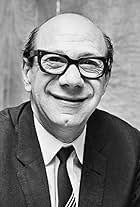 Paul was the first to arrive at Twickenham the following day, January 10th, 1969, so he ran through a few recent compositions on piano for music publisher Dick James, including “Let It Be.” Tensions ran quite high after the other Beatles arrived, resulting in George actually quitting the band during their lunch break. With the future of the project, as well as The Beatles as a whole, in question, the following two rehearsals without George were largely unproductive and didn't include any attempts at running through the song “Let It Be.” Paul was the first to arrive at Twickenham the following day, January 10th, 1969, so he ran through a few recent compositions on piano for music publisher Dick James, including “Let It Be.” Tensions ran quite high after the other Beatles arrived, resulting in George actually quitting the band during their lunch break. With the future of the project, as well as The Beatles as a whole, in question, the following two rehearsals without George were largely unproductive and didn't include any attempts at running through the song “Let It Be.”
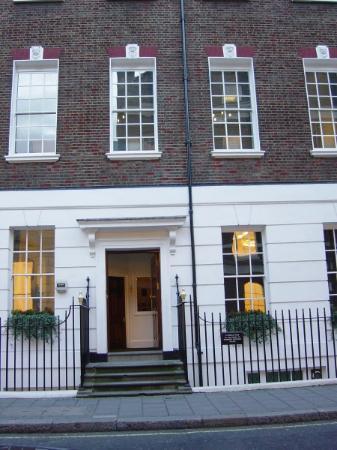 Upon George's return to The Beatles, an agreement was made to move the rehearsals to their basement studio at their Apple Building at 3 Savile Row in London. Their January 23rd, 1969 session at this new location witnessed Paul sneaking in two piano renditions of “Let It Be” for guest keyboardist Billy Preston to hear and get acquainted with. No band rehearsals of the song occurred on this day, however. Upon George's return to The Beatles, an agreement was made to move the rehearsals to their basement studio at their Apple Building at 3 Savile Row in London. Their January 23rd, 1969 session at this new location witnessed Paul sneaking in two piano renditions of “Let It Be” for guest keyboardist Billy Preston to hear and get acquainted with. No band rehearsals of the song occurred on this day, however.
Even though Billy Preston was not present at their January 25th, 1969 session at Apple Studios, Paul thought to run through “Let It Be” again to reaquaint himself and his band-mates with the arrangement they came up with a little over two weeks prior. Even though this session had been very productive, their nailing down the near perfect recording of "For You Blue" and making the decision to perform the project's "pay-off" concert on the roof, they still decided to rehearse "Let It Be" a total of 18 times to maybe even get an acceptable proper recording of it before they left for the day. However, this process wasn't all fun and games!
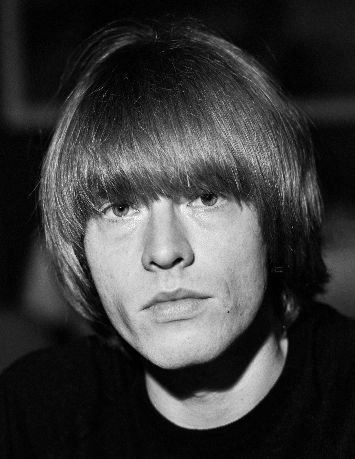 The earlier run-throughs of “Let It Be” on this day showed they had either forgotten their parts or just weren't into it, John in particular apparently not really remembering the song's existence at all. When he asked whether he had rehearsed the song with the group earlier, George reminded him that he played bass. "Bass?!" he exclaimed, adding, "I'm getting like Brian Jones in this group! You just give me the instrument, Paul, and I'll give you something!" Rolling Stones guitarist Brian Jones had become known for playing many instruments other than guitar on their recordings, as well as having played saxophone on The Beatles' "You Know My Name (Look Up The Number)," which would eventually be released as the b-side to "Let It Be" the following year. John's bass playing, however, was full of flubs, not to mention Ringo's drum part not being perfected yet, and John and George's backing vocals being erratic and too loud. The earlier run-throughs of “Let It Be” on this day showed they had either forgotten their parts or just weren't into it, John in particular apparently not really remembering the song's existence at all. When he asked whether he had rehearsed the song with the group earlier, George reminded him that he played bass. "Bass?!" he exclaimed, adding, "I'm getting like Brian Jones in this group! You just give me the instrument, Paul, and I'll give you something!" Rolling Stones guitarist Brian Jones had become known for playing many instruments other than guitar on their recordings, as well as having played saxophone on The Beatles' "You Know My Name (Look Up The Number)," which would eventually be released as the b-side to "Let It Be" the following year. John's bass playing, however, was full of flubs, not to mention Ringo's drum part not being perfected yet, and John and George's backing vocals being erratic and too loud.
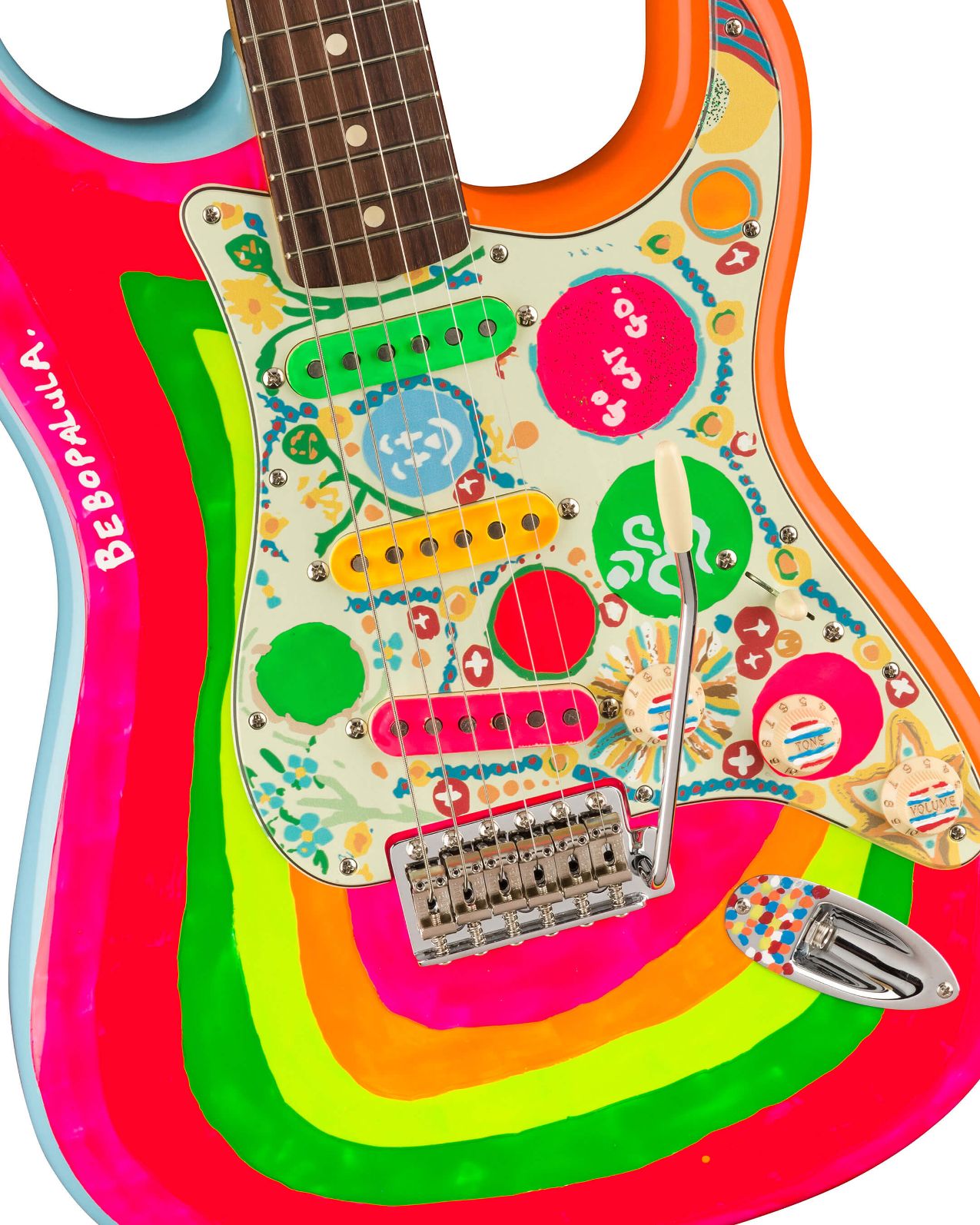 George, who was playing his psychedelic-painted Stratocaster, asks "Paul, How does it start?" After Paul replies, "I don't know," he begins playing piano and singing the first verse, which prompts George's response, "So just straight in at the first verse as an intro?" Quickly thereafter, they decide to begin the song with the "F bit" as detailed above. Recognizing their disinterest in the song, Paul exorts, “OK, you watch us, we're gonna do this now. Ok boy, now, come on. Pull yourselves together!” John replies, “You talkin' to me?” George then responds by beginning an impromptu rendition of Chuck Berry's “I'm Talking About You,” which is then squashed by Paul who wants to get back to the business at hand. “Come on now,” he interjects, “back to the drudgery.” John angrily responds, “It's you that's bloody making it like this!” Paul sarcastically comes back with “The real meaning of Christmas” before beginning another rendition of “Let It Be,” the next few rehearsals of the song sounding very mediocre. George, who was playing his psychedelic-painted Stratocaster, asks "Paul, How does it start?" After Paul replies, "I don't know," he begins playing piano and singing the first verse, which prompts George's response, "So just straight in at the first verse as an intro?" Quickly thereafter, they decide to begin the song with the "F bit" as detailed above. Recognizing their disinterest in the song, Paul exorts, “OK, you watch us, we're gonna do this now. Ok boy, now, come on. Pull yourselves together!” John replies, “You talkin' to me?” George then responds by beginning an impromptu rendition of Chuck Berry's “I'm Talking About You,” which is then squashed by Paul who wants to get back to the business at hand. “Come on now,” he interjects, “back to the drudgery.” John angrily responds, “It's you that's bloody making it like this!” Paul sarcastically comes back with “The real meaning of Christmas” before beginning another rendition of “Let It Be,” the next few rehearsals of the song sounding very mediocre.
 The atmosphere then becomes silly as proposed lyrics for the unwritten third verse are suggested. "Captain Marvel comes to me," George proposes, while John adds, "Bloody Mary comes to me." Art dealer Robert Fraser stops in during this session, which prompts Paul to sing, "and here's to Robert Fraser...," to which John continues, "...from his gallery!" During a piano intro on another runthrough, John states, "I'd especially like to thank you for all the birthday presents," this being a recollection of the Christmas message recordings The Beatles had been making to their fans. The atmosphere then becomes silly as proposed lyrics for the unwritten third verse are suggested. "Captain Marvel comes to me," George proposes, while John adds, "Bloody Mary comes to me." Art dealer Robert Fraser stops in during this session, which prompts Paul to sing, "and here's to Robert Fraser...," to which John continues, "...from his gallery!" During a piano intro on another runthrough, John states, "I'd especially like to thank you for all the birthday presents," this being a recollection of the Christmas message recordings The Beatles had been making to their fans.
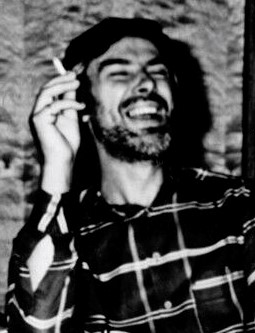 Paul then decides to think positive and instructs producer Glyn Johns to properly record the next take, hoping to possibly nail down another perfect recording for the project on this day. “This here's gonna knock you out,” he states, leading the group through the version that was included on the 1996 released “Anthology 3.” This excellent rendition features great piano and vocal work from Paul, despite the fact that the lyrics in the final verses were yet to be written. Ringo stopped playing during these final verses but otherwise put in a subdued but adequate performance. John and George's backing “aaah”s were done well as was George's lead guitar solo, which was goaded on by Paul with an appropriate “yeah” during its opening measure. The composer adds in a couple exclamations of “let it be” during the final chords, indicating that he was well pleased with the outcome of this take. They did go through the song a few more times after this, including a fast rock 'n' roll version, but because of lack of interest and low energy, these were half-hearted at best. "Can we carry this on tomorrow?", Paul asks, which ends the session for the day. Paul then decides to think positive and instructs producer Glyn Johns to properly record the next take, hoping to possibly nail down another perfect recording for the project on this day. “This here's gonna knock you out,” he states, leading the group through the version that was included on the 1996 released “Anthology 3.” This excellent rendition features great piano and vocal work from Paul, despite the fact that the lyrics in the final verses were yet to be written. Ringo stopped playing during these final verses but otherwise put in a subdued but adequate performance. John and George's backing “aaah”s were done well as was George's lead guitar solo, which was goaded on by Paul with an appropriate “yeah” during its opening measure. The composer adds in a couple exclamations of “let it be” during the final chords, indicating that he was well pleased with the outcome of this take. They did go through the song a few more times after this, including a fast rock 'n' roll version, but because of lack of interest and low energy, these were half-hearted at best. "Can we carry this on tomorrow?", Paul asks, which ends the session for the day.
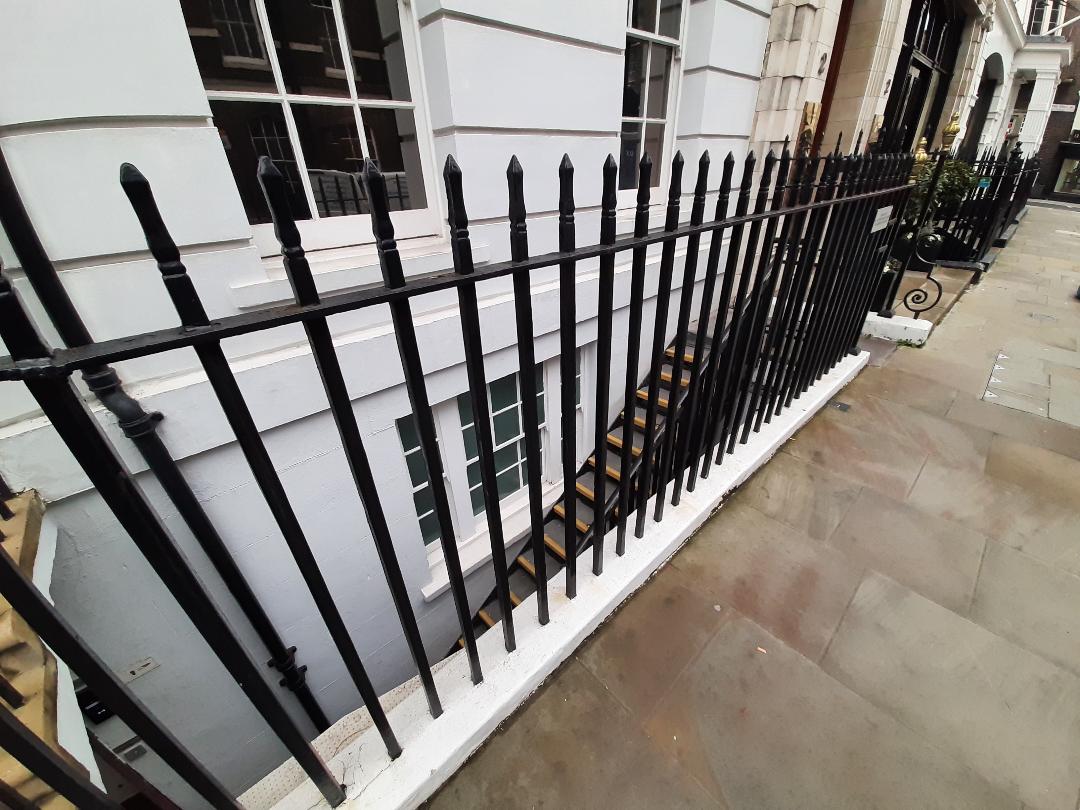 Billy Preston was due to be present for the next day's rehearsal, January 26th, 1969 in their basement studio at Apple Headquarters, as was Linda Eastman and her daughter Heather, the youngster actually playing hi-hat with Ringo during rehearsals for the song "Let It Be" on this day. Paul was enthusiastic about seeing how Billy's Hammond organ contributions to “Let It Be” would work with The Beatles' performance but, since he was late in arriving, George Martin filled in on organ for the taped rehearsals on this day. "It's very country and western in a way," George Martin commented, which prompted John to exclaim, "Country and gospel, it is." When listening to a playback of a take in their control room, as seen in Peter Jackson's "Get Back" series, John suggests, "Do that old gospel ending," to which George humorously counters, "We'll all kneel as we do it." Billy Preston was due to be present for the next day's rehearsal, January 26th, 1969 in their basement studio at Apple Headquarters, as was Linda Eastman and her daughter Heather, the youngster actually playing hi-hat with Ringo during rehearsals for the song "Let It Be" on this day. Paul was enthusiastic about seeing how Billy's Hammond organ contributions to “Let It Be” would work with The Beatles' performance but, since he was late in arriving, George Martin filled in on organ for the taped rehearsals on this day. "It's very country and western in a way," George Martin commented, which prompted John to exclaim, "Country and gospel, it is." When listening to a playback of a take in their control room, as seen in Peter Jackson's "Get Back" series, John suggests, "Do that old gospel ending," to which George humorously counters, "We'll all kneel as we do it."
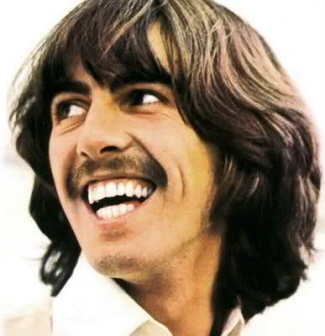 They still began each rendition with "the F bit" heard after the second chorus, deciding to repeat it twice on this day. Another refinement was instituted just before "take ten" on this day at George Harrison's suggestion, "Maybe just have one chorus on the first time and two choruses on the second time," Paul replying, "Ok, I think that's good." As heard in various Anniversary editions of the "Let It Be" album, Paul sings and plays a bit of "Please Please Me" on piano before starting off "take ten," John exclaiming, "That was daft, y'know!" When Paul kept delaying, John once again humorously complained, "C'mon, I only get two notes in this song!" The performance of "Let It Be" comes across well, George Martin's organ part being quite rudimentary probably due to his not having played it before this day. They still began each rendition with "the F bit" heard after the second chorus, deciding to repeat it twice on this day. Another refinement was instituted just before "take ten" on this day at George Harrison's suggestion, "Maybe just have one chorus on the first time and two choruses on the second time," Paul replying, "Ok, I think that's good." As heard in various Anniversary editions of the "Let It Be" album, Paul sings and plays a bit of "Please Please Me" on piano before starting off "take ten," John exclaiming, "That was daft, y'know!" When Paul kept delaying, John once again humorously complained, "C'mon, I only get two notes in this song!" The performance of "Let It Be" comes across well, George Martin's organ part being quite rudimentary probably due to his not having played it before this day.
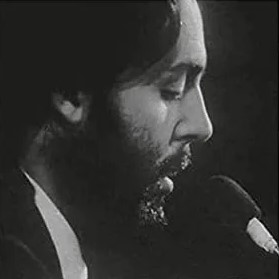 One thing noticeable on this and all of the 28 rehearsals of the song on this day was the fact that Paul still hadn't written the lyrics to the final set of verses. After listening to a playback of a recording from the day before he stated, "I'll have to think of some more words. But that's all right, because if I do think of the right words then it'll tie it up." This led to amusing vocal ad libs, such as “You will be a good girl, let it be / and though you may be told off, you will still be able to see / that there must be an answer, let it be.” One thing noticeable on this and all of the 28 rehearsals of the song on this day was the fact that Paul still hadn't written the lyrics to the final set of verses. After listening to a playback of a recording from the day before he stated, "I'll have to think of some more words. But that's all right, because if I do think of the right words then it'll tie it up." This led to amusing vocal ad libs, such as “You will be a good girl, let it be / and though you may be told off, you will still be able to see / that there must be an answer, let it be.”
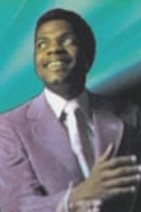 While Paul is instructing Ringo to "play it lighter" during the song's conclusion, George adlibs a third verse singing, "Somewhere in the heaven there he sees a man call Babragi / singing words of wisdom, let it be." This is immediately followed by John singing, "Somewhere out in Weybridge there's a cat who's name is Pavagi / singing words of wisdom, let it B, H, I, J, K." Paul later repeats John's lyric but changes the cat's name to "Banagy," continuing, "there will be the answer, let it be / and in my darkest hour, she is...,” George then interrupting with “...sitting on the lavatory,” causing John to repeat the phrase while laughing. Once Billy Preston arrived, Paul asked him to play "the F bit" like Bach. After his demonstration impressed everyone, Paul retorted, "Oh, look, that's all right. That'll do!" While Paul is instructing Ringo to "play it lighter" during the song's conclusion, George adlibs a third verse singing, "Somewhere in the heaven there he sees a man call Babragi / singing words of wisdom, let it be." This is immediately followed by John singing, "Somewhere out in Weybridge there's a cat who's name is Pavagi / singing words of wisdom, let it B, H, I, J, K." Paul later repeats John's lyric but changes the cat's name to "Banagy," continuing, "there will be the answer, let it be / and in my darkest hour, she is...,” George then interrupting with “...sitting on the lavatory,” causing John to repeat the phrase while laughing. Once Billy Preston arrived, Paul asked him to play "the F bit" like Bach. After his demonstration impressed everyone, Paul retorted, "Oh, look, that's all right. That'll do!"
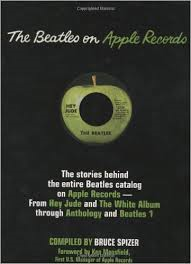 Twleve more versions of “Let It Be” were performed with Billy Preston the following day, January 27th, 1969 at Apple Studios. The final arrangement was pretty set by this time, although they did some experimentation on this day. On some versions, George and John played some guitar and bass riffs during the early part of the song, while Billy experimented with some different organ parts, even substituting electric piano instead of organ. After one particular soulful electric piano rendition, Paul remarks, "Of course, coming from the North of England, it doesn't come through easy in all the soul," which prompts a laugh from Billy. George also took some time to work through a lead guitar part during the song's final chorus. Since Paul still didn't have the lyrics to the final set of verses written, he would sometimes sing scat vocals, John even adding what Bruce Spizer describes in his book “The Beatles On Apple Records” as “inappropriate vocal ad-libs, perhaps out of boredom.” Twleve more versions of “Let It Be” were performed with Billy Preston the following day, January 27th, 1969 at Apple Studios. The final arrangement was pretty set by this time, although they did some experimentation on this day. On some versions, George and John played some guitar and bass riffs during the early part of the song, while Billy experimented with some different organ parts, even substituting electric piano instead of organ. After one particular soulful electric piano rendition, Paul remarks, "Of course, coming from the North of England, it doesn't come through easy in all the soul," which prompts a laugh from Billy. George also took some time to work through a lead guitar part during the song's final chorus. Since Paul still didn't have the lyrics to the final set of verses written, he would sometimes sing scat vocals, John even adding what Bruce Spizer describes in his book “The Beatles On Apple Records” as “inappropriate vocal ad-libs, perhaps out of boredom.”
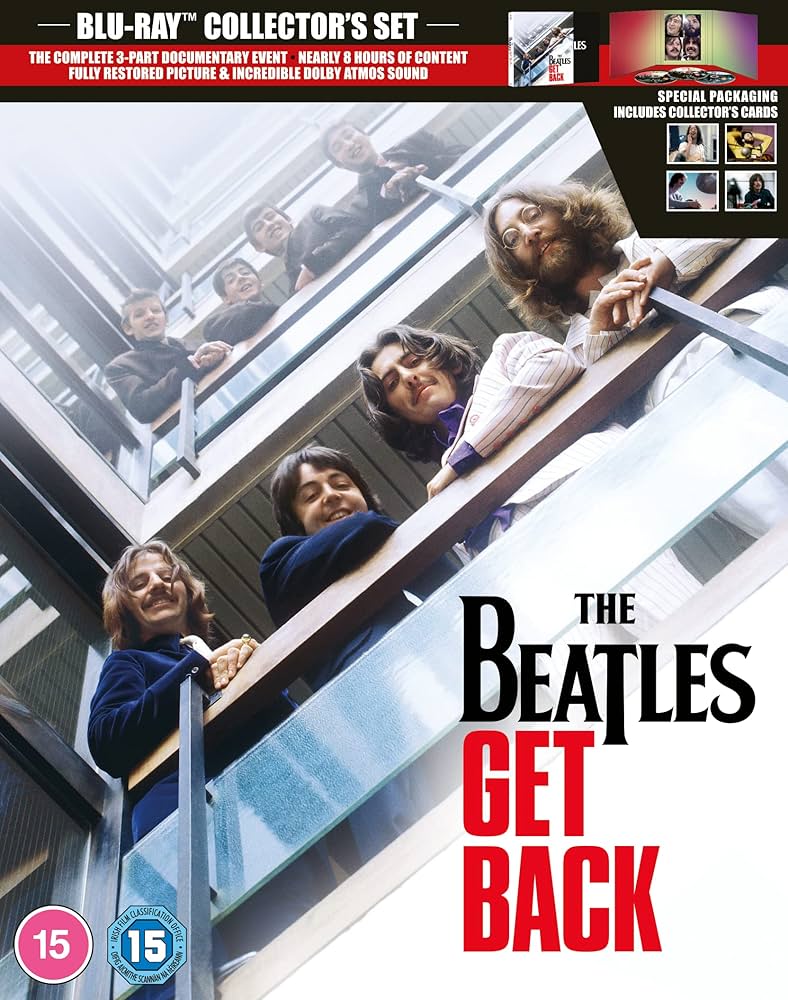 After the "f bit" is played in one rehearsal, as wtinessed in the "Get Back" documentary series, Paul states, "It's a bit ploddy." "What?" John asks, to which, Paul replies, "it just sorts of plods along a bit." John explains, "It's just morning and slow; and a slow song. It takes a long time to get out of it." Paul relented by saying, "That'll do for the time being" before moving on to "The Long And Winding Road," which he also wasn't feeling inspired by on this day. At any rate, with the time frame to complete the project nearing its end, all that was left was for Paul to complete the lyrics. Otherwise, everyone pretty much had their parts perfected. After the "f bit" is played in one rehearsal, as wtinessed in the "Get Back" documentary series, Paul states, "It's a bit ploddy." "What?" John asks, to which, Paul replies, "it just sorts of plods along a bit." John explains, "It's just morning and slow; and a slow song. It takes a long time to get out of it." Paul relented by saying, "That'll do for the time being" before moving on to "The Long And Winding Road," which he also wasn't feeling inspired by on this day. At any rate, with the time frame to complete the project nearing its end, all that was left was for Paul to complete the lyrics. Otherwise, everyone pretty much had their parts perfected.
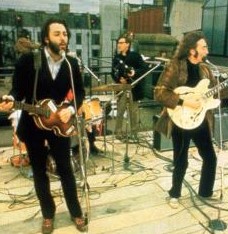 It was on January 29th, 1969 that The Beatles decided that their live performance would be relegated to the Apple Headquarters roof the following day. The five songs that were deemed appropriate to be played on the roof were rehearsed on this day, the remainder of the session being used to work out all of the bugs on the other selections they felt were complete, “Let It Be” being among them. They only needed to go through the song once on this day, this lackluster performance being evidence that they were simply going through the motions on something they basically knew like the back of their hand. It was on January 29th, 1969 that The Beatles decided that their live performance would be relegated to the Apple Headquarters roof the following day. The five songs that were deemed appropriate to be played on the roof were rehearsed on this day, the remainder of the session being used to work out all of the bugs on the other selections they felt were complete, “Let It Be” being among them. They only needed to go through the song once on this day, this lackluster performance being evidence that they were simply going through the motions on something they basically knew like the back of their hand.
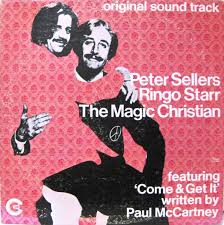 Their rooftop performance the following day, January 30th, 1969, went quite well, despite the cold weather and the threat from police to shut them down. With the filming of Ringo and Peter Sellers' movie “The Magic Christian” beginning in February, The Beatles had one remaining day to officially record and film the other three songs that they had perfected for this project, these being “The Long And Winding Road,” “Two Of Us” and "Let It Be." Of interest here is a conversation among The Beatles in the control room of Apple Studios on January 30th, 1969, as seen in Peter Jackson's "Get Back" series. Concerning the idea of performing "Let It Be" and the other songs not performed on the roof in their basement studio afterwards, George suggested, "We could pretend in the film that we had to get down because of (the police) and then here we are!" Their rooftop performance the following day, January 30th, 1969, went quite well, despite the cold weather and the threat from police to shut them down. With the filming of Ringo and Peter Sellers' movie “The Magic Christian” beginning in February, The Beatles had one remaining day to officially record and film the other three songs that they had perfected for this project, these being “The Long And Winding Road,” “Two Of Us” and "Let It Be." Of interest here is a conversation among The Beatles in the control room of Apple Studios on January 30th, 1969, as seen in Peter Jackson's "Get Back" series. Concerning the idea of performing "Let It Be" and the other songs not performed on the roof in their basement studio afterwards, George suggested, "We could pretend in the film that we had to get down because of (the police) and then here we are!"
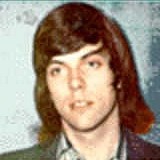 Therefore, on January 31st, 1969, The Beatles assembled with George Martin and engineers Glyn Johns and Alan Parsons to record what was referred to on the tape box as the “Apple Studio Performance.” Various other songs were performed in between takes, such as “Lady Madonna,” “Run For Your Life” and even “Build Me Up Buttercup,” but the primary focus was the three compositions mentioned above that were deemed unsuitable for the rooftop performance. Since the proceedings were also being filmed for inclusion in what eventually became the “Let It Be” movie, the four Beatles and Billy Preston arranged themselves into stage formation around a platform, John insisting on sitting on the floor in front of the piano next to Yoko throughout the proceedings. Therefore, on January 31st, 1969, The Beatles assembled with George Martin and engineers Glyn Johns and Alan Parsons to record what was referred to on the tape box as the “Apple Studio Performance.” Various other songs were performed in between takes, such as “Lady Madonna,” “Run For Your Life” and even “Build Me Up Buttercup,” but the primary focus was the three compositions mentioned above that were deemed unsuitable for the rooftop performance. Since the proceedings were also being filmed for inclusion in what eventually became the “Let It Be” movie, the four Beatles and Billy Preston arranged themselves into stage formation around a platform, John insisting on sitting on the floor in front of the piano next to Yoko throughout the proceedings.
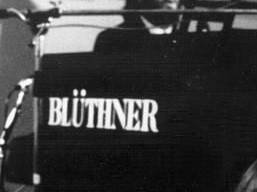 After The Beatles nailed down an acceptable performance of “Two Of Us,” as well as messing around with various other selections, Paul moved from acoustic guitar to piano to set their attention to “Let It Be.” They performed many takes of this song that were numbered takes 20 through 27 to coincide with the take numbers from the film's clapper board. Since there were a few breakdowns and false starts, some of these numbered takes included these incomplete versions along with full renditions of the song. Paul had finally written the lyrics to the final set of verses by this day, and had decided to introduce the song by playing an instrumental version of the verse on piano instead of "the F bit" as he had been. After The Beatles nailed down an acceptable performance of “Two Of Us,” as well as messing around with various other selections, Paul moved from acoustic guitar to piano to set their attention to “Let It Be.” They performed many takes of this song that were numbered takes 20 through 27 to coincide with the take numbers from the film's clapper board. Since there were a few breakdowns and false starts, some of these numbered takes included these incomplete versions along with full renditions of the song. Paul had finally written the lyrics to the final set of verses by this day, and had decided to introduce the song by playing an instrumental version of the verse on piano instead of "the F bit" as he had been.
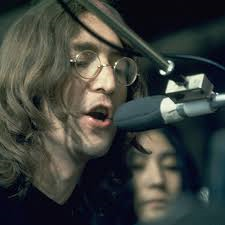 A rehearsal of the song before the official takes began included a version played with a skiffle-style beat and Lennon singing the words to a different melody. It was obvious that John was becoming irritated and/or bored of the whole process by this point, making fun of the lyrics on occasion to releive some stress. “And in my hour of darkness, she is standing left in front of me,” he sings at one point, continuing, “squeaking turds of whiskey over me.” A rehearsal of the song before the official takes began included a version played with a skiffle-style beat and Lennon singing the words to a different melody. It was obvious that John was becoming irritated and/or bored of the whole process by this point, making fun of the lyrics on occasion to releive some stress. “And in my hour of darkness, she is standing left in front of me,” he sings at one point, continuing, “squeaking turds of whiskey over me.”
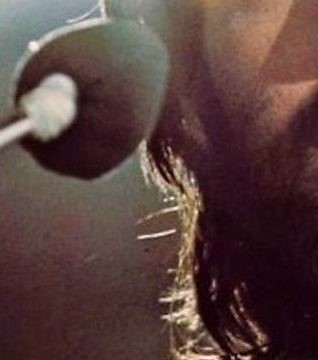 "Take 20" started off well but was called to a stop by Glyn Johns midway through the first chorus because Paul's vocals were popping, especially on the word “be.” John begins whistling when the signal to stop occurs and then mutters, “What the f*ck is going on?” and mentions the popping. “This isn't very loud, Glyn,” Paul complains, John interjecting, “Poppin's in, man. I'll never get 'Maggie Mae' done if it goes on like this!” After another false start, they deliver their first complete performance, flawed only by John flubbing his bass part during the descending chords just before the guitar solo, John announcing “F*cked it!" directly after his mistake. After the song concludes, John asks, “Let it be, eh?” After Paul answers, “Yeah,” John adds, “I know what you mean.” "Take 20" started off well but was called to a stop by Glyn Johns midway through the first chorus because Paul's vocals were popping, especially on the word “be.” John begins whistling when the signal to stop occurs and then mutters, “What the f*ck is going on?” and mentions the popping. “This isn't very loud, Glyn,” Paul complains, John interjecting, “Poppin's in, man. I'll never get 'Maggie Mae' done if it goes on like this!” After another false start, they deliver their first complete performance, flawed only by John flubbing his bass part during the descending chords just before the guitar solo, John announcing “F*cked it!" directly after his mistake. After the song concludes, John asks, “Let it be, eh?” After Paul answers, “Yeah,” John adds, “I know what you mean.”
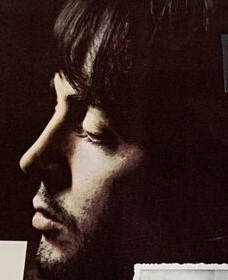 "Take 21" started off fine but kept slowing in tempo, this prompting Paul to call the performance to a halt after the guitar solo. He then sang the line “When all the broken hearted people” as a slurring drunk, which causes John to call out “Get off, you bum!” in imitation of a heckler in a nightclub. Paul then states, “It just, I don't know, it got so, sort of...I don't know.” "Take 21" started off fine but kept slowing in tempo, this prompting Paul to call the performance to a halt after the guitar solo. He then sang the line “When all the broken hearted people” as a slurring drunk, which causes John to call out “Get off, you bum!” in imitation of a heckler in a nightclub. Paul then states, “It just, I don't know, it got so, sort of...I don't know.”
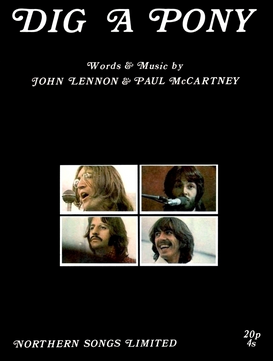 "Take 22" was a complete performance but was also marred by a slowing tempo. When Paul realized this wasn't going to be the final take, he sang the last verse as “When I find myself in times of heartache, Brother Malcolm comes to me,” and then finishes the take in a less-than-serious vocal tone. After it concludes, John sings, “There once was a woman / that loved a moondog.” “Moondog,” of course, was a reference to an early name for The Beatles and was also included in the lyrics to John's “Dig A Pony” from these January 1969 sessions. "Take 22" was a complete performance but was also marred by a slowing tempo. When Paul realized this wasn't going to be the final take, he sang the last verse as “When I find myself in times of heartache, Brother Malcolm comes to me,” and then finishes the take in a less-than-serious vocal tone. After it concludes, John sings, “There once was a woman / that loved a moondog.” “Moondog,” of course, was a reference to an early name for The Beatles and was also included in the lyrics to John's “Dig A Pony” from these January 1969 sessions.
 Before "take 23" begins, John states, “Daddy wants to wee wee,” which triggers Paul to announce, “Daddy wants wee wee, Glyn!” After "take 23" is announced, Paul says, “Keep it going, leave it up a bit or something.” John then states, “Don't say that word,” which Paul answers with “a-a-a-a-awful sorry!” John then asks with mock sincerity, “Are we supposed to giggle in the solo?” to which Paul replies, “yeah,” followed by John's “okay.” This take went quite well, although after it was over John stated in a British royalty accent, “I lost a bass note somewhere!” After Paul replies “Oh!” in a similar accent, John continues, “I don't think it mattered if that was it.” Before "take 23" begins, John states, “Daddy wants to wee wee,” which triggers Paul to announce, “Daddy wants wee wee, Glyn!” After "take 23" is announced, Paul says, “Keep it going, leave it up a bit or something.” John then states, “Don't say that word,” which Paul answers with “a-a-a-a-awful sorry!” John then asks with mock sincerity, “Are we supposed to giggle in the solo?” to which Paul replies, “yeah,” followed by John's “okay.” This take went quite well, although after it was over John stated in a British royalty accent, “I lost a bass note somewhere!” After Paul replies “Oh!” in a similar accent, John continues, “I don't think it mattered if that was it.”
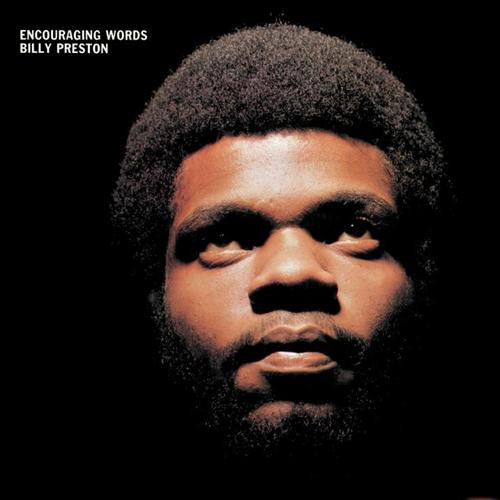 "Take 24" was going quite well right into the guitar solo section where George ad-libs impressively, Paul singing encouragingly “Let it be, yeah, whoah.” Paul then accidentally leads the band through two choruses instead of just one, a mistake he would typically make. Since there are two choruses at the end of the song, John mistook this to be the conclusion and started playing the descending bass pattern heard at the song's end. As Paul notices this when he begins the final set of verses, he reacts vocally with “When I find myself in, whoah!” Billy Preston reacts to this flub with some soulful swirling organ playing, knowing that this take was ruined. Paul continues on nonetheless, singing in an exagerated style until John stops the take by exclaiming, “OK, OK,” Paul continuing with, “OK, she stands right in...” until everybody stops playing. “I thought it was 'end,' you know,” John apologetically states regarding his bass flub. "Take 24" was going quite well right into the guitar solo section where George ad-libs impressively, Paul singing encouragingly “Let it be, yeah, whoah.” Paul then accidentally leads the band through two choruses instead of just one, a mistake he would typically make. Since there are two choruses at the end of the song, John mistook this to be the conclusion and started playing the descending bass pattern heard at the song's end. As Paul notices this when he begins the final set of verses, he reacts vocally with “When I find myself in, whoah!” Billy Preston reacts to this flub with some soulful swirling organ playing, knowing that this take was ruined. Paul continues on nonetheless, singing in an exagerated style until John stops the take by exclaiming, “OK, OK,” Paul continuing with, “OK, she stands right in...” until everybody stops playing. “I thought it was 'end,' you know,” John apologetically states regarding his bass flub.
 "Take 25" just makes it through to the first chorus where Paul starts singing in a high falsetto harmony on top of John and George's “aaah”s. This prompts Paul to exclaim, “What the sh*t and hell is going on here?” John and Paul then engage in some pseudo-German banter before Paul continues into a second attempt at "take 25" by counting it off in a mock German accent. This next rendition makes it all the way to the end but was determined mid-way through to be spurious, resulting in Paul once again including “Brother Malcolm” in the lyrics. After it concludes, the following conversation takes place: "Take 25" just makes it through to the first chorus where Paul starts singing in a high falsetto harmony on top of John and George's “aaah”s. This prompts Paul to exclaim, “What the sh*t and hell is going on here?” John and Paul then engage in some pseudo-German banter before Paul continues into a second attempt at "take 25" by counting it off in a mock German accent. This next rendition makes it all the way to the end but was determined mid-way through to be spurious, resulting in Paul once again including “Brother Malcolm” in the lyrics. After it concludes, the following conversation takes place:
John (sarcastically): “I think that was rather grand. I'd take one home with me.”
Glyn: “No, that was fine.”
John (mimicking the computer HAL9000 from the movie “2001: A Space Odyssey”): Don't kid us, Glyn. Give it to us straight.”
Glyn: "That was straight."
Paul: “Ah, what do you think, Glyn?”
Glyn: “I don't think it's yet.”
Paul: “C'mon.”
John: “OK, let's track it. (Sharply intakes breath creating a sound of shock.) You bounder, you cheat!” (and then reprising “2001: A Space Odyssey”) “Get Me Off This Base! Get Me Off...”
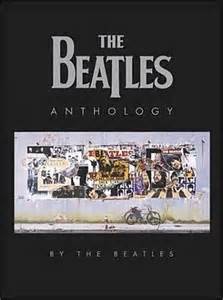 The Beatles had been more than used to editing and overdubbing practices throughout their career, especially during the extensive “Sgt. Pepper” sessions. However, they were determined to make this new project different. “We would learn the tunes and record them without loads of overdubs; do a live album,” George related in the book “Beatles Anthology.” Therefore, this performance of “Let It Be,” like all of the other songs for this project, was intended to be performed perfectly from beginning to end and become the finished product. Normally they would “track it” even though it wasn't a perfect performance, but they didn't want to take advantage of that luxury here. If they did, they would be considered a “bounder” or “cheat.” As we will see below, they ended up doing a good share of 'cheating' at future sessions to get the song to its releasable state. The Beatles had been more than used to editing and overdubbing practices throughout their career, especially during the extensive “Sgt. Pepper” sessions. However, they were determined to make this new project different. “We would learn the tunes and record them without loads of overdubs; do a live album,” George related in the book “Beatles Anthology.” Therefore, this performance of “Let It Be,” like all of the other songs for this project, was intended to be performed perfectly from beginning to end and become the finished product. Normally they would “track it” even though it wasn't a perfect performance, but they didn't want to take advantage of that luxury here. If they did, they would be considered a “bounder” or “cheat.” As we will see below, they ended up doing a good share of 'cheating' at future sessions to get the song to its releasable state.
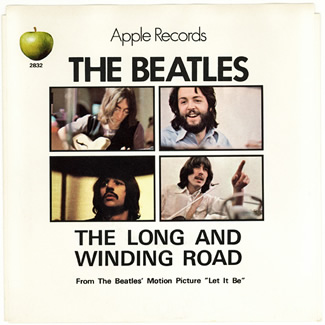 Meanwhile, as "take 26" just gets past the first measure, Paul proceeds to play the introductory notes to the “Twelfth Street Rag,” prompting John to sing, “Oh, Everybody's got a little bit about the bo...” They move directly into another attempt at "Let It Be," this falling apart when Paul messes up the lyrics in the final set of verses. Since they were appearing to lose their enthusiasm for the song at this point, they decided to move on to “The Long And Winding Road” and then come back to “Let It Be” a little later in the day. Meanwhile, as "take 26" just gets past the first measure, Paul proceeds to play the introductory notes to the “Twelfth Street Rag,” prompting John to sing, “Oh, Everybody's got a little bit about the bo...” They move directly into another attempt at "Let It Be," this falling apart when Paul messes up the lyrics in the final set of verses. Since they were appearing to lose their enthusiasm for the song at this point, they decided to move on to “The Long And Winding Road” and then come back to “Let It Be” a little later in the day.
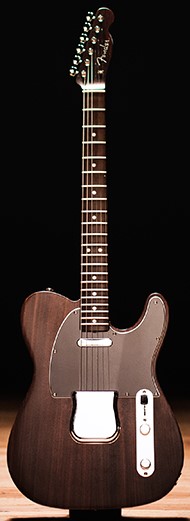 After “The Long And Winding Road” was wrapped up, they came back with renewed drive to finish up “Let It Be.” During the commotion before "take 27" began, John exclaims in a funny British accent, “Uh, no, I've lost me little paper,” undoubtedly referring to a cheat sheet he was using for the song. “Don't talk like that,” he then said to himself as a film crew member announced “'Take 27,' sync to second clap.” Paul follows this with “Sync to second clap, please” before beginning what then became the basic master recording of the released single and album track as we know it. Apart from a few sour lead guitar notes on George's Fender Telecaster solo (which would be improved upon twice in later months) and Paul failing to sing "there will be no sorrow" during the song's conclusion as he intended, this was considered to be a perfect take. After “The Long And Winding Road” was wrapped up, they came back with renewed drive to finish up “Let It Be.” During the commotion before "take 27" began, John exclaims in a funny British accent, “Uh, no, I've lost me little paper,” undoubtedly referring to a cheat sheet he was using for the song. “Don't talk like that,” he then said to himself as a film crew member announced “'Take 27,' sync to second clap.” Paul follows this with “Sync to second clap, please” before beginning what then became the basic master recording of the released single and album track as we know it. Apart from a few sour lead guitar notes on George's Fender Telecaster solo (which would be improved upon twice in later months) and Paul failing to sing "there will be no sorrow" during the song's conclusion as he intended, this was considered to be a perfect take.
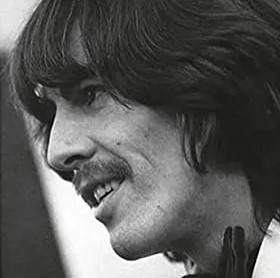 Paul, always being the one to try to top himself just in case it could be done even better, quickly announced, “One more time, very fair, one more.” With determination to remember to sing his "no sorrow" lyric during the final choruses, he started another rendition immediately. "Let's do one more just to cover ourselves," Paul stated, John replying, "We've done so many of the bastards!" Unfortunately, this was stopped by George Harrison, saying, “Oh, just let me get this...” so that he could quickly tune a guitar string. After George says “OK,” Paul reprises his statement from the beginning of the last version, saying “Second clap” and then claps his hands, causing George to laugh during the introduction of their next rendition. Paul, always being the one to try to top himself just in case it could be done even better, quickly announced, “One more time, very fair, one more.” With determination to remember to sing his "no sorrow" lyric during the final choruses, he started another rendition immediately. "Let's do one more just to cover ourselves," Paul stated, John replying, "We've done so many of the bastards!" Unfortunately, this was stopped by George Harrison, saying, “Oh, just let me get this...” so that he could quickly tune a guitar string. After George says “OK,” Paul reprises his statement from the beginning of the last version, saying “Second clap” and then claps his hands, causing George to laugh during the introduction of their next rendition.
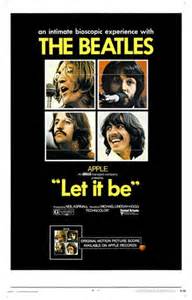 This second version of “Let It Be,” commonly identified as "take 27b," was also near perfect, Paul remembering to sing "there will be no sorrow” twice in the final moments of the song. George's guitar solo came out better on this take, which was remembered decades later when the “Let It Be...Naked” album was being assembled. Both Paul and George, however, preferred the previous version, despite the fact that, as Paul explained, "I didn't quite sing the words I had written here, though." This being settled, "take 27" was chosen to be officially released version of the song, the general public never knowing that "there will be no sorrow" was actually supposed to be included in the lyric. "Take 27b" was, however, the version used as the primary performance for the "Let It Be" movie, some sections of an earlier take being edited in that slightly alter the structure of the song. This being the final performance of the month-long project, John emphatically exclaims, “OH, YES!” as the final sounds of the instruments fade out. His intention of including "Maggie Mae" on this day was either forgotton or deemed less important than his desire to go home for the evening. This second version of “Let It Be,” commonly identified as "take 27b," was also near perfect, Paul remembering to sing "there will be no sorrow” twice in the final moments of the song. George's guitar solo came out better on this take, which was remembered decades later when the “Let It Be...Naked” album was being assembled. Both Paul and George, however, preferred the previous version, despite the fact that, as Paul explained, "I didn't quite sing the words I had written here, though." This being settled, "take 27" was chosen to be officially released version of the song, the general public never knowing that "there will be no sorrow" was actually supposed to be included in the lyric. "Take 27b" was, however, the version used as the primary performance for the "Let It Be" movie, some sections of an earlier take being edited in that slightly alter the structure of the song. This being the final performance of the month-long project, John emphatically exclaims, “OH, YES!” as the final sounds of the instruments fade out. His intention of including "Maggie Mae" on this day was either forgotton or deemed less important than his desire to go home for the evening.
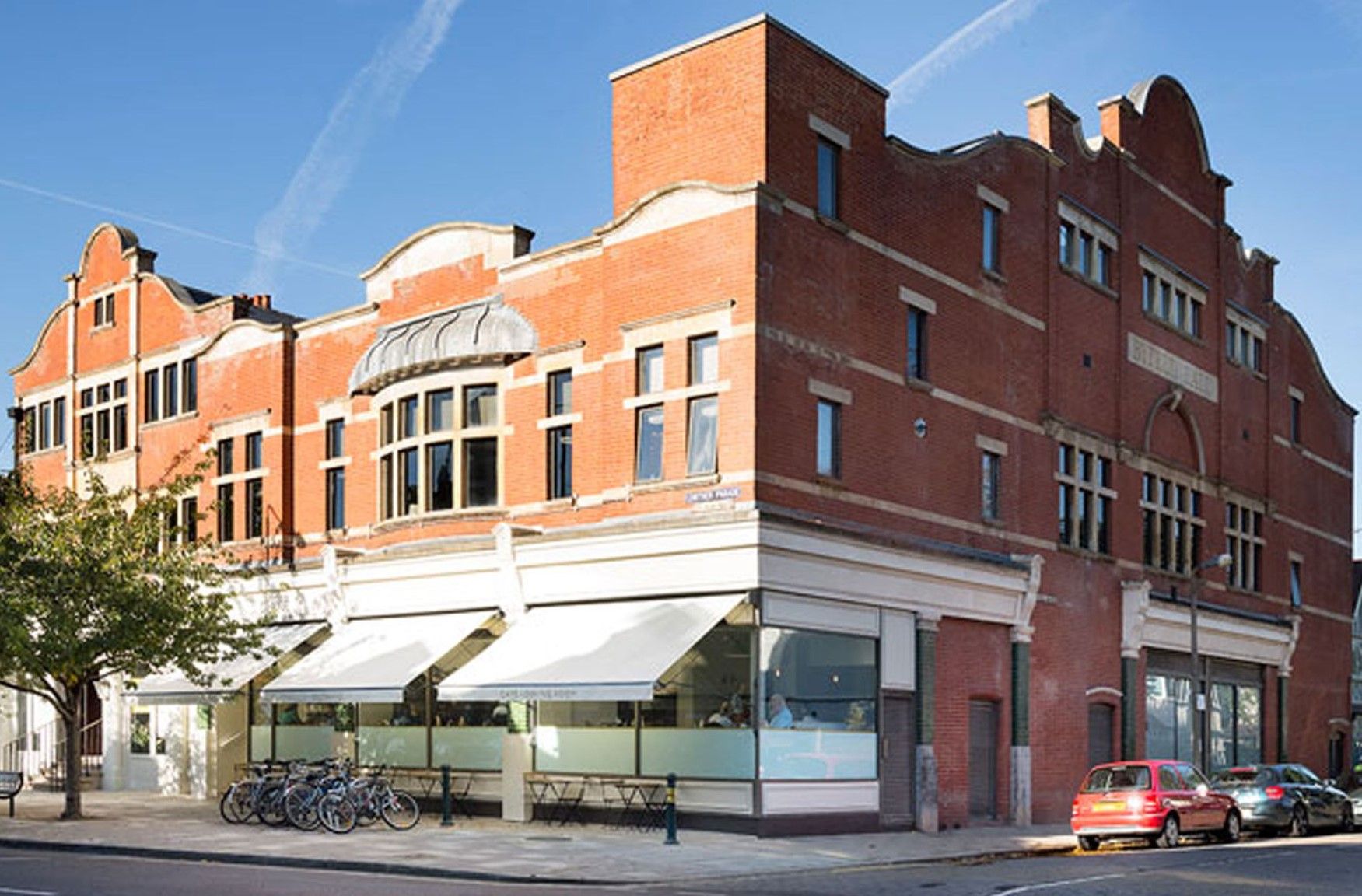 One of the more suitable takes of “Let It Be” recorded on January 26th, 1969, as mentioned above, was initially mixed by Glyn Johns (and possibly George Martin) at Olympic Sound Studios in London on March 10th, 1969. This became part of what Glyn Johns submitted to be a “Get Back” album, at The Beatles' request, for release in the summer of 1969. The proposed album was compiled and cut as acetate discs for The Beatles to hear, which they eventually rejected. John's copy of this acetate disc got into the hands of a disc jockey in Buffalo, New York, in September of 1969. He proceeded to play the entire album on the air and then handed it off to WBCN in Boston who also aired it on September 22nd, announcing it as the “Get Back” album. These broadcasts were recorded and then re-broadcast in various other American cities, resulting in a variety of bootleg albums that were being distributed later that year. One of the more suitable takes of “Let It Be” recorded on January 26th, 1969, as mentioned above, was initially mixed by Glyn Johns (and possibly George Martin) at Olympic Sound Studios in London on March 10th, 1969. This became part of what Glyn Johns submitted to be a “Get Back” album, at The Beatles' request, for release in the summer of 1969. The proposed album was compiled and cut as acetate discs for The Beatles to hear, which they eventually rejected. John's copy of this acetate disc got into the hands of a disc jockey in Buffalo, New York, in September of 1969. He proceeded to play the entire album on the air and then handed it off to WBCN in Boston who also aired it on September 22nd, announcing it as the “Get Back” album. These broadcasts were recorded and then re-broadcast in various other American cities, resulting in a variety of bootleg albums that were being distributed later that year.
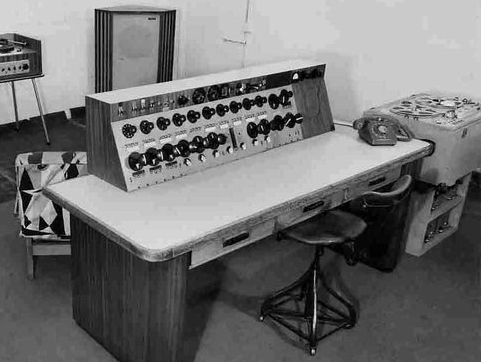 One complaint Paul had about these early acetates was that the January 26th, 1969 version of “Let It Be” that it contained was inferior to what they had recorded on January 31st, 1969. He apparently wasn't happy with the chosen take of “The Long And Winding Road” either, so two days later, on March 12th, 1969, Glyn Johns (and possibly George Martin) re-entered Olympic Studios to create new stereo mixes of these two songs as recorded on January 31st, 1969. They chose "take 27," the next-to-last rendition they recorded on that day, which eventually would be used for the released single and album. One complaint Paul had about these early acetates was that the January 26th, 1969 version of “Let It Be” that it contained was inferior to what they had recorded on January 31st, 1969. He apparently wasn't happy with the chosen take of “The Long And Winding Road” either, so two days later, on March 12th, 1969, Glyn Johns (and possibly George Martin) re-entered Olympic Studios to create new stereo mixes of these two songs as recorded on January 31st, 1969. They chose "take 27," the next-to-last rendition they recorded on that day, which eventually would be used for the released single and album.
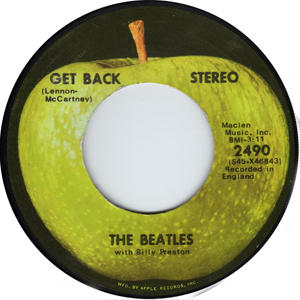 One thing George wasn't happy about on the chosen take of “Let It Be” was his inferior guitar solo. While other takes of the song recorded on that day included better solos, the overall performances by The Beatles weren't as good as "take 27." Therefore, even though they swore not to add any overdubs to the project, they decided to make an exception here. After all, there were some edits and slight overdubs done on the “Get Back / Don't Let Me Down” single that was recently released. One thing George wasn't happy about on the chosen take of “Let It Be” was his inferior guitar solo. While other takes of the song recorded on that day included better solos, the overall performances by The Beatles weren't as good as "take 27." Therefore, even though they swore not to add any overdubs to the project, they decided to make an exception here. After all, there were some edits and slight overdubs done on the “Get Back / Don't Let Me Down” single that was recently released.
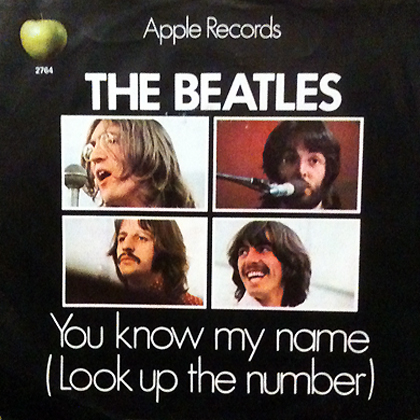 The Beatles entered EMI Studio Three on April 30th, 1969, at 7:15 pm, the first order of business being for George to overdub a more suitable lead guitar solo onto the eight-track tape of “Let It Be” with Chris Thomas as producer. With this done to everyone's satisfaction, John and Paul used the remainder of the session to add vocal and sound effects overdubs to a recording they started in 1967 entitled “You Know My Name (Look Up The Number),” a mono mix of this song being made at the end of the session. They probably didn't realize it at the time, but both of the songs they worked on at this session ended up being released as the a- and b-side of their 1970 single, which came out just before the announcement of the band's breakup. In any event, this overdub session concluded at 2 am the following morning. The Beatles entered EMI Studio Three on April 30th, 1969, at 7:15 pm, the first order of business being for George to overdub a more suitable lead guitar solo onto the eight-track tape of “Let It Be” with Chris Thomas as producer. With this done to everyone's satisfaction, John and Paul used the remainder of the session to add vocal and sound effects overdubs to a recording they started in 1967 entitled “You Know My Name (Look Up The Number),” a mono mix of this song being made at the end of the session. They probably didn't realize it at the time, but both of the songs they worked on at this session ended up being released as the a- and b-side of their 1970 single, which came out just before the announcement of the band's breakup. In any event, this overdub session concluded at 2 am the following morning.
 On May 28th, 1969, George Martin, Glyn Johns, engineer Steve Vaughan and George Harrison (the only Beatle in town at the time) entered Olympic Sound Studios in London to create a stereo mix of “Let It Be” that included George's newly recorded guitar solo. Also included in this mix, at the song's beginning, was a member of the film crew announcing “'Take 27' (the sound of a clapperboard)...'Take 27,' sync to second clap (the sound of the second clap)” and Paul responding, “Sync to second clap, please.” On May 28th, 1969, George Martin, Glyn Johns, engineer Steve Vaughan and George Harrison (the only Beatle in town at the time) entered Olympic Sound Studios in London to create a stereo mix of “Let It Be” that included George's newly recorded guitar solo. Also included in this mix, at the song's beginning, was a member of the film crew announcing “'Take 27' (the sound of a clapperboard)...'Take 27,' sync to second clap (the sound of the second clap)” and Paul responding, “Sync to second clap, please.”
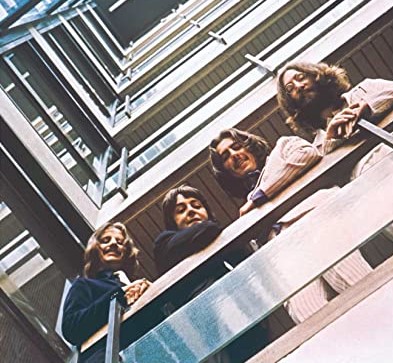 After this stereo mix was made, the above engineering team, with George Harrison looking on, accomplished the master tape banding and compilation of the proposed “Get Back” album, “Let It Be” being slated as the sixth track on side two. The Beatles were keen on having this album released in the summer of 1969, even arranging to have photographer Angus McBean take pictures of them in the same pose as he had taken for the front cover of their 1963 “Please Please Me” album. However, they decided to postpone the release of this album for the time being. After this stereo mix was made, the above engineering team, with George Harrison looking on, accomplished the master tape banding and compilation of the proposed “Get Back” album, “Let It Be” being slated as the sixth track on side two. The Beatles were keen on having this album released in the summer of 1969, even arranging to have photographer Angus McBean take pictures of them in the same pose as he had taken for the front cover of their 1963 “Please Please Me” album. However, they decided to postpone the release of this album for the time being.
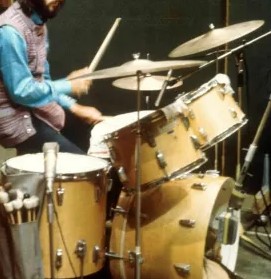 By the beginning of 1970, with the decision to release the footage of January 1969 as a full-length motion picture in order to fulfill their contract with United Artists, The Beatles felt they needed to work a little further to get those songs to a releasable condition. With John on vacation in Denmark (having announced his decision to quit The Beatles on September 19th, 1969), Paul, George and Ringo first got together on January 3rd to record “I Me Mine,” since footage of their rehearsal of the song was slated to be in the film. With that accomplished, a decision was made to add more overdubs onto “Let It Be” as well. By the beginning of 1970, with the decision to release the footage of January 1969 as a full-length motion picture in order to fulfill their contract with United Artists, The Beatles felt they needed to work a little further to get those songs to a releasable condition. With John on vacation in Denmark (having announced his decision to quit The Beatles on September 19th, 1969), Paul, George and Ringo first got together on January 3rd to record “I Me Mine,” since footage of their rehearsal of the song was slated to be in the film. With that accomplished, a decision was made to add more overdubs onto “Let It Be” as well.
 George Martin was commissioned to write a score for brass and cello overdubs for the song, hiring approximately eight studio musicians for the next day, January 4th, 1970, for a recording session at EMI Studio Two. Before the studio musicians arrived, George, Paul and Linda McCartney added some nice harmonized backing vocals to the song (described in Mal Evans's diary as "aahing and oohing"), thus wiping out John and George's original backing vocals. According to a 2022 interview with Mary McCartney referenced in the book "Living The Beatles Legend," Mary Hopkin was scheduled to provide backing vocals on this day but was not able to make it. Paul also replaced John's bass performance from the original recording at this time, the result being that John Lennon does not appear on either the single or album version of the song "Let It Be" at all. It could be that, since John had stated that he didn't want to be in the band anymore, Paul decided to record a more suitable bass track on this song himself. George Martin was commissioned to write a score for brass and cello overdubs for the song, hiring approximately eight studio musicians for the next day, January 4th, 1970, for a recording session at EMI Studio Two. Before the studio musicians arrived, George, Paul and Linda McCartney added some nice harmonized backing vocals to the song (described in Mal Evans's diary as "aahing and oohing"), thus wiping out John and George's original backing vocals. According to a 2022 interview with Mary McCartney referenced in the book "Living The Beatles Legend," Mary Hopkin was scheduled to provide backing vocals on this day but was not able to make it. Paul also replaced John's bass performance from the original recording at this time, the result being that John Lennon does not appear on either the single or album version of the song "Let It Be" at all. It could be that, since John had stated that he didn't want to be in the band anymore, Paul decided to record a more suitable bass track on this song himself.
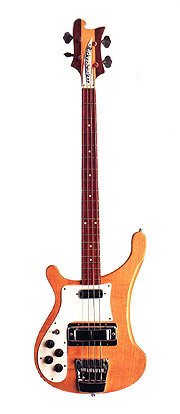 In order to perform a reduction mix onto another tape, the newly-arrived brass musicians played George Martin's score simultaneously with the recording, along with Paul playing electric piano whenever "the F bit" occurred. As it turned out, however, it took three attempts to get the best possible tape reduction (labeled takes 28 through 30), so the brass players performed the score on each of the three reductions, "take 30" being deemed the best. At this point, according to Paul's notes as contained in the "Let It Be" album Anniversary book, the eight-track tape consisted of Paul's original vocal on track one, George, Paul and Linda's backing vocal on track two, Billy Preston's organ on track three, Paul's bass overdub on track four, brass and Paul's electric piano on track five (which had previously been used for the sync pulse for the film), Ringo's original drums on track six, George's overdubbed guitar solo on track seven, and Paul's original piano on track eight. In order to perform a reduction mix onto another tape, the newly-arrived brass musicians played George Martin's score simultaneously with the recording, along with Paul playing electric piano whenever "the F bit" occurred. As it turned out, however, it took three attempts to get the best possible tape reduction (labeled takes 28 through 30), so the brass players performed the score on each of the three reductions, "take 30" being deemed the best. At this point, according to Paul's notes as contained in the "Let It Be" album Anniversary book, the eight-track tape consisted of Paul's original vocal on track one, George, Paul and Linda's backing vocal on track two, Billy Preston's organ on track three, Paul's bass overdub on track four, brass and Paul's electric piano on track five (which had previously been used for the sync pulse for the film), Ringo's original drums on track six, George's overdubbed guitar solo on track seven, and Paul's original piano on track eight.
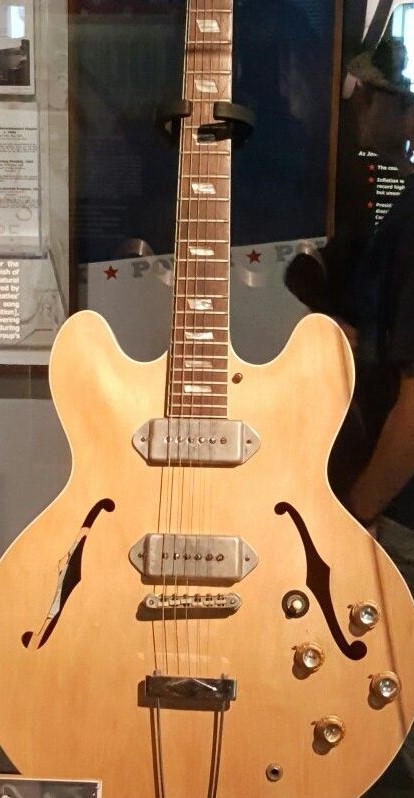 More elements were deemed necessary so a further reduction mix was made to combine tracks and open up more tracks for overdubs. This having been accomplished, George added yet another lead guitar overdub, a more stinging distorted one as apposed to the more subdued April 30th, 1969 overdub played through a rotating Leslie speaker. Photographic evidence from this day suggests he used John's Epiphone Casino guitar for this overdub, as he had done the previous day for his guitar work on "I Me Mine." Since this new guitar solo was added to its own track on the new tape, both overdubbed solos were isolated onto different tracks. More elements were deemed necessary so a further reduction mix was made to combine tracks and open up more tracks for overdubs. This having been accomplished, George added yet another lead guitar overdub, a more stinging distorted one as apposed to the more subdued April 30th, 1969 overdub played through a rotating Leslie speaker. Photographic evidence from this day suggests he used John's Epiphone Casino guitar for this overdub, as he had done the previous day for his guitar work on "I Me Mine." Since this new guitar solo was added to its own track on the new tape, both overdubbed solos were isolated onto different tracks.
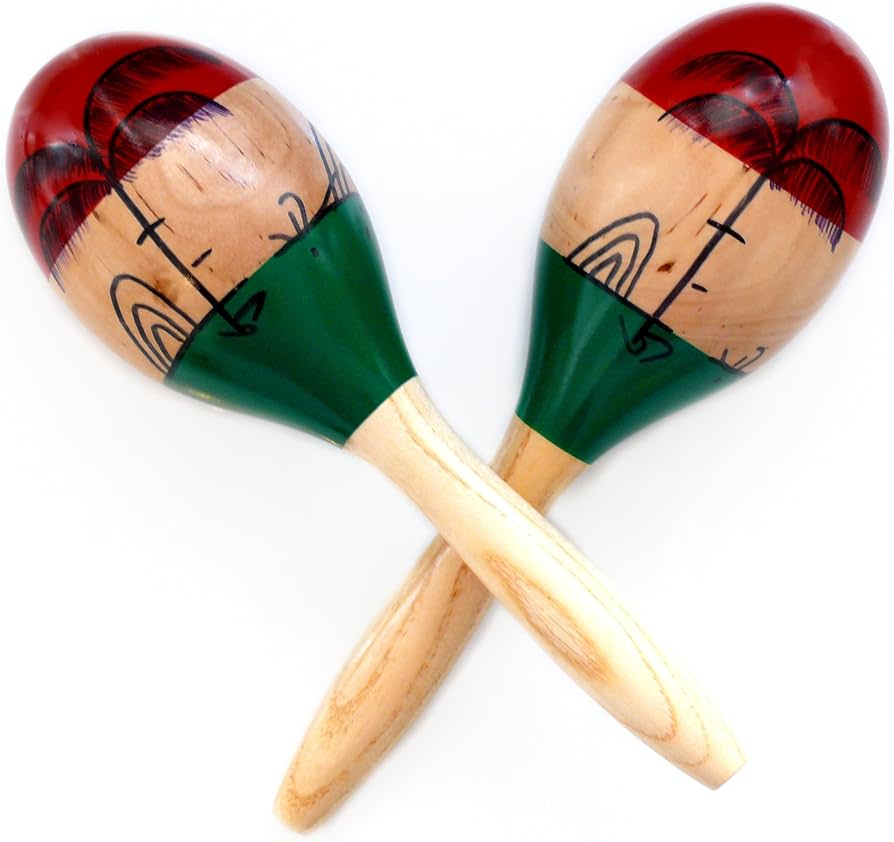 Other overdubs recorded on this day were a combined effort of Ringo on drums and Paul on maracas during the final verses of the song, additional backing vocals from George, Paul and Linda to the point that they are triple-tracked on the recording, and a concluding score for cellos to finish off the arrangement. The configuration of the eight-track tape was now as follows: Paul's original vocal and electric piano overdub on track one, Cellos for the final 50 seconds of the song on track two, Billy Preston's organ on track three, George's new guitar solo and Ringo's additional drums and Paul's maracas on track four, brass on track five, Ringo's original drums and Paul's overdubbed bass on track six, George's first overdubbed guitar solo and all of the backing vocals on seven, and Paul's original piano on track eight. Other overdubs recorded on this day were a combined effort of Ringo on drums and Paul on maracas during the final verses of the song, additional backing vocals from George, Paul and Linda to the point that they are triple-tracked on the recording, and a concluding score for cellos to finish off the arrangement. The configuration of the eight-track tape was now as follows: Paul's original vocal and electric piano overdub on track one, Cellos for the final 50 seconds of the song on track two, Billy Preston's organ on track three, George's new guitar solo and Ringo's additional drums and Paul's maracas on track four, brass on track five, Ringo's original drums and Paul's overdubbed bass on track six, George's first overdubbed guitar solo and all of the backing vocals on seven, and Paul's original piano on track eight.
 With all of the overdubs complete, George Martin and engineers Phil McDonald and Richard Langham took to creating a stereo mix of the song, their second attempt being deemed best at the time. By 4 am the following morning, the session was complete, this being the final Beatles recording session of their career (apart from the “Free As A Bird / Real Love / Now And Then” sessions from the mid '90s). With all of the overdubs complete, George Martin and engineers Phil McDonald and Richard Langham took to creating a stereo mix of the song, their second attempt being deemed best at the time. By 4 am the following morning, the session was complete, this being the final Beatles recording session of their career (apart from the “Free As A Bird / Real Love / Now And Then” sessions from the mid '90s).
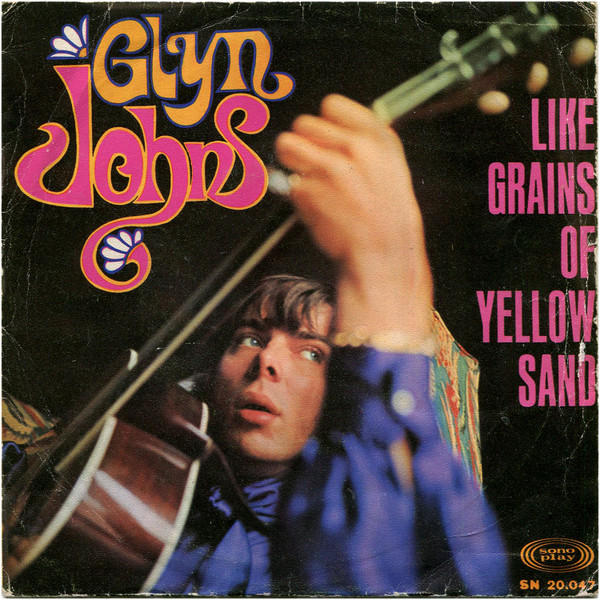 It's interesting to note that, given Glyn Johns' attempt at putting together another “Get Back” album the following day at Olympic Sound Studios, these new “Let It Be” overdubs from January 4th, 1970 were overlooked. It undoubtedly was thought that, given The Beatles' original plan to avoid all overdubs, the presence of brass and cellos on “Let It Be” wouldn't fit with these plans. Glyn Johns instead submitted his previous mix of the song, repositioning it as the last song of side one this time around. This second configuration of the album, of course, never saw the light of day either. It's interesting to note that, given Glyn Johns' attempt at putting together another “Get Back” album the following day at Olympic Sound Studios, these new “Let It Be” overdubs from January 4th, 1970 were overlooked. It undoubtedly was thought that, given The Beatles' original plan to avoid all overdubs, the presence of brass and cellos on “Let It Be” wouldn't fit with these plans. Glyn Johns instead submitted his previous mix of the song, repositioning it as the last song of side one this time around. This second configuration of the album, of course, never saw the light of day either.
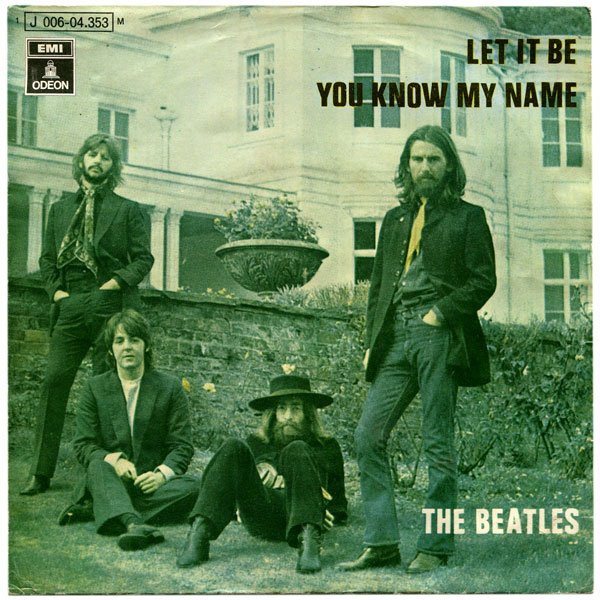 According to Paul's diary entry for January 8th, 1970, he apparently attended a mixing session for the song "Let It Be" at Olympic Sound Studios so as to include the January 4th, 1969 overdubs. The session is said to have begun at 2:30 pm and seems to have been to his satisfaction. "Yes. Thank you, great mix," was written in his diary, along with the personal note, "Daddy sick with stomach flu." Since no official documentation has surfaced about this mixing session, we may assume that Glyn Johns was involved in creating this mix as well, it undoubtedly being the mix internationally released as the first Beatles single of the new decade. Interestingly, a decision was made to include George's first overdubbed guitar solo from April 30th, 1969 for this mix, the engineer muting the guitarist's newly created stinging solo from the master tape when the mix was being created. Tape bleed-through from George's later guitar solo, however, allows it to be faintly heard during the final chorus. According to Paul's diary entry for January 8th, 1970, he apparently attended a mixing session for the song "Let It Be" at Olympic Sound Studios so as to include the January 4th, 1969 overdubs. The session is said to have begun at 2:30 pm and seems to have been to his satisfaction. "Yes. Thank you, great mix," was written in his diary, along with the personal note, "Daddy sick with stomach flu." Since no official documentation has surfaced about this mixing session, we may assume that Glyn Johns was involved in creating this mix as well, it undoubtedly being the mix internationally released as the first Beatles single of the new decade. Interestingly, a decision was made to include George's first overdubbed guitar solo from April 30th, 1969 for this mix, the engineer muting the guitarist's newly created stinging solo from the master tape when the mix was being created. Tape bleed-through from George's later guitar solo, however, allows it to be faintly heard during the final chorus.
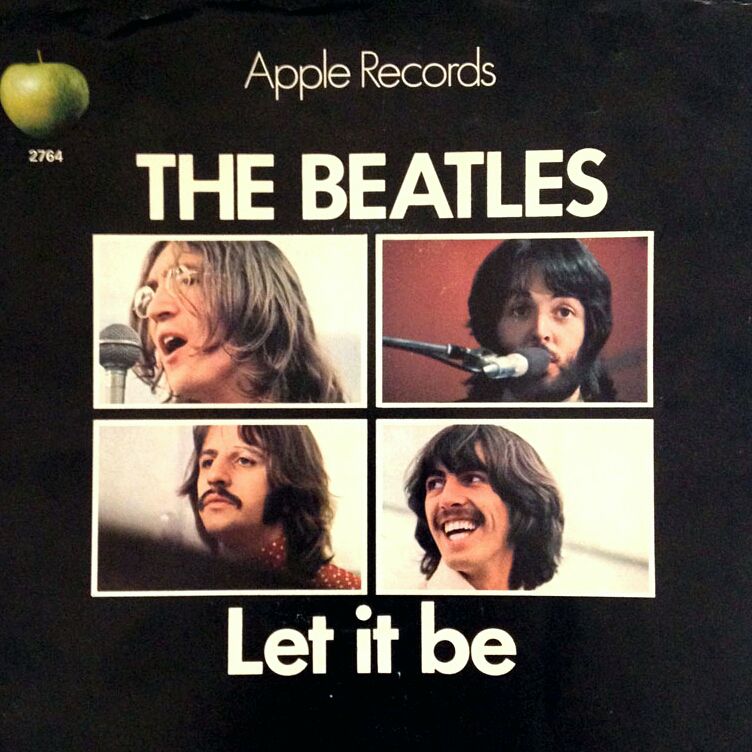 With George Martin's production of “Let It Be” released as a single in early March of 1970, Phil Spector decided to provide a somewhat different mix of the song for the soundtrack album once he was hired as its producer. He undoubtedly wanted to present the song in a different light to give the illusion of this being an entirely different performance, although he used the same exact January 31st, 1969 rendition ("take 27") as was used on the released single. With George Martin's production of “Let It Be” released as a single in early March of 1970, Phil Spector decided to provide a somewhat different mix of the song for the soundtrack album once he was hired as its producer. He undoubtedly wanted to present the song in a different light to give the illusion of this being an entirely different performance, although he used the same exact January 31st, 1969 rendition ("take 27") as was used on the released single.
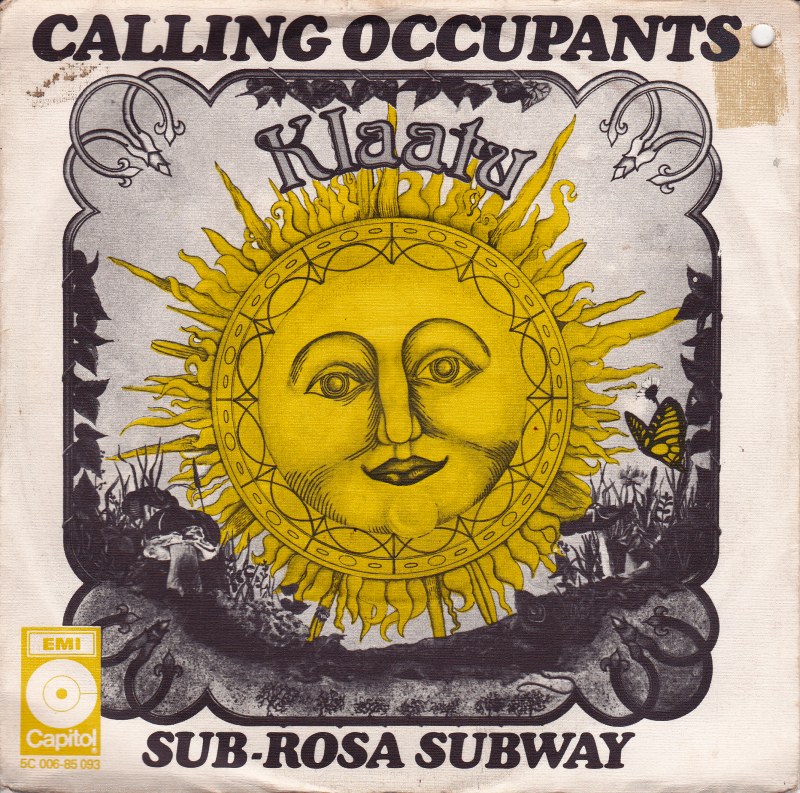 On March 26th, 1970, Phil Spector and engineers Peter Bown and Roger Ferris entered Room 4 of EMI Studios to work on creating stereo mixes of four of the songs to be featured on the soundtrack album, “Let It Be” being one of them. He made four attempts at getting a new mix of the song, the fourth being deemed the best. Being the master of the famous “Wall Of Sound” as heard on his American productions, Spector added a good amount of tape echo to Paul's maracas in the third set of verses and Ringo's hi-hat in the second set of verses, punching up the drummer's contribution to be a stand-out feature of the recording (this being parodied by the group Klaatu on their classic song “Sub Rosa Subway”). He also elevated George Martin's brass arrangement much higher in the mix, choosing Harrison's searing new guitar work from January 4th, 1970 to give the song a more jarring presence. On March 26th, 1970, Phil Spector and engineers Peter Bown and Roger Ferris entered Room 4 of EMI Studios to work on creating stereo mixes of four of the songs to be featured on the soundtrack album, “Let It Be” being one of them. He made four attempts at getting a new mix of the song, the fourth being deemed the best. Being the master of the famous “Wall Of Sound” as heard on his American productions, Spector added a good amount of tape echo to Paul's maracas in the third set of verses and Ringo's hi-hat in the second set of verses, punching up the drummer's contribution to be a stand-out feature of the recording (this being parodied by the group Klaatu on their classic song “Sub Rosa Subway”). He also elevated George Martin's brass arrangement much higher in the mix, choosing Harrison's searing new guitar work from January 4th, 1970 to give the song a more jarring presence.
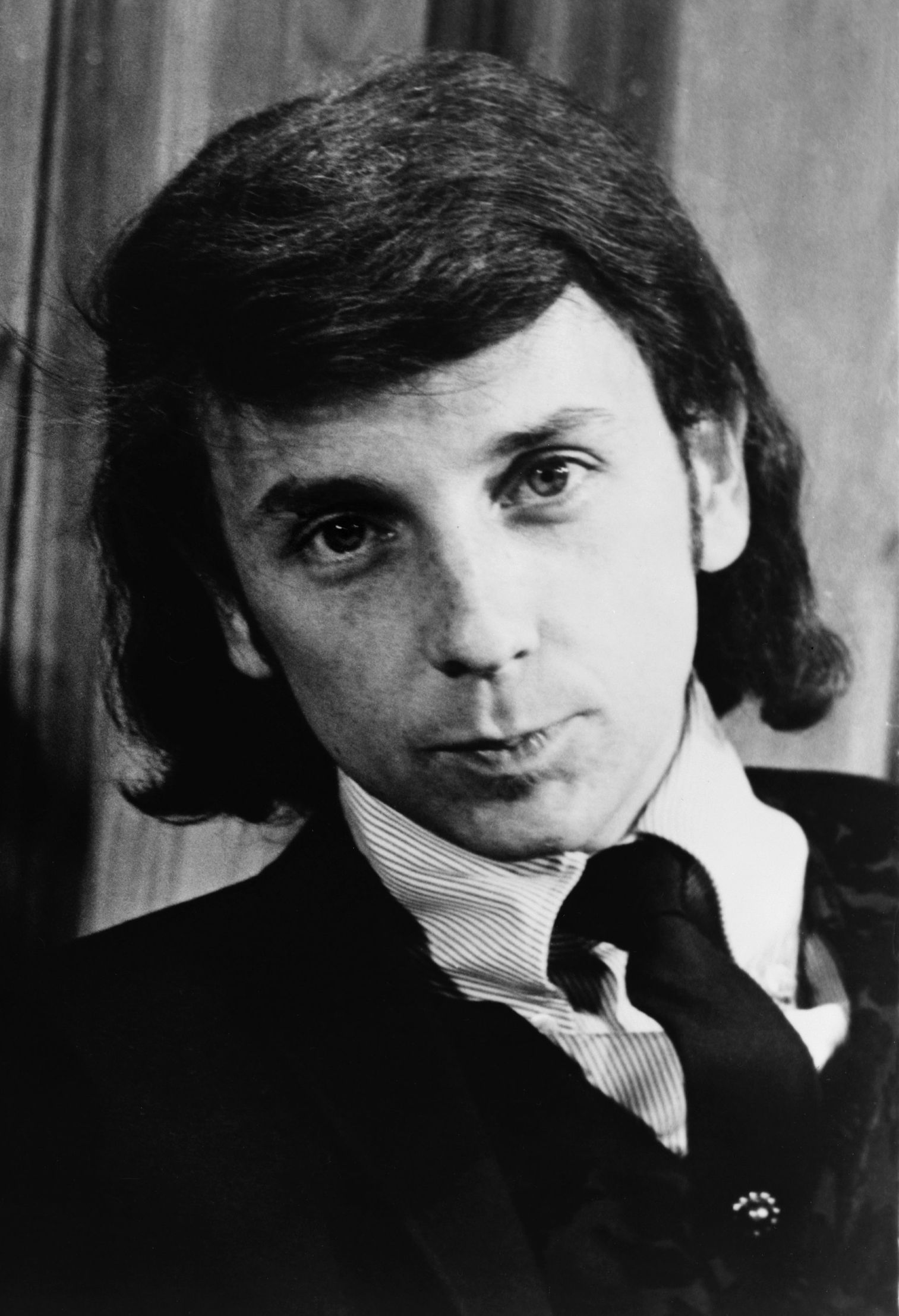 One other trick that Phil Spector had up his sleeve was to extend the song from 3:50 to 4:01 by editing in a repeat of one of the final choruses, there now being three choruses instead of two. It took him four attempts to get this edit done satisfactorily, the best attempt identified as 'remix stereo 1.' Since this song was now going to be featured as the title track of the movie, as well as the newly released hit Beatles single, Spector obviously felt “Let It Be” needed to be the album's true focal point. Opinions vary as to which released version of the song is better. John Lennon, who has gone on record to compliment Spector on his production of the soundtrack album, had to admit, however, that his treatment of “Let It Be” was “a little fruity.” One other trick that Phil Spector had up his sleeve was to extend the song from 3:50 to 4:01 by editing in a repeat of one of the final choruses, there now being three choruses instead of two. It took him four attempts to get this edit done satisfactorily, the best attempt identified as 'remix stereo 1.' Since this song was now going to be featured as the title track of the movie, as well as the newly released hit Beatles single, Spector obviously felt “Let It Be” needed to be the album's true focal point. Opinions vary as to which released version of the song is better. John Lennon, who has gone on record to compliment Spector on his production of the soundtrack album, had to admit, however, that his treatment of “Let It Be” was “a little fruity.”
 Sometime in 1996, George Martin and engineer Geoff Emerick returned to the January 25th, 1969 master tape of “Let It Be” to create a mix of the unfinished song for inclusion on the compilation album “Anthology 3.” They included Paul's introductory remark “This here's gonna knock you out” that was uttered before that take was originally recorded, but also edited in a couple Lennon utterances from their January 31st sessions just for fun, these being “Are we supposed to giggle in the solo?” and "I think that was rather grand. I'd take one home with me...OK, let's track it...You bounder, you cheat!" Sometime in 1996, George Martin and engineer Geoff Emerick returned to the January 25th, 1969 master tape of “Let It Be” to create a mix of the unfinished song for inclusion on the compilation album “Anthology 3.” They included Paul's introductory remark “This here's gonna knock you out” that was uttered before that take was originally recorded, but also edited in a couple Lennon utterances from their January 31st sessions just for fun, these being “Are we supposed to giggle in the solo?” and "I think that was rather grand. I'd take one home with me...OK, let's track it...You bounder, you cheat!"
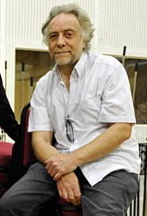 Then, sometime in 2003, the engineering team of Paul Hicks, Guy Massey and Allan Rouse returned to the January 31st, 1969 master tape of "take 27a" to create a new mix of “Let It Be” for inclusion on the album “Let It Be...Naked.” Since George's guitar solo was considered subpar on this take, his solo from "take 27b" was edited in to create the perfect rendition as originally intended, without any overdubs. Also corrected was a piano flub from Paul during the final chorus behind the lyric "Mother Mary," his performance from "take 27b" being edited in. With the versions of "Let It Be" featured on the single, the album, and on "Anthology 3," "Let It Be...Naked" features the fourth version of the song's guitar solo to be released thus far. Then, sometime in 2003, the engineering team of Paul Hicks, Guy Massey and Allan Rouse returned to the January 31st, 1969 master tape of "take 27a" to create a new mix of “Let It Be” for inclusion on the album “Let It Be...Naked.” Since George's guitar solo was considered subpar on this take, his solo from "take 27b" was edited in to create the perfect rendition as originally intended, without any overdubs. Also corrected was a piano flub from Paul during the final chorus behind the lyric "Mother Mary," his performance from "take 27b" being edited in. With the versions of "Let It Be" featured on the single, the album, and on "Anthology 3," "Let It Be...Naked" features the fourth version of the song's guitar solo to be released thus far.
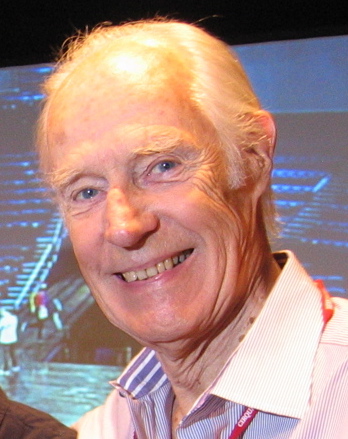 “Let It Be” was returned to once again sometime between 2004 and 2006 by George Martin and his son Giles Martin to add a bit of the song's elements within a mash-up version of “All You Need Is Love” for the album “Love.” Then, sometime in 2018, Giles discovered The Beatles' first ad-lib recording of “Let It Be” from September 5th, 1968, in-between takes of “While My Guitar Gently Weeps,” this being mixed for inclusion in the “Super Deluxe” 50th Anniversary “White Album” box set. “Let It Be” was returned to once again sometime between 2004 and 2006 by George Martin and his son Giles Martin to add a bit of the song's elements within a mash-up version of “All You Need Is Love” for the album “Love.” Then, sometime in 2018, Giles discovered The Beatles' first ad-lib recording of “Let It Be” from September 5th, 1968, in-between takes of “While My Guitar Gently Weeps,” this being mixed for inclusion in the “Super Deluxe” 50th Anniversary “White Album” box set.
 Sometime in 2021, Giles Martin and engineer Sam Okell returned to the master tapes of the song "Let It Be" to create a new mix for inclusion on an Anniversary version of the "Let It Be" album available in various editions. They also created three additional stereo mixes of the song, the first ("take 10") being recorded on January 26th, 1969, the second ("take 27") with George Harrison's guitar solo overdub from April 30th, 1969 as appearing on the released 1970 single, and the final group recording of the song at Apple Studios on January 31st, 1969. Also, the undoctored "take 27" recorded on January 31st, 1969 as included in the proposed Glyn Johns "Get Back" album of 1969 was remastered at this time. Sometime in 2021, Giles Martin and engineer Sam Okell returned to the master tapes of the song "Let It Be" to create a new mix for inclusion on an Anniversary version of the "Let It Be" album available in various editions. They also created three additional stereo mixes of the song, the first ("take 10") being recorded on January 26th, 1969, the second ("take 27") with George Harrison's guitar solo overdub from April 30th, 1969 as appearing on the released 1970 single, and the final group recording of the song at Apple Studios on January 31st, 1969. Also, the undoctored "take 27" recorded on January 31st, 1969 as included in the proposed Glyn Johns "Get Back" album of 1969 was remastered at this time.
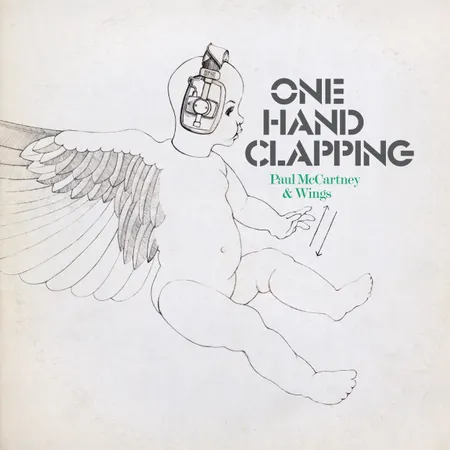 Various McCartney recordings of “Let It Be” have been released, the first being on August 28th, 1974 as recordeed by Geoff Emerick and assisted by Mark Vigars and John Barrett. Paul and his newly revised band Wings entered EMI Studios during the final week of August, 1974, to film and record a project entitled "One Hand Clapping," which was planned to be released at the time in conjunction with their new single "Junior's Farm / Sally G." After a few days of filming and recording full band performances, Paul sat at the piano and laid down several songs as solo performances on August 28th of that year, a quick one minute rendition of "Let It Be" being one of these performances, the first time this Beatles song was included in any post-Beatles project. This spontaneous acoustic rendition was eventually officially released on June 14th, 2024 as part of the "One Hand Clapping" double-album as detailed below. Various McCartney recordings of “Let It Be” have been released, the first being on August 28th, 1974 as recordeed by Geoff Emerick and assisted by Mark Vigars and John Barrett. Paul and his newly revised band Wings entered EMI Studios during the final week of August, 1974, to film and record a project entitled "One Hand Clapping," which was planned to be released at the time in conjunction with their new single "Junior's Farm / Sally G." After a few days of filming and recording full band performances, Paul sat at the piano and laid down several songs as solo performances on August 28th of that year, a quick one minute rendition of "Let It Be" being one of these performances, the first time this Beatles song was included in any post-Beatles project. This spontaneous acoustic rendition was eventually officially released on June 14th, 2024 as part of the "One Hand Clapping" double-album as detailed below.
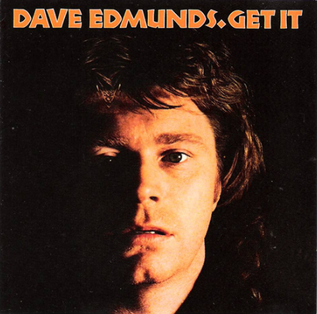 Various live renditions of "Let It Be" were then released by McCartney, begining with "Concerts For The People Of Kampuchea.” Paul's December 26th, 1979 performance of the song at the Hammersmith Odeon in London with the celebrity band “Rockestra,” featuring the current members of Wings, Pete Townshend, John Bonham, Robert Plant, John Paul Jones, Kenny Jones, Dave Edmunds and many others, was featured on the album. Various live renditions of "Let It Be" were then released by McCartney, begining with "Concerts For The People Of Kampuchea.” Paul's December 26th, 1979 performance of the song at the Hammersmith Odeon in London with the celebrity band “Rockestra,” featuring the current members of Wings, Pete Townshend, John Bonham, Robert Plant, John Paul Jones, Kenny Jones, Dave Edmunds and many others, was featured on the album.
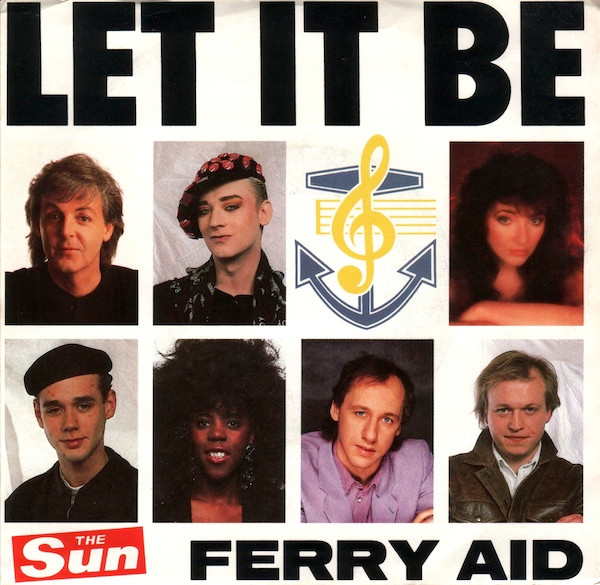 Paul later participated in a further recording of "Let It Be" between March 14th and 16th, 1987, the results being released as a charity fundraising single under the title of "Ferry Aid." The British tabloid newspaper The Sun organized a large group of British and American entertainers to contribute their vocal and musical skills to record this song in order to raise money for a charity set up in the aftermath of the Zeebrugge Disaster that occurred a week before on March 6th, 1987. The Sun sold inexpensive tickets for a ride on the MS Herald Of Free Enterprise ferry on that day, which unfortunately capsized moments after leaving the Belgian port of Zeebrugge, killing 193 passengers and crew. Paul provided permission to use the song as well as contributed his vocals from the original 1969 Beatles recording for the first verse. Among the plethora of other entertainers who contributed to the song were Boy George, Mark Knopfler, Kate Bush, Edwin Starr, Gary Moore, Kim Wilde and Nik Kershaw. The charity single was very successful, selling over 500,000 copies and peaking at #1 for three weeks in the UK as well as reaching the Top 10 in eight other countries. Paul later participated in a further recording of "Let It Be" between March 14th and 16th, 1987, the results being released as a charity fundraising single under the title of "Ferry Aid." The British tabloid newspaper The Sun organized a large group of British and American entertainers to contribute their vocal and musical skills to record this song in order to raise money for a charity set up in the aftermath of the Zeebrugge Disaster that occurred a week before on March 6th, 1987. The Sun sold inexpensive tickets for a ride on the MS Herald Of Free Enterprise ferry on that day, which unfortunately capsized moments after leaving the Belgian port of Zeebrugge, killing 193 passengers and crew. Paul provided permission to use the song as well as contributed his vocals from the original 1969 Beatles recording for the first verse. Among the plethora of other entertainers who contributed to the song were Boy George, Mark Knopfler, Kate Bush, Edwin Starr, Gary Moore, Kim Wilde and Nik Kershaw. The charity single was very successful, selling over 500,000 copies and peaking at #1 for three weeks in the UK as well as reaching the Top 10 in eight other countries.
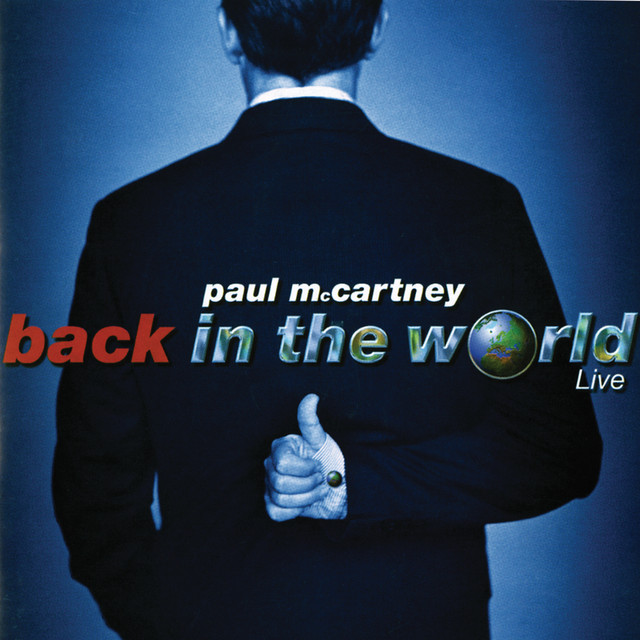 “Let It Be” was also recorded on April 14th, 1990 in Miami, Florida, the results being a feature on both his albums “Tripping The Live Fantastic” and “Tripping The Live Fantastic: Highlights!” Paul also performed the song at a benefit show he organized in response to the September 11th attacks on the US, the show taking place on October 20th, 2001 at Madison Square Garden. This concert was recorded and released on a double-album entitled “The Concert For New York City.” “Let It Be” was also recorded on May 13th, 2002 in Atlanta, Georgia, this being included on both his “Back In The US” and “Back In The World” albums. “Let It Be” was also recorded on April 14th, 1990 in Miami, Florida, the results being a feature on both his albums “Tripping The Live Fantastic” and “Tripping The Live Fantastic: Highlights!” Paul also performed the song at a benefit show he organized in response to the September 11th attacks on the US, the show taking place on October 20th, 2001 at Madison Square Garden. This concert was recorded and released on a double-album entitled “The Concert For New York City.” “Let It Be” was also recorded on May 13th, 2002 in Atlanta, Georgia, this being included on both his “Back In The US” and “Back In The World” albums.
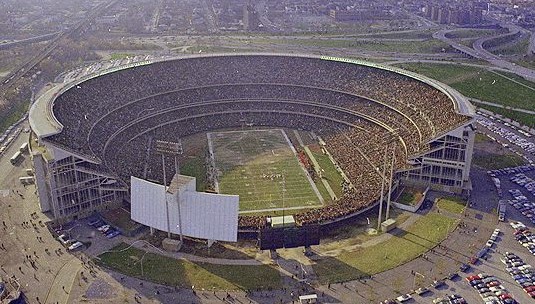 On June 27th, 2007, Paul and his band played a secret show at Amoeba Music in Hollywood, California, this version of “Let It Be” eventually being released on the album “Amoeba Gig” in 2019. On July 16th, 2008, McCartney made a guest appearance at a Billy Joel concert at Shea Stadium and performed “Let It Be” as a duet, this being recorded and featured on the Billy Joel album “Live At Shea Stadium: The Concert.” When Paul was performing at CitiField in New York City between July 17th and 21st, 2009, a recording of “Let It Be” was made that appeared on his “Good Evening New York City” album. On June 27th, 2007, Paul and his band played a secret show at Amoeba Music in Hollywood, California, this version of “Let It Be” eventually being released on the album “Amoeba Gig” in 2019. On July 16th, 2008, McCartney made a guest appearance at a Billy Joel concert at Shea Stadium and performed “Let It Be” as a duet, this being recorded and featured on the Billy Joel album “Live At Shea Stadium: The Concert.” When Paul was performing at CitiField in New York City between July 17th and 21st, 2009, a recording of “Let It Be” was made that appeared on his “Good Evening New York City” album.
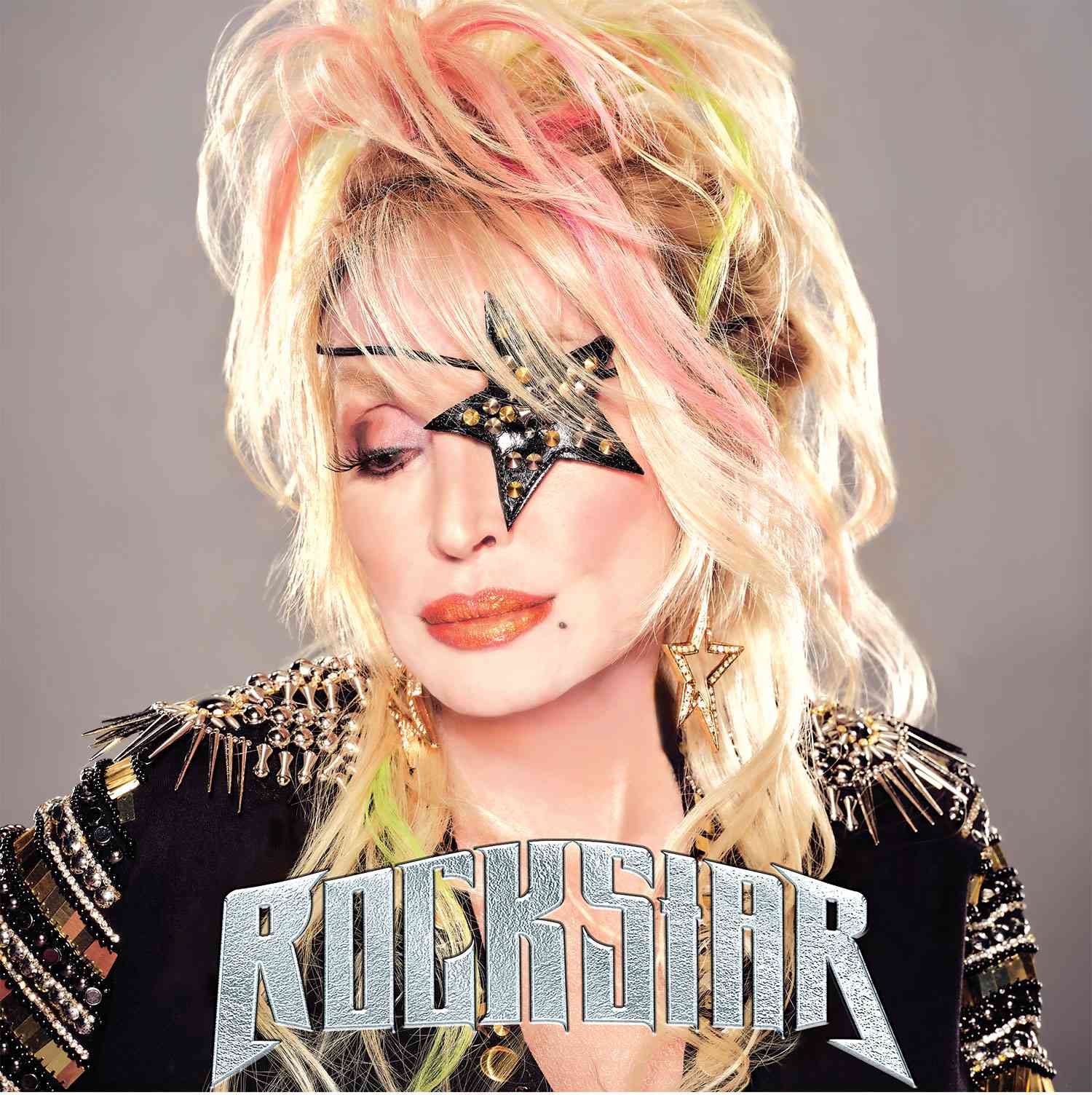 One additional studio recording of "Let It Be" took place sometime in 2023. Country artist Dolly Parton set out to record her first rock and roll album and phoned Paul McCartney to ask if she could include the song "Let It Be." Not only did Paul allow for it, he offered to appear on the recording as well, Ringo also being recruited as drummer. With Paul on piano and backing vocals, along with musical guests Peter Frampton and Mick Fleetwood, the recording was produced by Dolly Parton, Kent Wells, Mick Fleetwood and Don Miggs and was released as a single and as part of her album "Rockstar." One additional studio recording of "Let It Be" took place sometime in 2023. Country artist Dolly Parton set out to record her first rock and roll album and phoned Paul McCartney to ask if she could include the song "Let It Be." Not only did Paul allow for it, he offered to appear on the recording as well, Ringo also being recruited as drummer. With Paul on piano and backing vocals, along with musical guests Peter Frampton and Mick Fleetwood, the recording was produced by Dolly Parton, Kent Wells, Mick Fleetwood and Don Miggs and was released as a single and as part of her album "Rockstar."
Song Structure and Style
The gospel-tinged “Let It Be” can be parsed out to the following structure: 'verse (instrumental)/ verse/ verse/ chorus/ verse/ verse/ chorus/ chorus/ coda/ coda/ verse (solo)/ verse (solo)/ chorus/ verse/ verse/ chorus/ chorus/ coda' (or aaabaabbccaabaabbc).
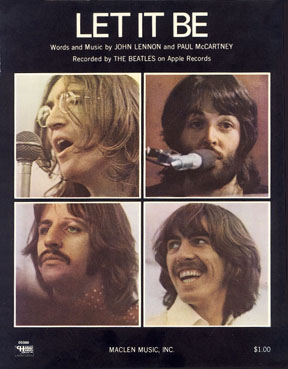 While this appears complex, it's actually quite simple. Because each verse section is actually a twice-repeated eight-measure pattern, they've been counted here as separate verses instead of just one. The same can be said about the coda, which is a four-measure pattern twice-repeated in the middle of the song but only played once at the song's conclusion. Since Paul's solo introduction is actually an instrumental version of the verse, it has been counted as such also. One change to this structure should be noted, however, when we consider the original album version of the song. Phil Spector edited in a repeat of one of the final choruses, which would add another “b” toward the end of the stucture indicated above. While this appears complex, it's actually quite simple. Because each verse section is actually a twice-repeated eight-measure pattern, they've been counted here as separate verses instead of just one. The same can be said about the coda, which is a four-measure pattern twice-repeated in the middle of the song but only played once at the song's conclusion. Since Paul's solo introduction is actually an instrumental version of the verse, it has been counted as such also. One change to this structure should be noted, however, when we consider the original album version of the song. Phil Spector edited in a repeat of one of the final choruses, which would add another “b” toward the end of the stucture indicated above.
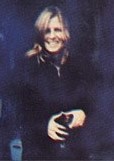 As mentioned, Paul's introductory piano verse appears first, this being eight measures in length like all of the other verses. The next two verses are identical, the only addition being Paul's vocal. The chorus that follows, which is also eight measures long, adds Paul, George and Linda's hushed “oooh” backing vocals, along with soft chords played by Billy Preston. As mentioned, Paul's introductory piano verse appears first, this being eight measures in length like all of the other verses. The next two verses are identical, the only addition being Paul's vocal. The chorus that follows, which is also eight measures long, adds Paul, George and Linda's hushed “oooh” backing vocals, along with soft chords played by Billy Preston.
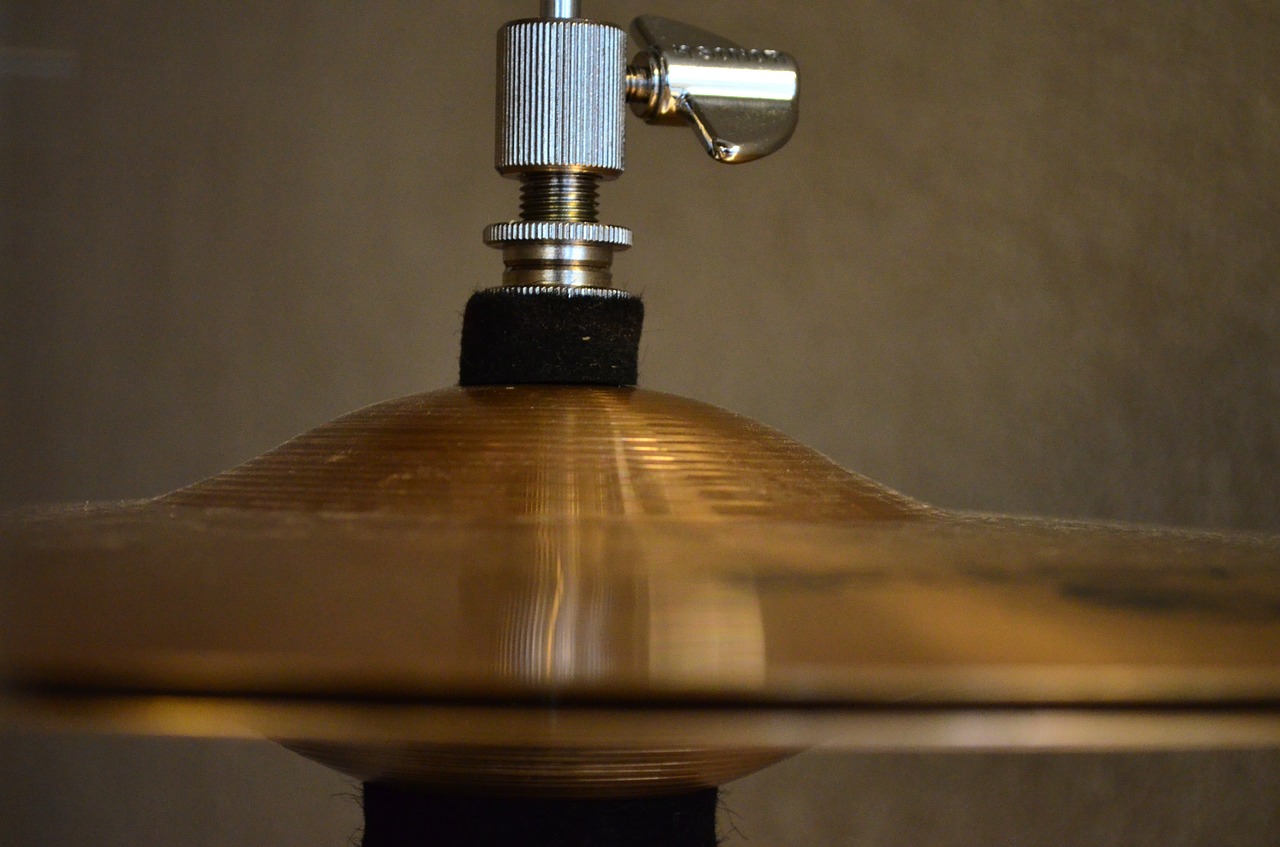 The next set of verses continues the above verse's instrumentation with the addition of Ringo's hi-hat taps (with additional echo on the album) and Paul's bass in the latter verse that is accentuated by some subtle organ from Billy. The energy kicks in on the following twice-repeated chorus, Ringo bringing this in appropriately with a drum fill in the latter verse's final measure. Ringo plays through both of these choruses with a steady swinging drum beat while riding on the hi-hat, punctuating the last measure of the first chorus with another drum fill. Paul sings with more gusto in these choruses while the presence of the backing “oooh”s and Billy's organ are more felt than heard. The latter chorus reveals the brass for the first time, which is substantially higher in the mix on the album. The next set of verses continues the above verse's instrumentation with the addition of Ringo's hi-hat taps (with additional echo on the album) and Paul's bass in the latter verse that is accentuated by some subtle organ from Billy. The energy kicks in on the following twice-repeated chorus, Ringo bringing this in appropriately with a drum fill in the latter verse's final measure. Ringo plays through both of these choruses with a steady swinging drum beat while riding on the hi-hat, punctuating the last measure of the first chorus with another drum fill. Paul sings with more gusto in these choruses while the presence of the backing “oooh”s and Billy's organ are more felt than heard. The latter chorus reveals the brass for the first time, which is substantially higher in the mix on the album.
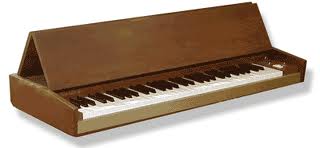 Next comes the twice-repeated coda, both of which are four measures in length. Each coda consists of a descending chord pattern ("the F bit"), the first one being played more vibrantly with Paul's acoustic piano, his electric piano overdub, his bass overdub, Billy's organ, George's lead guitar (appearing here for the first time in the song) and Ringo's drums all following each other down the scale. The second coda is primarily played by Billy on organ, adding a church-like religiosity to the song, Paul playing softly on piano and bass to subtly fill out the sound. It is to be noted here that Phil Spector chose to put Paul's Hohner Pianet overdub quite high in the mix during the first coda, presumably to differentiate his mix from the single version which was riding high on the charts while he was preparing his album version. Next comes the twice-repeated coda, both of which are four measures in length. Each coda consists of a descending chord pattern ("the F bit"), the first one being played more vibrantly with Paul's acoustic piano, his electric piano overdub, his bass overdub, Billy's organ, George's lead guitar (appearing here for the first time in the song) and Ringo's drums all following each other down the scale. The second coda is primarily played by Billy on organ, adding a church-like religiosity to the song, Paul playing softly on piano and bass to subtly fill out the sound. It is to be noted here that Phil Spector chose to put Paul's Hohner Pianet overdub quite high in the mix during the first coda, presumably to differentiate his mix from the single version which was riding high on the charts while he was preparing his album version.
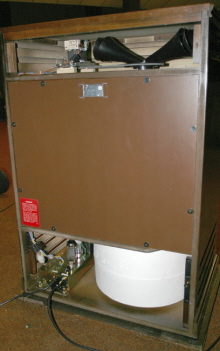 Two instrumental verses are heard next, the primary focus here being George's guitar solo. The more unobtrusive guitar part George overdubbed on April 30th, 1969 is heard on the single version, this being played through a rotating Leslie speaker. The brash distorted solo George played on January 4th, 1970 appears on the album version, Phil Spector obviously wanting to make the listener take notice of the rock 'n' roll sensibilities The Beatles were capable of, even on an otherwise tender but meaningful ballad. The single version, mixed under the supervision of Paul, conveys the tenderness of the message within the instrumentation, while Phil Spector aimed to jolt the audience with an “in your face” approach. Two instrumental verses are heard next, the primary focus here being George's guitar solo. The more unobtrusive guitar part George overdubbed on April 30th, 1969 is heard on the single version, this being played through a rotating Leslie speaker. The brash distorted solo George played on January 4th, 1970 appears on the album version, Phil Spector obviously wanting to make the listener take notice of the rock 'n' roll sensibilities The Beatles were capable of, even on an otherwise tender but meaningful ballad. The single version, mixed under the supervision of Paul, conveys the tenderness of the message within the instrumentation, while Phil Spector aimed to jolt the audience with an “in your face” approach.
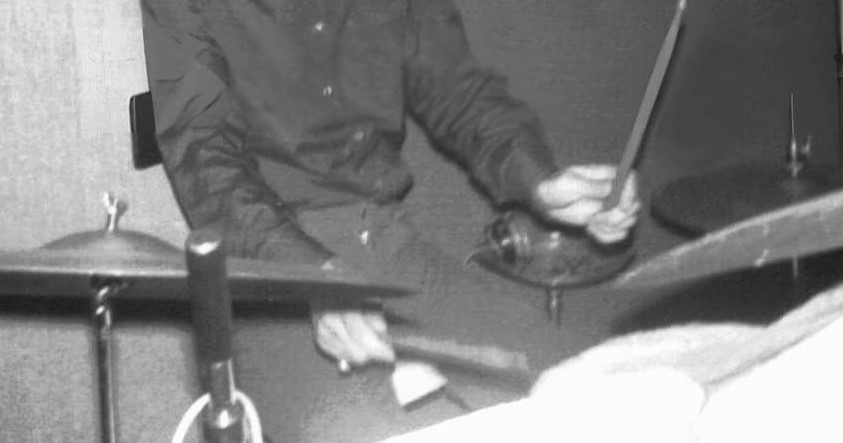 Otherwise, these instrumental verses bring the song to a high crescendo, all instrumentalists playing at full bore along with the brass overdub until George tastefully concludes his guitar solo (in both cases). Next comes a repeat of the chorus which slowly brings the tension down to prepare us for the concluding inspirational thoughts of the final two verses that follow. Ringo rides on the cymbal for this chorus as the brass accentuates the process of tying things together for what follows, Paul touching on a falsetto exclamation as this section ends. Otherwise, these instrumental verses bring the song to a high crescendo, all instrumentalists playing at full bore along with the brass overdub until George tastefully concludes his guitar solo (in both cases). Next comes a repeat of the chorus which slowly brings the tension down to prepare us for the concluding inspirational thoughts of the final two verses that follow. Ringo rides on the cymbal for this chorus as the brass accentuates the process of tying things together for what follows, Paul touching on a falsetto exclamation as this section ends.
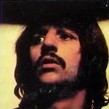 These final two verses feature percussive elements that are meant to differentiate these from all previous verses and help us decipher the meaning of Paul's final lyrical message to the listener. Paul's maracas come to the fore as do Ringo's added drum fills that are played throughout both verses, these elements having been added on January 4th, 1970. Paul's lyric “and when the night is cloudy...” within this atmosphere causes for us all to lean in and be inspired as he also accompanies himself quietly on piano. These final two verses feature percussive elements that are meant to differentiate these from all previous verses and help us decipher the meaning of Paul's final lyrical message to the listener. Paul's maracas come to the fore as do Ringo's added drum fills that are played throughout both verses, these elements having been added on January 4th, 1970. Paul's lyric “and when the night is cloudy...” within this atmosphere causes for us all to lean in and be inspired as he also accompanies himself quietly on piano.
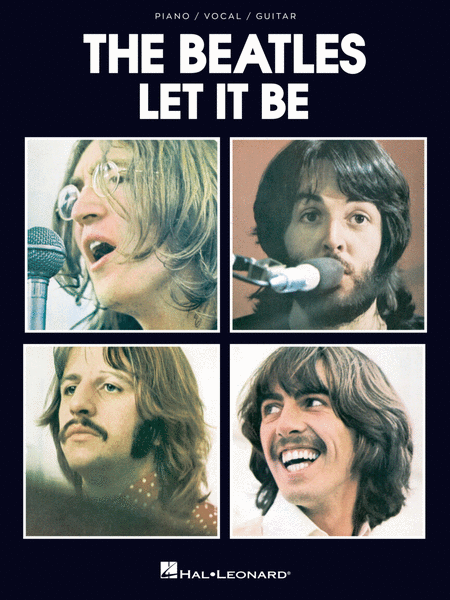 Paul may not have wanted Harrison's brash guitar solo to be featured in the mix used for the single, but it does make some brief appearances only because of tape bleed-through, the final measure of the second of this set of verses being the first occasion. Ringo returns to riding on his hi-hat here while Paul's bass and Billy's organ put in a more subdued performance as a backdrop to Paul's message. As Ringo pounds out a double-tracked drum fill to usher in the choruses that complete the message, Paul excitedly mutters, “Ee, yeah, let it be!” to bring in the song's climax. Paul may not have wanted Harrison's brash guitar solo to be featured in the mix used for the single, but it does make some brief appearances only because of tape bleed-through, the final measure of the second of this set of verses being the first occasion. Ringo returns to riding on his hi-hat here while Paul's bass and Billy's organ put in a more subdued performance as a backdrop to Paul's message. As Ringo pounds out a double-tracked drum fill to usher in the choruses that complete the message, Paul excitedly mutters, “Ee, yeah, let it be!” to bring in the song's climax.
 Ringo goes back to riding on his cymbal during the final set of choruses, while Paul loudly emphasizes his mother's comforting message (or was it Mal Evans' message?) so all can be inspired. Billy's organ and the brass musicians bring up the excitement as does George's vibrant lead guitar passage on Phil Spector's mix (another guitar bleed-through appearing in Paul's mix for the single at the end of the fourth measure of the last chorus). Phil Spector masterfully omits Harrison's lead guitar during the first of this final set of two choruses, but when the producer spools back to repeat this chorus a second time, he brings in George's 1970 solo as if the guitarist was waiting patiently in the wings for a few measures. Ringo goes back to riding on his cymbal during the final set of choruses, while Paul loudly emphasizes his mother's comforting message (or was it Mal Evans' message?) so all can be inspired. Billy's organ and the brass musicians bring up the excitement as does George's vibrant lead guitar passage on Phil Spector's mix (another guitar bleed-through appearing in Paul's mix for the single at the end of the fourth measure of the last chorus). Phil Spector masterfully omits Harrison's lead guitar during the first of this final set of two choruses, but when the producer spools back to repeat this chorus a second time, he brings in George's 1970 solo as if the guitarist was waiting patiently in the wings for a few measures.
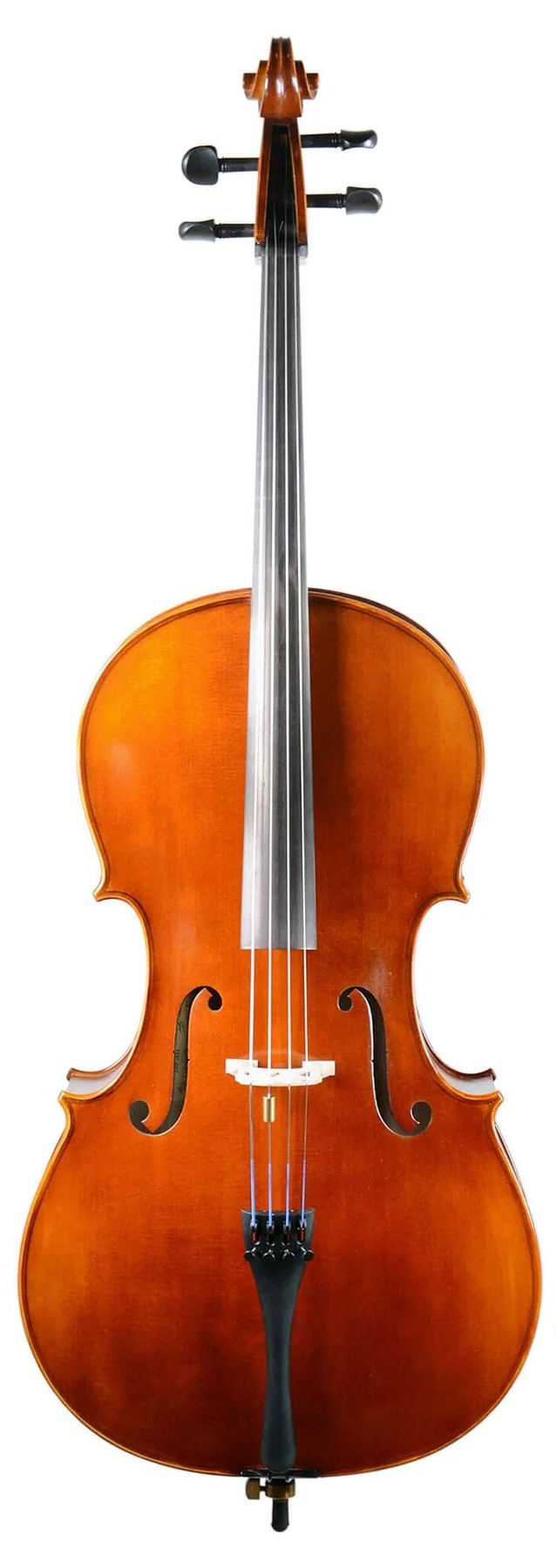 After one last falsetto offering from Paul in the final two measures of the last chorus, the concluding coda appears which subtly slows in tempo at the end to great effect. Once again, Paul's overdubbed electric piano takes center stage as all instruments, including a quiet cello overdub, follow him down the scale to a final cymbal crash and a higher octave shift from Paul's overdubbed bass to get in the final word. After one last falsetto offering from Paul in the final two measures of the last chorus, the concluding coda appears which subtly slows in tempo at the end to great effect. Once again, Paul's overdubbed electric piano takes center stage as all instruments, including a quiet cello overdub, follow him down the scale to a final cymbal crash and a higher octave shift from Paul's overdubbed bass to get in the final word.
American Releases
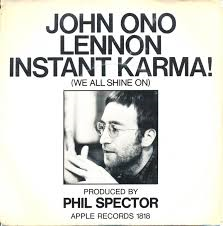 The next new Beatles single hit the stores on March 11th, 1970, just two weeks after the compilation album “Hey Jude” was released in the US. "Let It Be" was well received and downright irresistible, with its handsome black picture sleeve that, unbeknownst to anyone, would also be the cover of their soundtrack album two months later. Although all four members of the band had gone their seperate ways by this time, with John's single “Instant Karma” rising up the pop charts simultaneous to “Let It Be,” nobody seemed any the wiser that The Beatles were no more. This was simply their next single. The next new Beatles single hit the stores on March 11th, 1970, just two weeks after the compilation album “Hey Jude” was released in the US. "Let It Be" was well received and downright irresistible, with its handsome black picture sleeve that, unbeknownst to anyone, would also be the cover of their soundtrack album two months later. Although all four members of the band had gone their seperate ways by this time, with John's single “Instant Karma” rising up the pop charts simultaneous to “Let It Be,” nobody seemed any the wiser that The Beatles were no more. This was simply their next single.
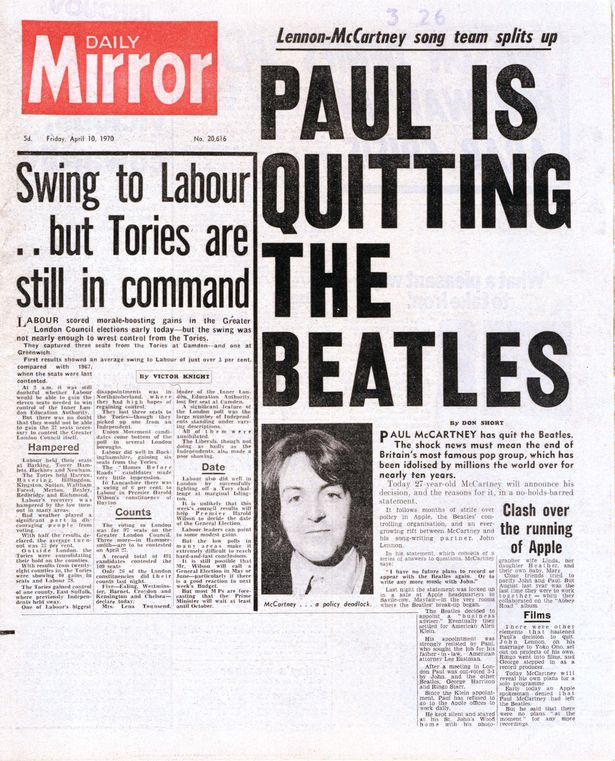 It wasn't until April 10th, a month after the “Let It Be” single was issued, that the British paper Daily Mirror ran the story “PAUL IS QUITTING THE BEATLES,” this being picked up and heralded around the world. The very next day, April 11th, 1970, “Let It Be” hit the #1 position on the US Billboard Hot 100, toppling Simon & Garfunkel's “Bridge Over Troubled Water” from the top spot. The song appeared as a comforting message to the world, as if it was planned that way, that everyone needed to accept the fact that The Beatles are no more and that it's going to be alright. The song stayed at #1 for a second week as well, spending a total of 11 weeks in the top ten. As if in a show of protest for the band's break-up, “Let It Be” only made it to #2 on the UK charts, which was an absolute rarity for a Beatles single. It wasn't until April 10th, a month after the “Let It Be” single was issued, that the British paper Daily Mirror ran the story “PAUL IS QUITTING THE BEATLES,” this being picked up and heralded around the world. The very next day, April 11th, 1970, “Let It Be” hit the #1 position on the US Billboard Hot 100, toppling Simon & Garfunkel's “Bridge Over Troubled Water” from the top spot. The song appeared as a comforting message to the world, as if it was planned that way, that everyone needed to accept the fact that The Beatles are no more and that it's going to be alright. The song stayed at #1 for a second week as well, spending a total of 11 weeks in the top ten. As if in a show of protest for the band's break-up, “Let It Be” only made it to #2 on the UK charts, which was an absolute rarity for a Beatles single.
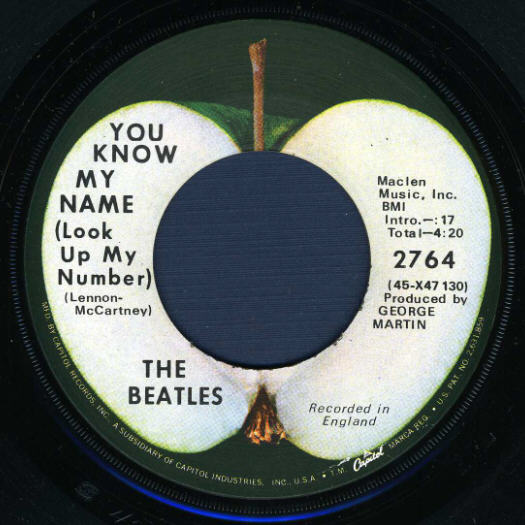 With the airwaves saturated by the comforting sounds of “Let It Be,” radio stations didn't bother to play its b-side, which was also extremely uncommon for a newly released Beatles single. The result was that the humorous b-side “You Know My Name (Look Up The Number)” never dented the Billboard Hot 100. With the airwaves saturated by the comforting sounds of “Let It Be,” radio stations didn't bother to play its b-side, which was also extremely uncommon for a newly released Beatles single. The result was that the humorous b-side “You Know My Name (Look Up The Number)” never dented the Billboard Hot 100.
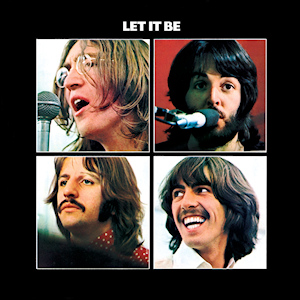 The Phil Spector version of “Let It Be” was released in the US on the “Let It Be” soundtrack album on May 18th, 1970. It was distributed in a gate-fold jacket in America, as opposed to the box set with photo book that was released in the UK. It spent four weeks in the top spot of the Billboard album chart and has sold well over four million copies in America alone. The Phil Spector version of “Let It Be” was released in the US on the “Let It Be” soundtrack album on May 18th, 1970. It was distributed in a gate-fold jacket in America, as opposed to the box set with photo book that was released in the UK. It spent four weeks in the top spot of the Billboard album chart and has sold well over four million copies in America alone.
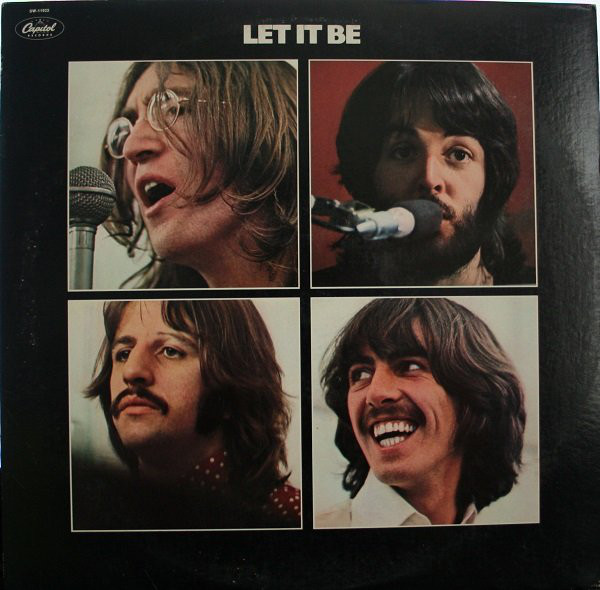 Despite having a red Apple Records label, "Let It Be" was distributed by United Artists Records upon initial release, although it was eventually dropped from the label's roster a few years later. While Capitol kept all other US Beatles albums in print throughout the '70s, “Let It Be” was the only LP from the group that wasn't legitimately available for a number of years. This was rectified in 1978, however, when Capitol purchased the UA catalog and re-released the “Let It Be” album once again, this time in a standard single sleeve cover. The album first appeared on compact disc on October 10th, 1987, and then as a remastered CD on September 9th, 2009. A newly mixed vinyl and CD edition of the album was then released on October 15th, 2021, as well as a special edition picture disc. Despite having a red Apple Records label, "Let It Be" was distributed by United Artists Records upon initial release, although it was eventually dropped from the label's roster a few years later. While Capitol kept all other US Beatles albums in print throughout the '70s, “Let It Be” was the only LP from the group that wasn't legitimately available for a number of years. This was rectified in 1978, however, when Capitol purchased the UA catalog and re-released the “Let It Be” album once again, this time in a standard single sleeve cover. The album first appeared on compact disc on October 10th, 1987, and then as a remastered CD on September 9th, 2009. A newly mixed vinyl and CD edition of the album was then released on October 15th, 2021, as well as a special edition picture disc.
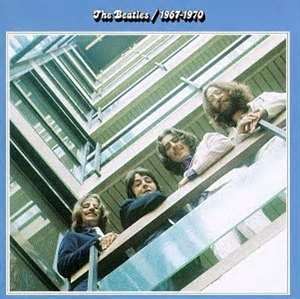 The single version of “Let It Be” was included on the April 19th, 1973 released compilation album “The Beatles / 1967 – 1970 (aka “The Blue Album”). This double-album peaked at #1 on the Billboard album chart and first appeared on compact disc on September 20th, 1993, a remastered version being released on August 10th, 2010. The single version of “Let It Be” was included on the April 19th, 1973 released compilation album “The Beatles / 1967 – 1970 (aka “The Blue Album”). This double-album peaked at #1 on the Billboard album chart and first appeared on compact disc on September 20th, 1993, a remastered version being released on August 10th, 2010.
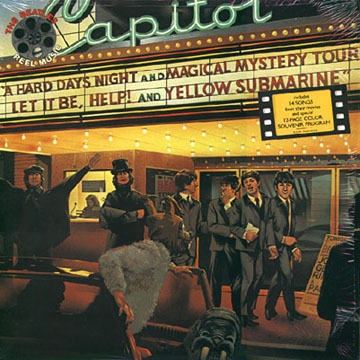 On March 22nd, 1982, Capitol once again included the song on a compilation album, this one corresponding with the re-release of their first movie "A Hard Day's Night" in movie theaters. The album was entitled “Reel Music,” which featured the predominant tracks from all of The Beatles’ movie releases. The album was quite successful, peaking at #19 on the Billboard album chart and certified gold by selling over 500,000 units. More than 12,000 promotional copies were also printed, these being on translucent gold vinyl. On March 22nd, 1982, Capitol once again included the song on a compilation album, this one corresponding with the re-release of their first movie "A Hard Day's Night" in movie theaters. The album was entitled “Reel Music,” which featured the predominant tracks from all of The Beatles’ movie releases. The album was quite successful, peaking at #19 on the Billboard album chart and certified gold by selling over 500,000 units. More than 12,000 promotional copies were also printed, these being on translucent gold vinyl.
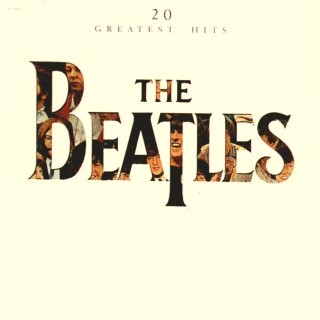 October 11th, 1982 saw another compilation album entitled “20 Greatest Hits,” the single version of “Let It Be” being the second-to-last song on side two of this collection. With the advent of MTV, it only peaked at #50 on the Billboard album chart. October 11th, 1982 saw another compilation album entitled “20 Greatest Hits,” the single version of “Let It Be” being the second-to-last song on side two of this collection. With the advent of MTV, it only peaked at #50 on the Billboard album chart.
In November of 1986, the “Let It Be” soundtrack album was also made available as an "Original Master Recording" release by Mobile Fidelity Sound Lab. Their practice was to prepare a new master utilizing half-speed mastering technology from the original master tapes, in this case using what was referred to therein as a “corrected copy tape.” The album was issued in both a single sleeve and gatefold cover, the single sleeve cover being the most rare.
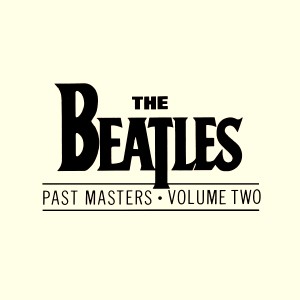 With the ushering in of the compact disc era, on March 7th, 1988 the single version of “Let It Be” found its way onto a newly created CD entitled “Past Masters, Volume Two.” For the vinyl edition of this title, it was decided to combine both volumes of "Past Masters" to form a double-album, this being released on October 24th, 1988. The double-album concept was continued for both the CD and vinyl remastered re-releases, the 2-CD set coming out on September 9th, 2009 and the vinyl double-album being released on November 12th, 2012. With the ushering in of the compact disc era, on March 7th, 1988 the single version of “Let It Be” found its way onto a newly created CD entitled “Past Masters, Volume Two.” For the vinyl edition of this title, it was decided to combine both volumes of "Past Masters" to form a double-album, this being released on October 24th, 1988. The double-album concept was continued for both the CD and vinyl remastered re-releases, the 2-CD set coming out on September 9th, 2009 and the vinyl double-album being released on November 12th, 2012.
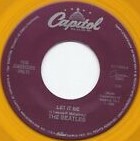 In March of 1994, the “Let It Be / You Know My Name (Look Up The Number)” single was re-released on the Capitol Cema “For Jukeboxes Only” series on yellow vinyl. This has proved to be rather hard to find in later years. In March of 1994, the “Let It Be / You Know My Name (Look Up The Number)” single was re-released on the Capitol Cema “For Jukeboxes Only” series on yellow vinyl. This has proved to be rather hard to find in later years.
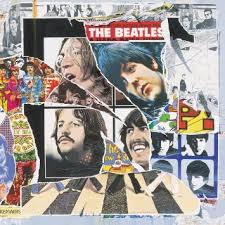 The above mentioned January 25th, 1969 rendition of “Let It Be,” with a couple John Lennon mutterings from January 31st edited on, was featured on the compilation album “Anthology 3” that came out on October 18th, 1996. This release went 3x Platinum and was the third double-album in a row from The Beatles that made it to #1 on the Billboard album charts. The above mentioned January 25th, 1969 rendition of “Let It Be,” with a couple John Lennon mutterings from January 31st edited on, was featured on the compilation album “Anthology 3” that came out on October 18th, 1996. This release went 3x Platinum and was the third double-album in a row from The Beatles that made it to #1 on the Billboard album charts.
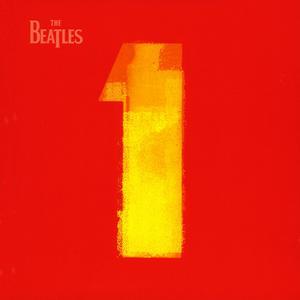 With the “20 Greatest Hits” album long out of print, Apple does this concept one better by releasing “Beatles 1,” which contains every Beatles song that topped the charts in either Britain or America all on a single disc. This was released on November 13th, 2000, this concept taking hold much better than its predecessor, topping the charts and eventually selling over 31 million copies worldwide as of 2017. A remastered version of the CD was released in September of 2011, while a newly re-mixed version came out on November 6th, 2015. With the “20 Greatest Hits” album long out of print, Apple does this concept one better by releasing “Beatles 1,” which contains every Beatles song that topped the charts in either Britain or America all on a single disc. This was released on November 13th, 2000, this concept taking hold much better than its predecessor, topping the charts and eventually selling over 31 million copies worldwide as of 2017. A remastered version of the CD was released in September of 2011, while a newly re-mixed version came out on November 6th, 2015.
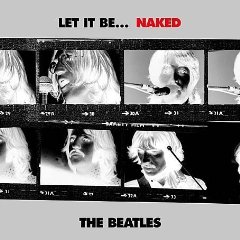 November 17th, 2003, was the release date for “Let It Be...Naked,” a project that was proposed by Paul McCartney to strip away all overdubs, the most noteworthy being Phil Spector's orchestration, to present the material as they originally intended. "Take 27a" of “Let It Be” appeared on this release as it was recorded on January 31st, 1969, but with George's guitar solo from "take 27b" edited in to make it the most perfect stripped-down performance possible. This Platinum-selling album was embraced heartily by US Beatles' fans, peaking at #5 on the Billboard chart. November 17th, 2003, was the release date for “Let It Be...Naked,” a project that was proposed by Paul McCartney to strip away all overdubs, the most noteworthy being Phil Spector's orchestration, to present the material as they originally intended. "Take 27a" of “Let It Be” appeared on this release as it was recorded on January 31st, 1969, but with George's guitar solo from "take 27b" edited in to make it the most perfect stripped-down performance possible. This Platinum-selling album was embraced heartily by US Beatles' fans, peaking at #5 on the Billboard chart.
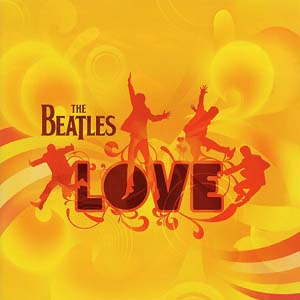 November 20th, 2006, was the release date for the compilation album “Love,” which featured a bit of “Let It Be” in the mash-up of the song “All You Need Is Love.” This album debuted at #4 on the US Billboard chart and won two Grammys in 2008, for “Best Compilation Soundtrack Album” and “Best Surround Sound Album.” November 20th, 2006, was the release date for the compilation album “Love,” which featured a bit of “Let It Be” in the mash-up of the song “All You Need Is Love.” This album debuted at #4 on the US Billboard chart and won two Grammys in 2008, for “Best Compilation Soundtrack Album” and “Best Surround Sound Album.”
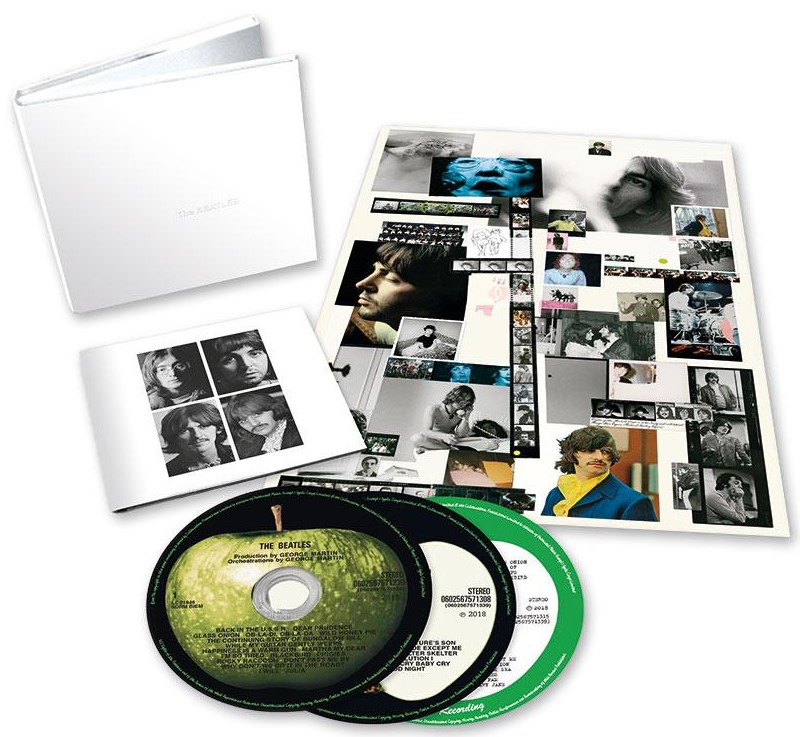 The “Super Deluxe” 6CD + Blu-ray “50th Anniversary” edition of the “White Album” featured a newly discovered ad-lib version of “Let It Be” as recorded in-between takes of their sessions for “While My Guitar Gently Weeps.” This box set was released on November 9th, 2018. The “Super Deluxe” 6CD + Blu-ray “50th Anniversary” edition of the “White Album” featured a newly discovered ad-lib version of “Let It Be” as recorded in-between takes of their sessions for “While My Guitar Gently Weeps.” This box set was released on November 9th, 2018.
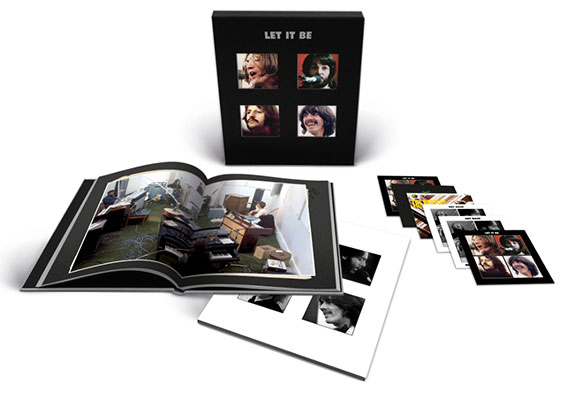 On October 15th, 2021, various editions of the "Let It Be" album were released that feature interesting versions of the song "Let It Be." The "Deluxe" 2CD edition features the newly remixed Giles Martin version of the song as well as "take 10" as recorded on January 26th, 1969 with George Martin on organ, while both the "Super Deluxe" 5CD + Blu-ray edition and the "Super Deluxe" 4LP + 1 12" EP edition also contain the final take of "Let It Be," "take 28," as recorded on January 31st, 1969, "take 27" from that day which was originally included on Glyn John's aborted 1969 "Get Back" album, and a new Giles Martin mix of the song as originally released on the single. On October 15th, 2021, various editions of the "Let It Be" album were released that feature interesting versions of the song "Let It Be." The "Deluxe" 2CD edition features the newly remixed Giles Martin version of the song as well as "take 10" as recorded on January 26th, 1969 with George Martin on organ, while both the "Super Deluxe" 5CD + Blu-ray edition and the "Super Deluxe" 4LP + 1 12" EP edition also contain the final take of "Let It Be," "take 28," as recorded on January 31st, 1969, "take 27" from that day which was originally included on Glyn John's aborted 1969 "Get Back" album, and a new Giles Martin mix of the song as originally released on the single.
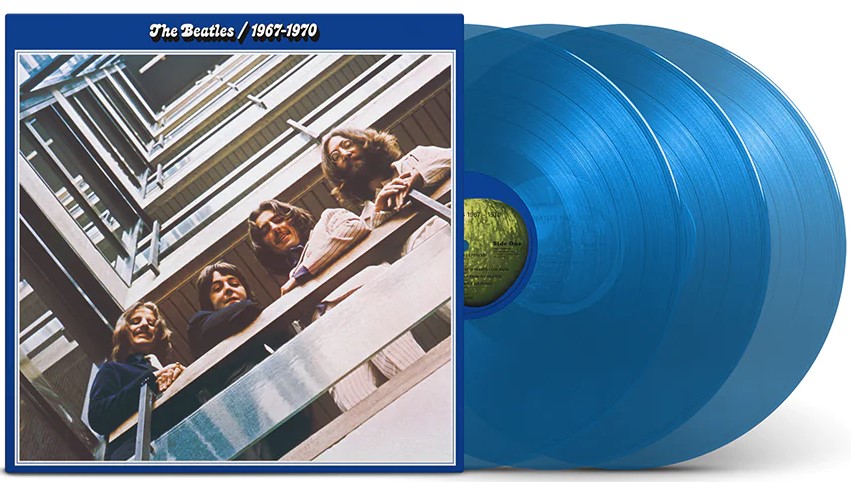 A 50th Anniversay edition of the compilation album "The Beatles / 1967 - 1970" (aka "The Blue Album") was released on November 10th, 2023, the Giles Martin stereo mix of "Let It Be" as detailed above, being included. This expanded release included 12 additional songs for a total of 38 tracks, and was made available as a double CD and as a triple vinyl release on both black and blue vinyl. A 50th Anniversay edition of the compilation album "The Beatles / 1967 - 1970" (aka "The Blue Album") was released on November 10th, 2023, the Giles Martin stereo mix of "Let It Be" as detailed above, being included. This expanded release included 12 additional songs for a total of 38 tracks, and was made available as a double CD and as a triple vinyl release on both black and blue vinyl.
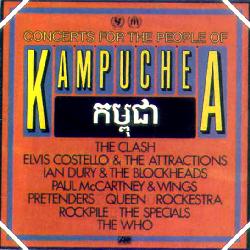 McCartney renditions of “Let It Be” are included on the following US releases: “Concerts For The People Of Kampuchea” (March 30th, 1981), "Ferry Aid" (March 23rd, 1987), “Tripping The Live Fantastic” (November 5th, 1990), “Tripping The Live Fantastic: Highlight!” (November 12th, 1990), “The Concert For New York City” (November 27th, 2001), “Back In The US” (November 11th, 2002), “Good Eveneing New York City” (November 17th, 2009), the Billy Joel album “Live At Shea Stadium: The Concert” (March 8th, 2011), “Amoeba Gig” (July 12th, 2019) and "One Hand Clapping" (June 14th, 2024). McCartney renditions of “Let It Be” are included on the following US releases: “Concerts For The People Of Kampuchea” (March 30th, 1981), "Ferry Aid" (March 23rd, 1987), “Tripping The Live Fantastic” (November 5th, 1990), “Tripping The Live Fantastic: Highlight!” (November 12th, 1990), “The Concert For New York City” (November 27th, 2001), “Back In The US” (November 11th, 2002), “Good Eveneing New York City” (November 17th, 2009), the Billy Joel album “Live At Shea Stadium: The Concert” (March 8th, 2011), “Amoeba Gig” (July 12th, 2019) and "One Hand Clapping" (June 14th, 2024).
A unique version of "Let It Be" was released as a single on August 18th, 2023, this being the version Paul and Ringo recorded with Dolly Parton for her album "Rockstar," which was later released on November 17th, 2023.
Live Performances
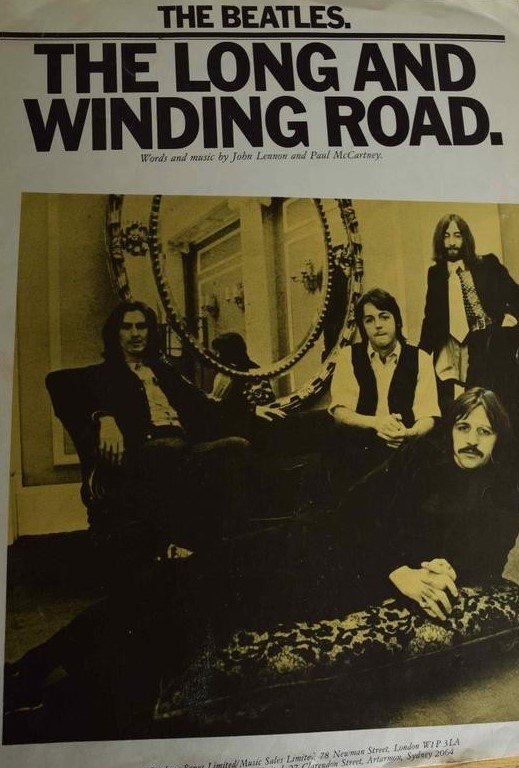 The closest thing to The Beatles performing “Let It Be” on stage would have to be the January 31st, 1969 live performances of the song at Apple Studios. As detailed above, The Beatles and Billy Preston staged themselves around a platform to be filmed performing three songs before the cameras, “Two Of Us” (without Billy Preston), “The Long And Winding Road” and “Let It Be.” Many takes of each song were performed until they nailed them perfectly, the idea being to get the best rendition down on tape and film without the need of overdubs. The closest thing to The Beatles performing “Let It Be” on stage would have to be the January 31st, 1969 live performances of the song at Apple Studios. As detailed above, The Beatles and Billy Preston staged themselves around a platform to be filmed performing three songs before the cameras, “Two Of Us” (without Billy Preston), “The Long And Winding Road” and “Let It Be.” Many takes of each song were performed until they nailed them perfectly, the idea being to get the best rendition down on tape and film without the need of overdubs.
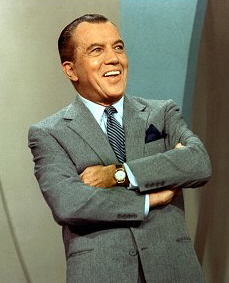 Fourteen months later, when the “Let It Be” single was finally going to be released, a 16mm color promotional film was prepared for the song to be aired on television. The audio of the single version, now containing overdubs, was synchronized to this film for consistency, George's newly recorded guitar solo not quite matching up visually with the recording. This clip of “Let It Be” was shown twice on the British show “Top Of The Pops” (March 5th and 19th) and once in America on a special edition of “The Ed Sullivan Show” entitled “The Beatles Songbook” on March 1st, 1970. An altered version of this promo clip, combining various camera angles from other takes of the song filmed on that day, is contained on the "Beatles 1+" CD + 2DVD/Blu-ray set as released on November 6th, 2015. Fourteen months later, when the “Let It Be” single was finally going to be released, a 16mm color promotional film was prepared for the song to be aired on television. The audio of the single version, now containing overdubs, was synchronized to this film for consistency, George's newly recorded guitar solo not quite matching up visually with the recording. This clip of “Let It Be” was shown twice on the British show “Top Of The Pops” (March 5th and 19th) and once in America on a special edition of “The Ed Sullivan Show” entitled “The Beatles Songbook” on March 1st, 1970. An altered version of this promo clip, combining various camera angles from other takes of the song filmed on that day, is contained on the "Beatles 1+" CD + 2DVD/Blu-ray set as released on November 6th, 2015.
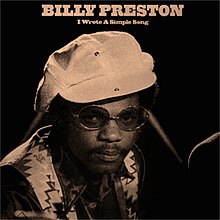 On May 13th, 1970, the “Let It Be” movie premiered in New York City, this featuring a different filmed performance of the title song. The filmed "take 27b" of “Let It Be,” which was the final performance of the entire project and included Paul's lyric “there will be no sorrow,” was used for the majority of this segment of the movie, other filmed takes being spliced in to allow for more camera angles. This editing work, however, altered the structure of the song considerably in the middle, the performance now having three choruses before the descending chords of the bridge. Also, the first set of descending chords that are played by The Beatles was cut out, the second set of chords played by Billy Preston appearing alone. On May 13th, 1970, the “Let It Be” movie premiered in New York City, this featuring a different filmed performance of the title song. The filmed "take 27b" of “Let It Be,” which was the final performance of the entire project and included Paul's lyric “there will be no sorrow,” was used for the majority of this segment of the movie, other filmed takes being spliced in to allow for more camera angles. This editing work, however, altered the structure of the song considerably in the middle, the performance now having three choruses before the descending chords of the bridge. Also, the first set of descending chords that are played by The Beatles was cut out, the second set of chords played by Billy Preston appearing alone.
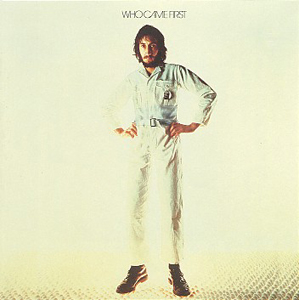 The first time Paul performed “Let It Be” in his post-Beatles career was December 26th through 29th, 1979, at the "Concerts For The People Of Kampuchea" at the Hammersmith Odeon in London, England. He performed the song with his band Wings along with the supergroup “Rockestra,” which featured noted musical celebrities such as Pete Townshend, Robert Plant, Dave Edmunds, John Bonham, John Paul Jones and many others. The first time Paul performed “Let It Be” in his post-Beatles career was December 26th through 29th, 1979, at the "Concerts For The People Of Kampuchea" at the Hammersmith Odeon in London, England. He performed the song with his band Wings along with the supergroup “Rockestra,” which featured noted musical celebrities such as Pete Townshend, Robert Plant, Dave Edmunds, John Bonham, John Paul Jones and many others.
Ever since Paul's “World Tour,” which began on September 26th, 1989 in Norway, Sweden, the song “Let It Be” has featured in every McCartney tour thereafter, the only exceptions being some unannounced gigs here and there throughout the years. He usually featured the song toward the end of the set list or during one of his encores.
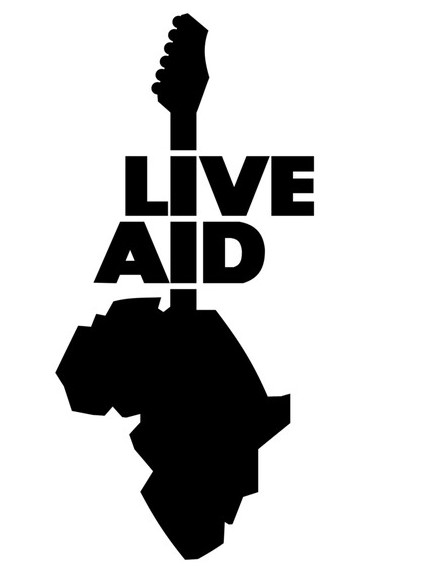 Noteworthy special events that featured Paul playing “Let It Be” include “Live Aid” at Wembley Stadium in London on July 13th, 1985. "Sting once said to me that 'Let It Be' wasn't a good choice for me to sing at Live Aid," Paul writes in his book "The Lyrics." "He thought it was implicit that action was required, and that leaving well enough alone wasn't an appropriate message on the occasion of the huge call to action that Live Aid represented. But 'Let It Be' isn't about being complacent, or complicit. It's about having a sense of the complete picture, about being resigned to the global view." Noteworthy special events that featured Paul playing “Let It Be” include “Live Aid” at Wembley Stadium in London on July 13th, 1985. "Sting once said to me that 'Let It Be' wasn't a good choice for me to sing at Live Aid," Paul writes in his book "The Lyrics." "He thought it was implicit that action was required, and that leaving well enough alone wasn't an appropriate message on the occasion of the huge call to action that Live Aid represented. But 'Let It Be' isn't about being complacent, or complicit. It's about having a sense of the complete picture, about being resigned to the global view."
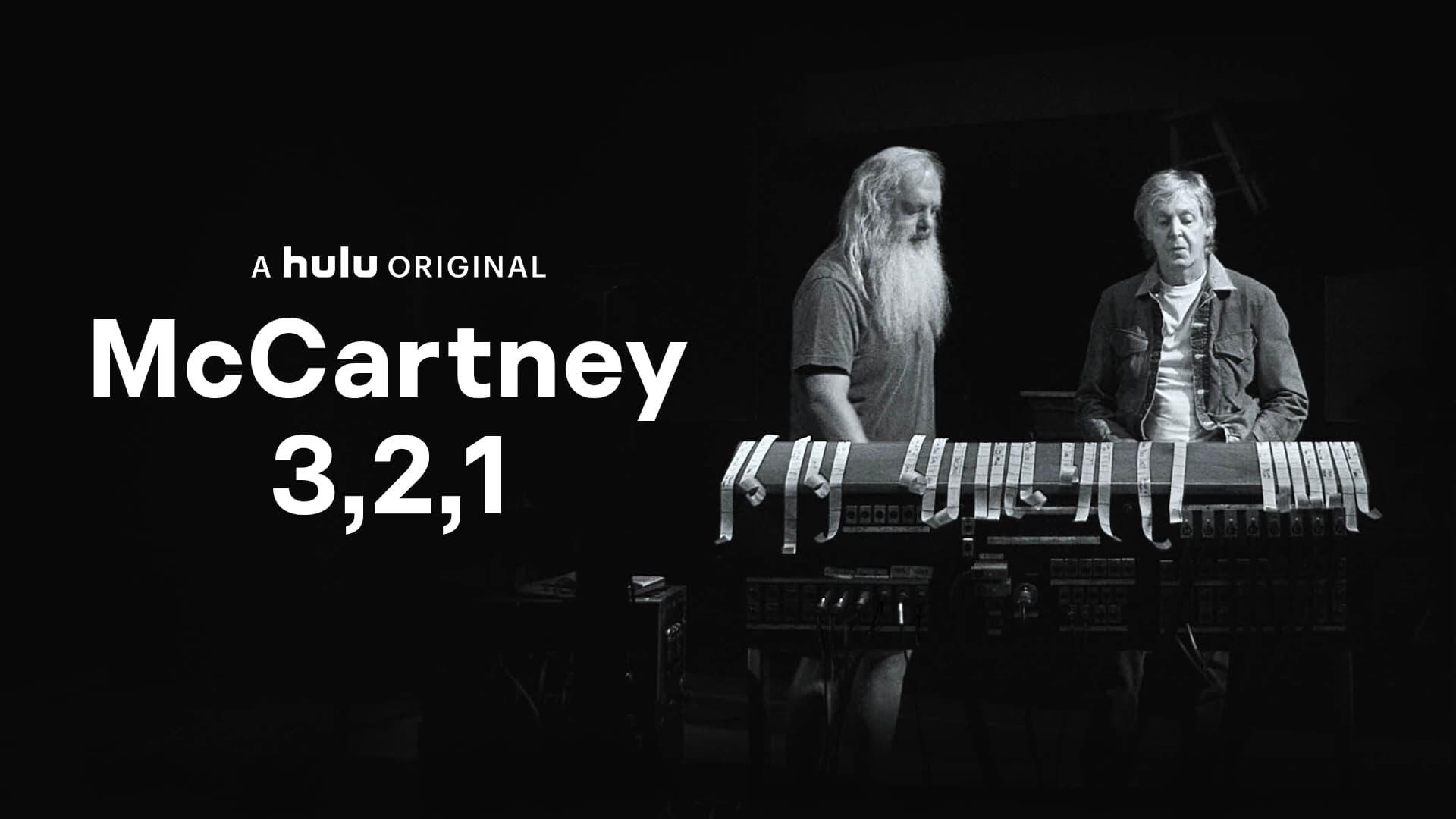 Other special performances of the song include March 15th, 1999 during Paul's induction into the "Rock And Roll Hall Of Fame" where he sang the song along with a star studded band including Billy Joel, Bruce Springsteen, Eric Clapton, Bono and Robbie Robertson. Another was during “The Concert For New York City” at Madison Square Garden on October 20th, 2001, and as an impromptu duet of the song with Billy Joel at the very last performance at the legendary Shea Stadium in New York City on July 17th, 2008 replacing Billy's "Piano Man." Also, while demonstrating how he taught himself to play the piano on the 2021 Hulu documentary series "McCartney 3,2,1," he broke into a quick rendition of "Let It Be" to show that it was a natural progression from the key of C major, this being the first finger "shape" he discovered on the instrument. Other special performances of the song include March 15th, 1999 during Paul's induction into the "Rock And Roll Hall Of Fame" where he sang the song along with a star studded band including Billy Joel, Bruce Springsteen, Eric Clapton, Bono and Robbie Robertson. Another was during “The Concert For New York City” at Madison Square Garden on October 20th, 2001, and as an impromptu duet of the song with Billy Joel at the very last performance at the legendary Shea Stadium in New York City on July 17th, 2008 replacing Billy's "Piano Man." Also, while demonstrating how he taught himself to play the piano on the 2021 Hulu documentary series "McCartney 3,2,1," he broke into a quick rendition of "Let It Be" to show that it was a natural progression from the key of C major, this being the first finger "shape" he discovered on the instrument.
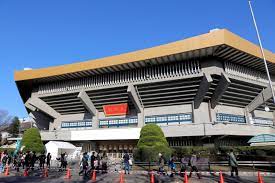 One special performance of "Let It Be" was during Paul's "Out There" tour on April 28th, 2015 at the Nippon Budokan in Tokyo, Japan, the same venue The Beatles played for five shows in June/July of 1966. "It wasn't quite fifty years since The Beatles had played there," Paul writes in his book "The Lyrics," "but it was a special show and a venue with a lot of memories. My tour crew likes to surprise me, and in this instance they gave out wristbands to everyone in the venue. I didn't know this was going to happen, but during 'Let It Be' the whole room just lit up with these swaying arms. It's sometimes difficult to continue singing at moments like that." One special performance of "Let It Be" was during Paul's "Out There" tour on April 28th, 2015 at the Nippon Budokan in Tokyo, Japan, the same venue The Beatles played for five shows in June/July of 1966. "It wasn't quite fifty years since The Beatles had played there," Paul writes in his book "The Lyrics," "but it was a special show and a venue with a lot of memories. My tour crew likes to surprise me, and in this instance they gave out wristbands to everyone in the venue. I didn't know this was going to happen, but during 'Let It Be' the whole room just lit up with these swaying arms. It's sometimes difficult to continue singing at moments like that."
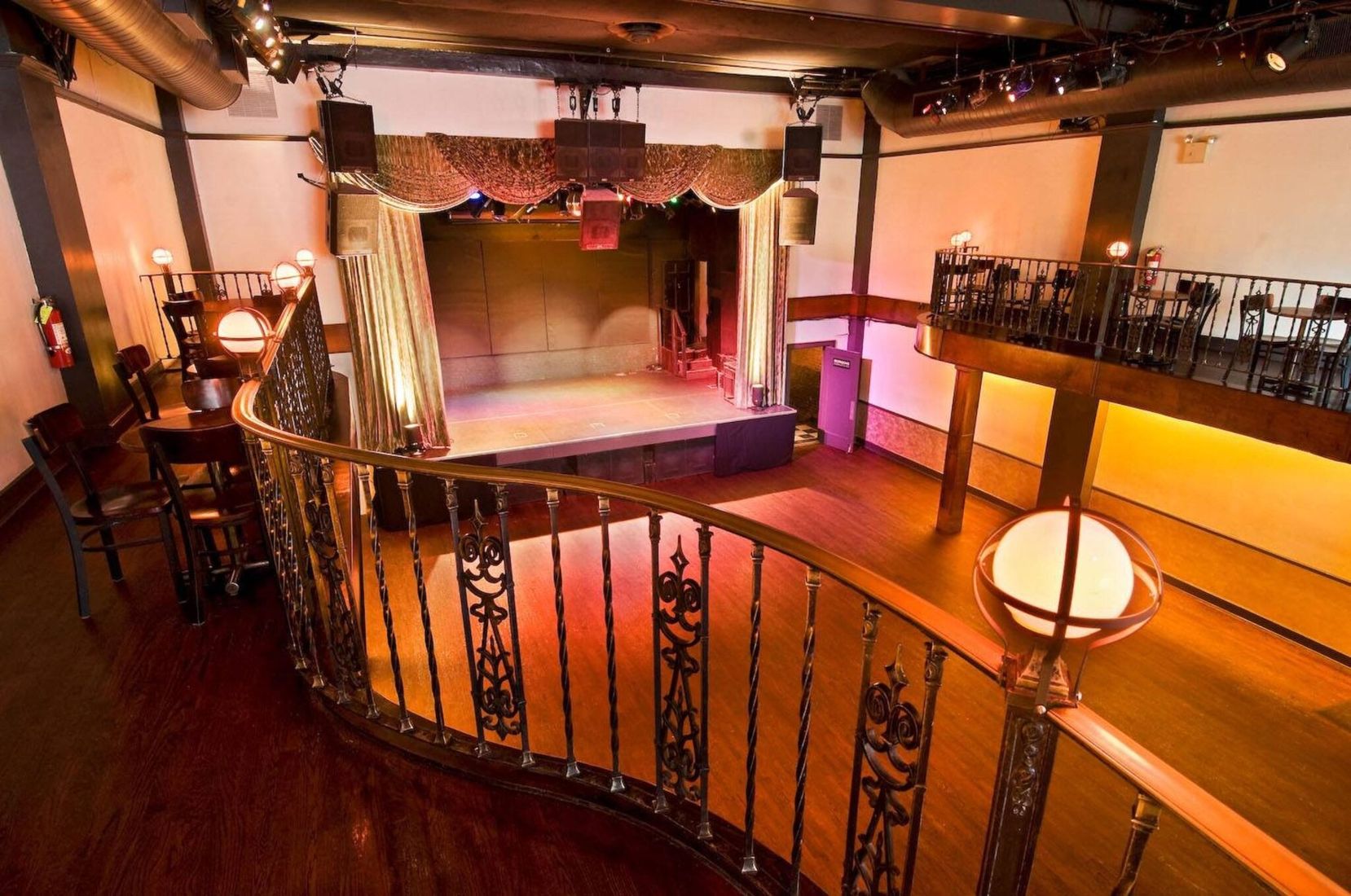 Interestingly, Paul and his group played a surprise three night residency at the Bowery Ballroom in New York City on February 11th, 12th and 14th, 2025, this final night being Valentine's Day. They played "Let It Be" at each of these performances at this quaint 575-capacity Manhattan venue. Interestingly, Paul and his group played a surprise three night residency at the Bowery Ballroom in New York City on February 11th, 12th and 14th, 2025, this final night being Valentine's Day. They played "Let It Be" at each of these performances at this quaint 575-capacity Manhattan venue.
Conclusion
For most music enthusiasts who have lived through the Beatles experience as it was happening, the song “Let It Be” “offers a soothing epitaph,” as author Kevin Moore explains it in his book “The Beatles By Ear,” “to soften the bitter and supremely frustrating ending to a tremendous saga, inexplicably canceled before its time just as it was about to explode creatively in a dozen directions.”
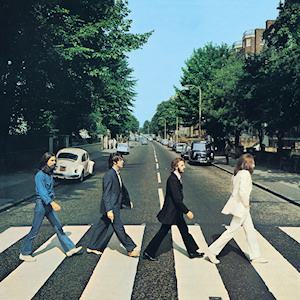 Or so it appeared. The creative and personal fracturing of The Beatles as a cohesive creative unit may have been suspected by some, but for most, “Let It Be” initially burst onto the scene as a profound newly written masterpiece from the band that had just blown our socks off with “Abbey Road.” “Let It Be” appeared to be yet another impressive new direction The Beatles were going, paving the way for other artists to continue to follow into the next decade as had happened in the '60s. Or so it appeared. The creative and personal fracturing of The Beatles as a cohesive creative unit may have been suspected by some, but for most, “Let It Be” initially burst onto the scene as a profound newly written masterpiece from the band that had just blown our socks off with “Abbey Road.” “Let It Be” appeared to be yet another impressive new direction The Beatles were going, paving the way for other artists to continue to follow into the next decade as had happened in the '60s.
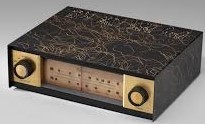 Instead, shortly after we excitedly got familiar with the song from radio airplay, and then swooned with anticipation at Ed Sullivan's tantalizing announcement on March 1st, 1970 that a full-length Beatles movie was about to be released, we experienced a rude awakening. We came to the realization that “Let It Be” was, not a glimpse into the future, but an unintended proclamation of a fond farewell. Instead, shortly after we excitedly got familiar with the song from radio airplay, and then swooned with anticipation at Ed Sullivan's tantalizing announcement on March 1st, 1970 that a full-length Beatles movie was about to be released, we experienced a rude awakening. We came to the realization that “Let It Be” was, not a glimpse into the future, but an unintended proclamation of a fond farewell.
Song Summary
“Let It Be”
Written by: John Lennon / Paul McCartney
- Song Written: February, 20th, 1968 – January 31, 1969
- Song Recorded: January 31, April 30, 1969, January 4, 1970
- First US Release Date: March 11, 1970
- US Single Release: Apple #2764
- Highest Chart Position: #1 (2 weeks)
- First US Album Release: Apple #AR-34001 “Let It Be”
- British Album Release: Apple #PCS 7096 “Let It Be”
- Length: 3:50 (single) 4:01 (LP version)
- Key: C major
- Producer: George Martin, Chris Thomas (Phil Spector)
- Engineers: Glyn Johns, Alan Parsons, Jeff Jarratt, Nick Webb, Phil McDonald, Richard Langham
Instrumentation (most likely):
- Paul McCartney - Lead and Backing Vocals, Piano (Bluthner Model One Concert Grand), Bass (1964 Rickenbacker 4001S), Electric Piano (Hohner Pianet N), maracas
- George Harrison - Lead Guitars (1968 Fender Rosewood Telecaster) (1965 Epiphone ES-230TD Casino), backing vocals
- Ringo Starr - Drums (1968 Ludwig Hollywood Maple)
- Billy Preston - Organ (Lowrey DSO Heritage)
- Linda McCartney - backing vocals
- 2 musicians - trumpet
- 2 musicians - trombone
- 1 musician - tenor saxophone
- 3 musicians - cello
Written and compiled by Dave Rybaczewski
The Beatles Iconic Rooftop Concert or a Yacht Cruise to Libya?
Concert On the Apple Corp Rooftop or Concert on a Yacht
Borrow a Luxury Yacht or Purchase New Yachts For Sale
Rumors The Beatles Owned a Luxury Yacht Named The Vagrant
|
IF YOU WOULD LIKE TO MAKE A DONATION TO KEEP THIS WEBSITE UP AND RUNNING, PLEASE CLICK BELOW!
Sign Up Below for our MONTHLY BEATLES TRIVIA QUIZ!
|